- X (Twitter)


A Comprehensive Guide to Sri Lankan Festivals and Celebrations
Sri Lanka, the jewel of the Indian Ocean, is filled with a vibrant tapestry of festivities and celebrations that are as diverse as the island’s rich culture and history. From the glittering lights of Diwali to the rhythmic beats of traditional Kandyan dance during the Esala Perahera, these gatherings not only honour age-old traditions but also invite the world to partake in the warmth of Sri Lankan hospitality.
You can witness the mesmerizing folk dances, indulge in traditional delicacies that will tantalize your taste buds, or immerse yourself in cultural differences no matter wherever or whenever you go. These Sri Lankan festivities are an experience like no other, where you can truly appreciate the beauty and diversity of this magnificent country. Furthermore, if you are interested in Sri Lankan culture & traditions, even if you are a Sri Lankan, visiting these festivities will be a great opportunity for you to explore them.
Join us on a journey through our enchanting land, where every celebration is a symphony of colours, flavours as well as cherished customs.
An insight into Sri Lanka.
Sri Lanka, also known as the pearl of the Indian Ocean, is an island nation in South Asia and has a rich cultural background. Its history spans over 2,500 years, with ancient kingdoms like Anuradhapura and Polonnaruwa. Buddhism, practiced by the majority of the population, has deeply influenced the culture, architecture, and way of life and Hinduism, Islam, and Christianity are also present.
Traditional Sri Lankan culture is vibrant and diverse, with influences from India, Southeast Asia, and colonial powers like the Portuguese, Dutch, and British. Sinhalese and Tamil are the main ethnic groups, each with its own language and cultural traditions. Sri Lanka is home to Christians, Muslims, and Burgers besides Sinhalese and Tamil, making it a fusion of ethnic groups.
Sri Lankan traditions encompass a rich blend of cultures, celebrated by Sinhalese, Tamils, Christians, and Muslims. Festivals like Sinhala and Tamil New Year, Vesak, and Thai Pongal are cherished by the Sinhalese and Tamil communities. Christians and Muslims celebrate festivals like Christmas and Haji integrating many Christian and Muslim traditions.
Traditional arts, including dance, music arts, and even handcrafted items, are valued and practiced by people from all backgrounds. Sri Lankan cuisine, renowned for its exquisite flavours, embraces a variety of dishes reflecting the culinary diversity practiced by the island’s multicultural population.
All things considered, there is no doubt that Sri Lankan culture is a unique combination of rich traditions, diverse religious backgrounds, and age-old heritage.
The bond between cultural differences and numerous Sri Lankan festivities.
Cultural differences in Sri Lanka are intricately woven into its diverse festivities. The country’s multicultural makeup, including various ethnic groups and religions, contributes to a wide array of celebrations throughout the year.
Each group brings its unique traditions and customs to the table. For instance, religious diversity results in festivals like Vesak and Deepavali, while ethnic traditions give rise to celebrations like Thai Pongal and New Rice Festival. Regional variations and cultural fusion add depth to these festivities, making Sri Lankan celebrations a colourful blend of heritage and customs. From clothing and cuisine to rituals and practices, these cultural differences enrich the festive landscape of Sri Lanka, creating a vibrant and enchanting combination of celebrations.
This article will allow you to explore the vibrant world of Sri Lankan festivals through a journey divided into various categories. Brace yourselves for an exciting exploration!
National and secular Festivals
In Sri Lanka, numerous national festivals hold significant meaning for its people, reflecting the rich cultural diversity and heritage of the nation. These celebrations not only strengthen the sense of national identity but also foster unity and understanding among the diverse communities that call Sri Lanka home.
Independence day
National Day, also referred to as Independence Day, is a national holiday observed in Sri Lanka every year on February 4, in honour of the nation’s political independence from British rule. It is commemorated across the nation through a flag-hoisting ceremony, dances, parades, and performances. The president hoists the national flag and gives a speech that is broadcast to the entire country during the major ceremony, which typically takes place in Colombo.
One of the few secular official holidays observed by all people in Sri Lanka, regardless of faith, gender, or skin colour is Labour Day. Colourful parades, enormous labour union rallies, political speeches, and similar activities are the main Labor Day celebrations in Sri Lanka. Instead of only being concerned with fun and games like in other nations, it is considerably more concerned with serious labour-related issues. Employees receive a day off to celebrate the day.
Sinhala and Tamil New Year (Aluth Avurudda)
Sinhala and Tamil New Year is perhaps the most widely celebrated festival in Sri Lanka. Although many countries celebrate the new year on January 1st, Sinhalese and Tamils celebrate the new year in April based on the sun’s movement from the Meena Rashiya (House of Pieces) to the Mesha Rashiya (House of Aries). It brings families together for a day of feasting, games, and rituals. Preparations include cleaning and decorating homes, making sweet treats, and wearing new clothes. Traditional games like ‘kotta pora’ and ‘Raban pada’ are played, and the festival concludes with applying oil on the head which is usually done at village temples. Awurudu Uthsawaya, a celebration of the new year that includes games and other activities, is also held throughout the nation.
New Rice Festival
The Aluth Sahal Mangalya or the New Rice Festival celebrates the cocollection of the very first harvest of paddies. After being harvested, threshed, and winnowed, the first batch of fresh rice is presented to the Buddha and other deities. Farmers all around the nation can only gather their harvest and start their new rice festivals in their villages following the new rice festival at Sri Dalada Maligawa and offering rice to the holy tooth relic. This festival emphasizes the nation’s agricultural past and the close bond that exists between the Sri Lankan people and the land they farm.
Thai Pongal
In Sri Lanka, Thai Pongal is a vibrant and culturally rich harvest festival primarily celebrated by the Tamil Hindu community. It usually takes place in January, signifying gratitude for the harvest. Families come together to cook the Pongal dish, made of freshly harvested rice, jaggery, and milk, in clay pots. The boiling over of Pongal symbolizes prosperity and abundance. The festival also holds religious significance, with devotees offering prayers to the Sun, thanking him for agricultural blessings. Homes are decorated with colourful kolam designs, and offerings to the sun and god are made at every Hindu home and in Temples.
Religious Festivals
There are religious festivals celebrated throughout the year in Sri Lanka because there are four different nationalities within the country. Buddhists, Catholics, Christians, Hindus, and Muslims all observe diverse religious holidays that each have their unique features. Here is a list of religious holidays organized by the respective ethnicity.
Buddhist festivals.
Buddhist festivals often involve observing Poya days, which are full moon days of the calendar and hold special significance in Buddhism. Peraharas are grand processions featuring traditional music, dance, and beautifully decorated elephants. Alms giving, or offering food to monks and the needy, is a fundamental Buddhist practice and is often celebrated during festivals. These traditions reflect the rich cultural and spiritual heritage of Buddhism. Below are some of the most significant Buddhist festivals.
Vesak, commemorating the birth, enlightenment, and death of Lord Buddha, is a significant Buddhist festival celebrated with great devotion. Typically occurring in May, it involves decorating temples, homes, and streets with colourful illuminations such as Vesak Pandols and lanterns, visiting temples, and offering alms to monks. Buddhist devotees engage in various religious activities like observing Dasa Sil and giving alms to the needy. Ganagarama Vesak zone is the best place to see Vesak decorations as said by many.
Poson celebrates the arrival of Buddhism in Sri Lanka thanks to Mahinda Thero and is annually celebrated in June. The mountain of Mihintale, where Arahath Mahinda Thero preached Buddhism to King Devanampiyatissa of Sri Lanka, is the center of the religious event. As was also indicated in Vesak, during Poson, Buddhists engaged in many religious activities and Dansals. And also, distributed food and other items.
Esala Perahera
Kandy Esala Perahera is one of the most famous and vibrant religious processions in the world. Held annually in Kandy and throughout Sri Lanka, during July or August. This ten-day event pays homage to the sacred tooth relic of Lord Buddha. The procession features hundreds of drummers, thousands of dancers, and beautifully adorned elephants parading through the streets. It’s a mesmerizing spectacle that attracts visitors from all over the world.
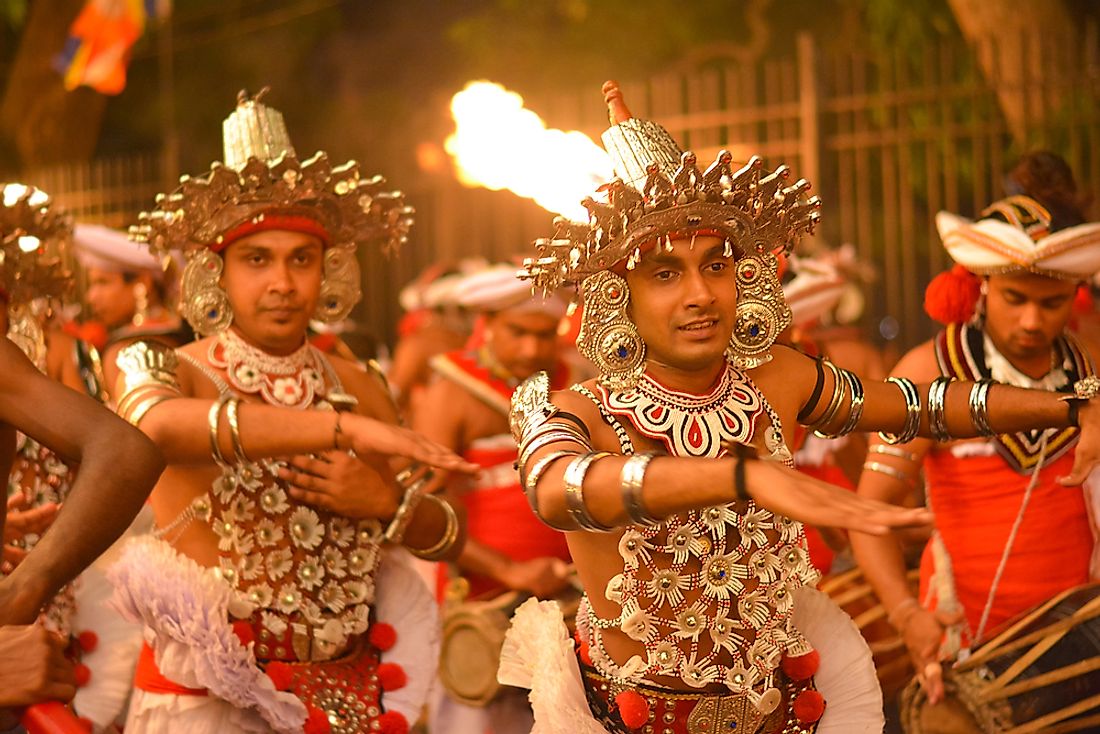
Hindu Festivals.
In Sri Lanka, Hindu religious festivities are vibrant and diverse, reflecting the rich cultural heritage of the Tamil nation. The Hindu community, primarily comprising Tamil people, celebrates various religious festivals with great enthusiasm and devotion. During these festivities, Kovils are adorned with lights and flowers. And families come together to offer prayers as well as exchange sweets and gifts. These celebrations not only hold religious significance but also foster a sense of unity and cultural pride among the Hindu population in Sri Lanka.
Deepavali, also known as Diwali, is the festival of lights celebrated by Sri Lanka’s Tamil Hindu community. It symbolizes the triumph of light over darkness and good over evil according to Hindus. It typically takes place in October or November and lasts five or six days. The Tamils use oil lamps to illuminate their residences, temples, and places of business during the festival. They also give gifts to friends, relatives, and even business associates.
Maha Shivaratri
Maha Shivaratri, a major Hindu festival, is celebrated in reverence of Lord Shiva. Devotees fast, meditate, and offer prayers throughout the night, honouring the cosmic dance of creation and destruction that Lord Shiva represents. The festival signifies spiritual awakening and the triumph of light over darkness. Cultural celebrations include music, dance, and special temple rituals, emphasizing devotion and the divine aspect of life.
Navaratri in Sri Lanka, much like in other Hindu communities, is a vibrant nine-night festival dedicated to Goddess Durga and her various incarnations. During these auspicious days, devotees engage in fasting, prayer, and elaborate rituals to honour the goddess’s divine energies. Families and communities unite in their devotion, celebrating the goddess’s power, wisdom, and grace.
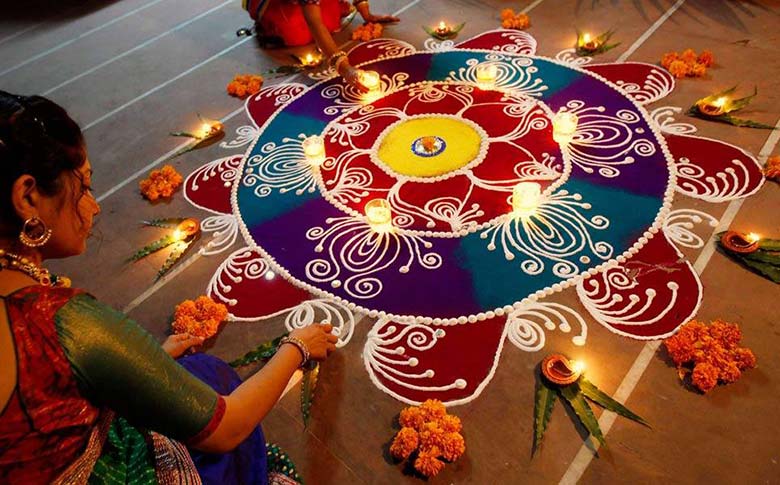
Christian Festivals.
In Sri Lanka, Christian and Catholic festivals are celebrated with great respect and joy. They also showcase the religious diversity of the country. Christian and Catholic festivals not only hold religious importance but also strengthen the bonds of community and faith among the followers. And also, creating a harmonious blend of religious celebrations in Sri Lanka.
Christmas is a significant Christian and catholic festival, observed with religious services, carol singing, and vibrant decorations in churches and homes. They commemorate the birth of Jesus Christ by gathering at churches and praying together. And also, sharing the spirit of love and giving. It is also a nationwide holiday in Sri Lanka.
Easter marks the resurrection of Jesus Christ and is celebrated with religious processions, church services, and family gatherings. Devotees participate in prayer sessions, reflecting on the spiritual significance of the occasion. Traditional Easter meals are shared, and communities come together to rejoice in the hope and renewal that Easter symbolizes.
Feast of St. Anthony
For Catholics, the Feast of St. Anthony in June is a prominent event. Pilgrims from all over the country flock to St. Anthony’s Shrine in Colombo , seeking blessings and participating in colourful processions. The atmosphere is filled with a sense of faith and devotion as devotees express their prayers and gratitude.
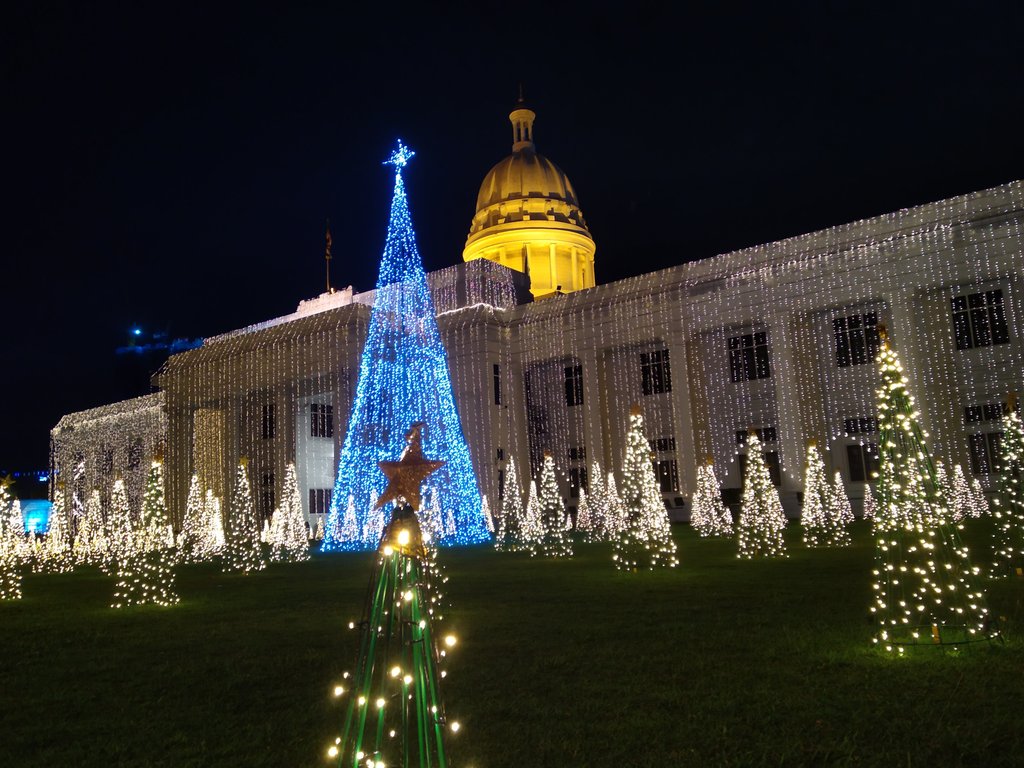
Islamic Festivals
In Sri Lanka, the Islamic community celebrates several festivals that hold significant religious and cultural significance. For Islamics their festivals serve not only as occasions for religious observance but also as opportunities for the community to come together, strengthen bonds, and extend acts of kindness and generosity to others, promoting a sense of unity and compassion.
Ramadan (Eid al Fitr)
Eid al Fitr is celebrated to commemorate the end of fasting in the holy month of Ramadan. It’s one of the biggest Islamic festivals. Following special prayers in mosques, devotees celebrate with dinners and get-togethers with loved ones. Among the many significant parts of this happy event are sharing meals and donating to the less fortunate.
Eid al-Adha
Another prominent Islamic festival is Eid al-Adha, also known as the Feast of Sacrifice. It recalls the Prophet Ibrahim’s willingness to sacrifice his son as an act of obedience to God. On this day, families come together to offer prayers at mosques and perform the ritual of sacrificing animals, and sharing the meat with family, friends, and those in need.
Regional festivals
Apart from the other categories, I would like to elaborate on regional festivals celebrated in Sri Lanka. These festivals are deeply rooted in tradition and spirituality. They offer a fascinating glimpse into the distinct cultures that thrive within different regions of the country. Sri Lanka’s regional festivals showcase a harmonious blend of religious piety, vibrant rituals, and communal unity. Each festival, unique to its specific locale, weaves a compelling narrative of Sri Lanka’s cultural mosaic, inviting travellers and enthusiasts alike to immerse themselves in the enchanting tapestry of the island’s traditions.
Kataragama Perahera Festival,
Held in the southeastern town of Kataragama , this is a mesmerizing blend of Hindu and indigenous rituals. The festival falls in July or August and lasts for several weeks and is celebrated annually. Not only Hindus but also Devotees from other communities come together to honour Lord Kataragama. They seek blessings and display incredible acts of atonement, like walking on hot coals. The atmosphere is filled with fervent prayers, traditional music, and colourful processions, making it a truly captivating experience.
Madhu Church Feast
Celebrated in the Mannar district, it showcases Sri Lanka’s Catholic heritage. Pilgrims flock to the shrine of Our Lady of Madhu, a revered Catholic site, for prayers, processions, and religious ceremonies. This festival not only signifies religious devotion. But also emphasizes unity and harmony among the diverse ethnic and religious groups in the region.
These festivals sum up the spirit of Sri Lanka’s multiculturalism, making them remarkable cultural experiences.
Feasting Across Cultures: Sri Lanka’s Diverse Festival Cuisine
View post on imgur.com
If I am to choose my favorite thing about Sri Lankan festivals, without a doubt it will be Sri Lankan food. You must know the rave about Sri Lankan cuisine. As a Sri Lankan myself I am never tired of eating these delicacies. It becomes way more diverse and tastier when the festivals begin. Each ethnicity of this country has its unique food that will leave you mesmerized once tried.
Sinhalese festivals feature dishes like Kiribath, a creamy rice pudding, and the crunchy Kokis, while Kavum and Athirasa add a sweet touch to the celebration. Tamil festivals showcase spicy curries, and many sweets. Especially Pongal, a flavorful dish made with rice and grains which symbolises abundance. The Muslim community contributes to the table with their iconic Biriyani, a fragrant rice dish layered with marinated meat, and delectable sweets like Watalappam, a rich jaggery custard. The Christian community’s festivals feature colourful delights, combining European and Sri Lankan flavours such as Christmas cake and wine as well as roasted chicken. Food is one common thing that combines us regardless of our ethnicity. We eat Kiribath when there is a new year and eat Watalappam during Ramadan.
Through the act of preparing, sharing, and savouring these traditional dishes, people from different backgrounds come together, celebrating their diversity and appreciating the richness of each other’s heritage. In essence, the rich culinary heritage of Sri Lanka’s festivals not only tantalizes taste buds but also nourishes the spirit of unity, acceptance, and togetherness, making every celebration a testament to the nation’s cultural mosaic.
There are so many fun celebrations in Sri Lanka that highlight many facets of its culture and history! You will undoubtedly fall in love with this colourful and joyful nation. Hope that this article has expanded your knowledge of Sri Lankan Festivals and Celebrations. Please let us know which one you liked the most. We are eager to find out.
Related Posts
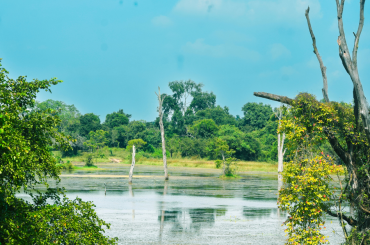
Wasgamuwa National Park | Best route to make it memorable
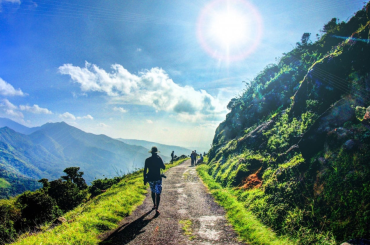
Riverston- Exploring the hidden gem in Knuckles

Unraveling the Impact of El Niño on Sri Lanka’s Climate

The arrival of Sinopec 1st fuel cargo and expectations
Type above and press Enter to search. Press Esc to cancel.
10 Festivals in Sri Lanka To Experience Local Culture and Traditions
1. sinhala and tamil new year.
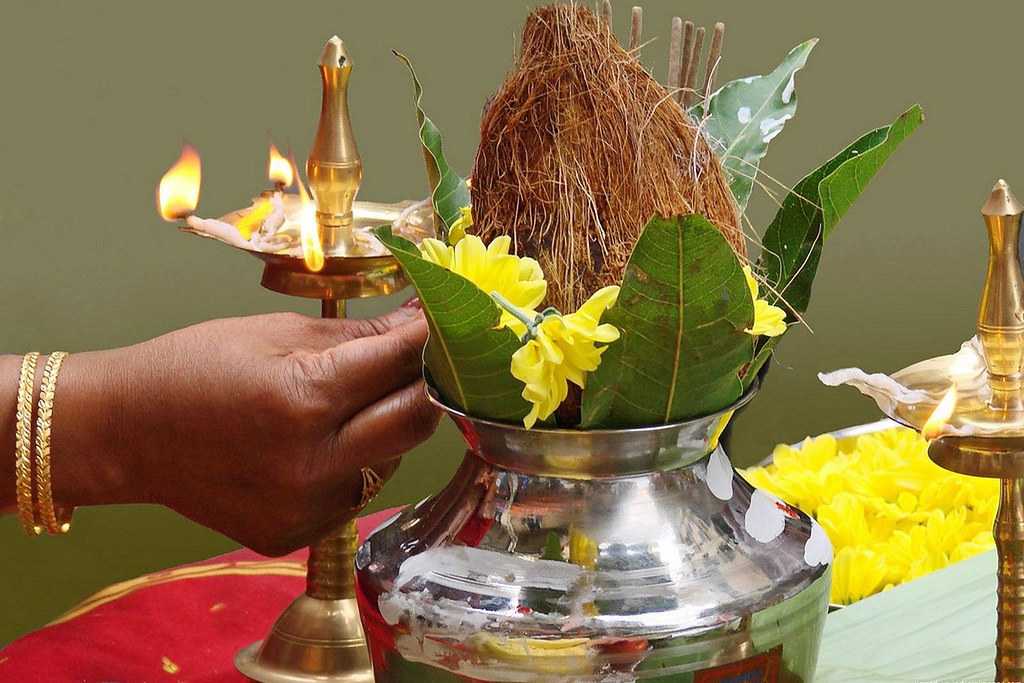
Date: 13th or 14th April, every year Where: Throughout Sri Lanka

Date: Full moon of May, 5 May 2023 Where: Celebrated throughout Sri Lanka but on a larger scale in Colombo
3. Poson Festival

Date: 3 June 2023 Where: Anuradhapura and Mihintale
4. Kandy Esala Poya Perahera

Date: Full moon of either July or August, 21 August - 23 August 2023 Where: Kandy
5. Kataragama Festival

Date: July or August Where: Kataragama town
6. Vel Festival

Date: July or August Where: Colombo
7. Deepavali

Date: October or November Where: Throughout the island
8. Duruthu Perahera
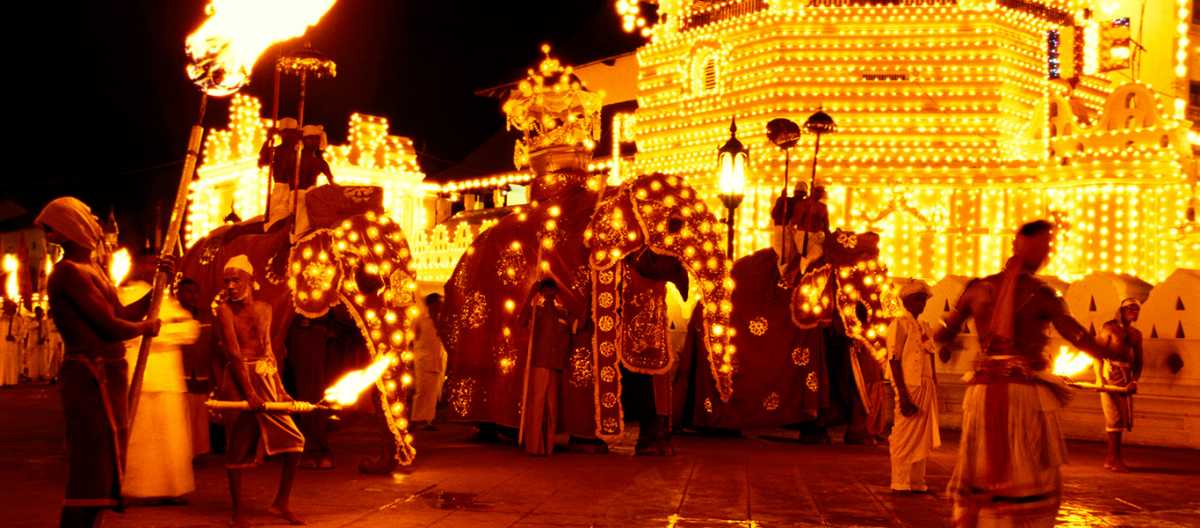
Date: Full moon in January Where: Colombo
9. Nallur Festival

Date: Full moon in January Where: Jaffna
10. Thai Pongal

Date: Mid of January Where: Throughout the island
This post was published by Deepshri Mishra
Share this post on social media Facebook Twitter
Sri Lanka Travel Packages
Compare quotes from upto 3 travel agents for free
Best of Sri Lanka in 5 Nights: Pinnawala Elephant Orphanage Included
7 nights sri lanka family holiday package with wildlife safari, sri lanka budget tour package: climb sigiriya rock fortress, sri lanka ramayana trail tour package, quick sri lanka 4 nights tour package, soulmate special sri lanka honeymoon package, related articles.

Art & Culture
Dances of Sri Lanka: Culture, History and Where To Watch Them

Experiences
Sri Lanka in March: Weather, Things to Do, Best Places To Visit
Sri Lanka in February: Weather, Things To Do
Street Food in Sri Lanka For A Mouth-Watering Experience
Sri Lanka in November: Weather ,Things To Do, and Festivals
Sri Lanka in January: Guide to Weather, Things to do ,and Festivals
5 Spas in Sri Lanka For A Relaxing And Revitalising Experience
5 Casinos in Sri Lanka For An Exciting Evening
Music Of Sri Lanka: Best Bands, Events, Music Festivals in Sri Lanka
Sri Lanka In December: Weather and Places To Explore The Beautiful Island Nation
Sri Lanka in August: Weather, Things to Do, Places To Visit
Sri Lanka in September: Weather, Things to Do, Places To Visit
Is Sri Lanka Safe? - Coronavirus in Sri Lanka Updates & Countermeasures

Fairs & Festivals
Celebrating Christmas in Sri Lanka 2023: Things to do on your Christmas getaway
Nightlife in Sri Lanka - 19 Marvellous Places to Have a Fantastic Night!

Trekking in Sri Lanka

Air India, Indigo Drop Rescheduling/Cancellation Charges On Flights To/From Colombo In Wake Of Attacks
Weather in Sri Lanka in May - Temperature, Climate & Things to Do
14 Yoga Retreats in Sri Lanka for Inner Peace and Well-Being

Romantic & Honeymoon
Honeymoon in Sri Lanka For A Perfect Romantic Getaway With Your Loved One!

Travel Tips
Online Visa for Sri Lanka - Procedure, Fees and Eligibility
12 Water Sports in Sri Lanka For An Exciting Adventure
Architecture of Sri Lanka To Explore Local History
Dresses of Sri Lanka: Explore Unique Clothes of Sri Lanka
Snorkeling in Sri Lanka - Top Spots, Best Time & More

Backpacking
Buses in Sri Lanka : Routes, Fares and Bookings

Wildlife & Nature
Elephants in Sri Lanka: Ethical Places To Visit To Meet Elephants
Wildlife in Sri Lanka - Best of Sri Lanka's National Parks
Sri Lanka in June- Weather, Things to do, and Festivals
Religion in Sri Lanka: Buddhism, Hinduism and Other Major Religions
Comments on this post
Browse package collections, sri lanka package collections.
Sri Lanka Honeymoon Packages
Sri Lanka Family Tour Packages
India Sri Lanka Tour Packages
Top Listed Packages
Ramayana Tour of Sri Lanka for 6 Nights
Browse Hotel Collections
For special purposes.
Best Beach Resorts in Sri Lanka
Top Places in Sri Lanka

Get the best offers on Travel Packages
Compare package quotes from top travel agents
- India (+91)
*Final prices will be shared by our partner agents based on your requirements.
Log in to your account
Welcome to holidify.
Forget Password?
Share this page
- Sri Lanka Local Tours - Different Taste of Sri Lanka Travel

Private & Small Group Sri Lanka Tours
100% Tailor-made Sri Lanka Holiday with Local Guides & Drivers
Stay in High-quality Accommodation with Our Sri Lanka Local Tour Packages
- Sri Lanka Sightseeing Tours
- Sri Lanka Family Tours
- Sri Lanka Adventure Tours
- Sri Lanka Honeymoon Tours
- Sri Lanka Beach Holidays
- Sri Lanka Day Trips & Excursions
- Sri Lanka Tailor Made Tours
- Sri Lanka Attractions
- Sri Lanka Travel Guide
- Search for:
Sri Lanka Travel Guide & Information
Sri lanka traditional festivals – celebrations of the vibrant culture.
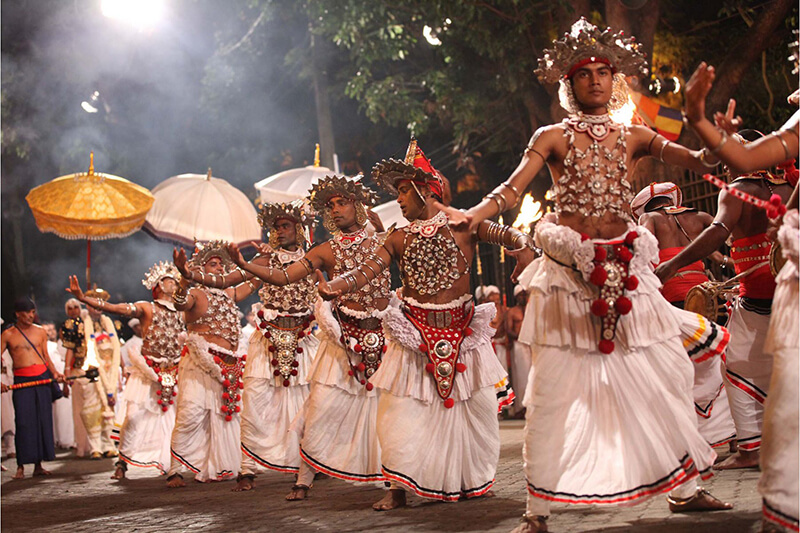
Millions of people call Sri Lanka home and its residents belong to four main religions: Buddhism, Hinduism, Islam and Christianity whose traditions, value, customs, religious beliefs, myth, and folklore are dissimilar. As a result, a large number of festival events take place in Sri Lanka every year in various ways. These celebrations have both cultural and religious significance for the people and are deeply intertwined with the lives of the people. Sri Lanka Local Tours lists some of the well-known and nationwide Sri Lanka traditional festivals for you to consider joining while staying in this nation island.
Biggest Sri Lanka Traditional Festivals
People may encounter the word “poya” in the name of many Sri Lanka celebrations and festivals. Every poya (full moon) day in a month is a holiday in Sri Lanka. The official full-moon day for poya does not always overlap with the same designated full-moon day in the regular lunar calendar used in East Asia countries. Thus, the poya day may be a day earlier or later than that shown on usual lunar calendars.
Vesak Poya – Festival of lights
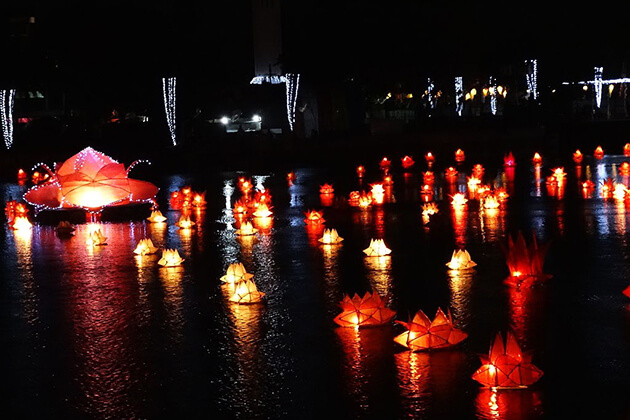
Kandy Esala Poya Perahera
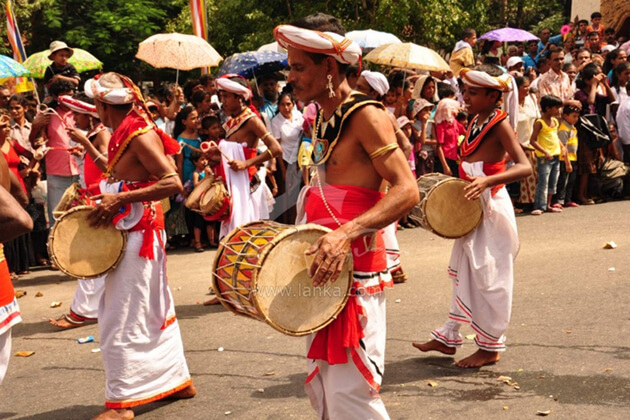
Poson Poya Festival
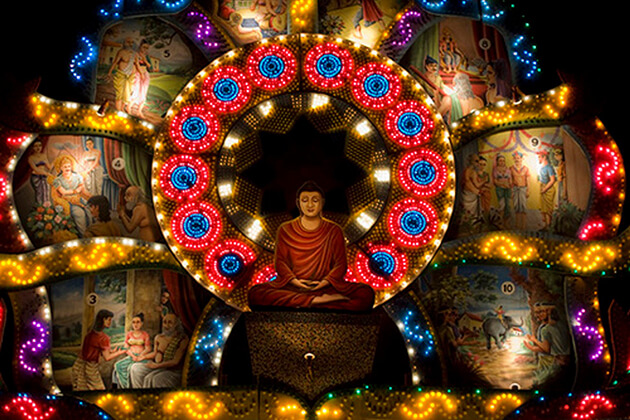
Unique Sri Lanka Traditional Festivals
Maha shivarathri – festival of shiva.
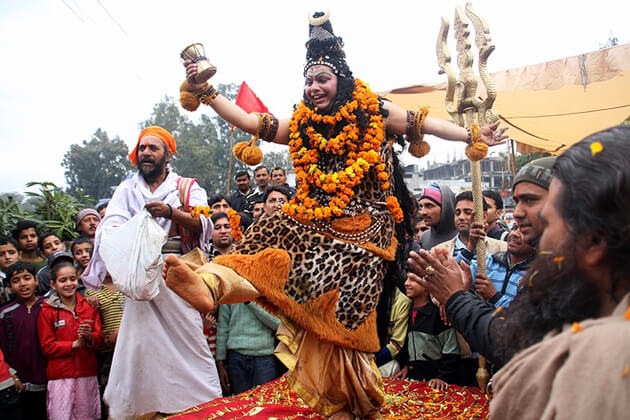
Deepavali Festival
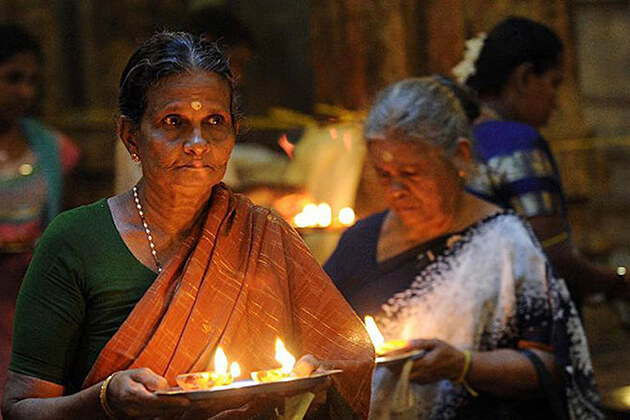
Widely Celebrated Sri Lanka Traditional Festivals
Sinhala and tamil new year.
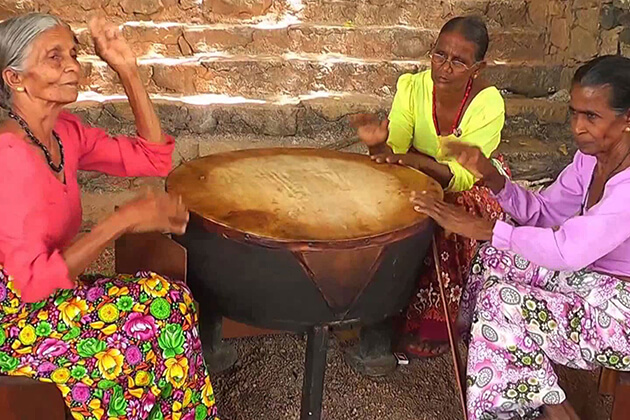
Thai Pongal
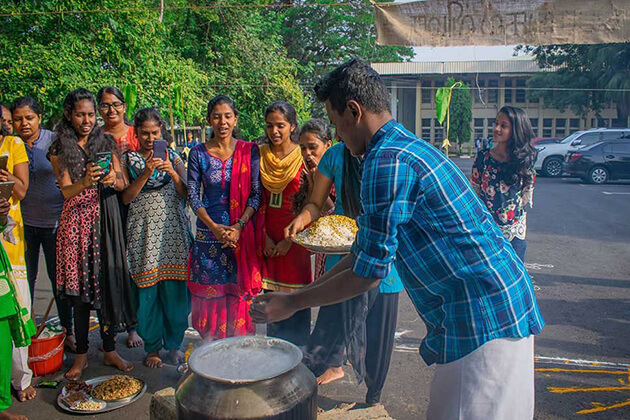
Ramadan and Eid
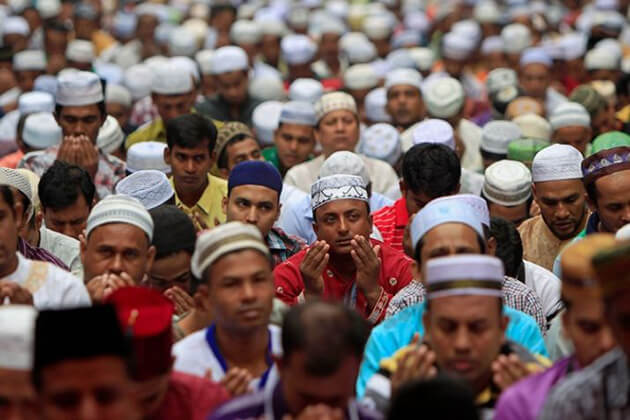
Tips for Visiting Sri Lanka in Festival Season
The diverse spiritual life of Sri Lankan people is showcased in a range of traditional festivals that preserve and develop and colorful culture and tradition of the country. Hence, international visitors are advised to dress up modestly and avoid wearing shorts, shorts skirts whenever you joining the festival. Further, important and huge celebrations witness enormous visitors congregate and then the lodging service is always scarce and at the premium price. For this reason, as you plan to visit Sri Lanka, you should book it in advance in order not to pass up the opportunity to indulge in exceptional experiences.
Stephen Nguyen
One thought on “ sri lanka traditional festivals – celebrations of the vibrant culture ”.
Top Main Festivals in Srilanka Sri Lanka Buddhist Festivals Vesak Poya – Festival of lights On the full moon of May – the month of the lunar month of Vesak, Vesak Poya Festival is organized with the aim to commemorate the birth, the enlightenment found and the death of Gautama Buddha, the founder of Buddhism. During this festival time, all regions in Sri Lanka are decorated with the lights; the villages in remote places are lit by tiny clay coconut oil lamps while in big cities like Colombo, Kandy, Galle, all cities become a sparkling wonderland with Thoranas – electrically-lit pandals used with beautifully decorated panels describing events occurring in the Buddha’s life and street, shops and the front houses with the myriad colorful lanterns called Vesak kudu . They are reasons why Vesak Poya is called a Festival of lights. During a week of Vesak festival, some religious and alms-giving activities happened. On the roadside, tourist can be caught attraction by the rows of Buddhist devotees wearing white clothes, offering free foods and drinks. Poson Poya Festival If Vesak Poya festival as the most important festival for Buddhists – a celebration of the birth and death of the founder of Buddha, PosonPoya festival is the second essential festival for Buddhists which is organized to commemorate the introduction of Buddhism in Sri Lanka in the third century BC. PosonPoya is quite similar with the Vesak festival; the Buddhist devotees also wear while clothes and pilgrimage to sacred places like Buddhist temples or climb many steps to the top of the Mihintale rock in Mihintale, the landmark in Anuradhapura. Kandy Esala Poya Perahera – Festival of the Tooth Known as the festival of the Tooth, Kandy Esala Poya Perahera festival takes place in the Temple of The Tooth annually on the full moon of June to show the faithfulness to one of the only two Gautama Buddha’s survival scared tooth relic. During the festival time, there are plenty of exciting activities happened there, some of which are traditional and cultural local dances, the street processions to admire the pomp. Especially, in this festival, tourist can sightsee the giant sparkling elephants dressed up with various garments and gems. Sri Lanka Hindu Festival MahaShivarathri – Festival of Shiva Maha Shivaratri isha festival to commemorate the Hindu God Shiva in June and the Hindu Shiva temples around the island- Sri Lanka. The Shiva statues are showered in milk and honey and covered in red vermillion to show the purification of the soul. Whereas, the Hindu devotees will take a purification bath at dawn and attend mediation rituals with the help of the Panchaksharamatra. Deepavali / Diwali – The light festival of Hindu Diwali is the celebration of Lord Rama’s defeat of Ravana, signifying the war of light against darkness. If Vesak is illustrated as the festival of light of Buddhist, Diwali is known as the light festival of Hindu for these reasons. During the festival, homes, buildings, and streets are illuminated with light of the tiny clay lamps. Hindu devotees will take in new clothes and send each other gifts, frequently of sweets. Kataragama Festival Kataragama Festival is a Hindu festival held annually in the Southern town of Kataragama, appealing to thousands of pilgrims comprising Hindus, Muslims, and Veddas. The pilgrims gather in this town to carry out their vows or get knowledge and guidance from Lord Kataragama. Besides, when taking part in this festival, tourists can see a procession with elephants, regional dancers, singers, musicians, jugglers playing the thundering drums and chanting.
Comments are closed.
Username or email address *
Password *
Remember me Log in
Lost your password?

The Majestic Esala Perahera Festival: A Celebration of Sri Lanka’s Rich Cultural Heritage
Are you searching for an adventure that immerses you in rich cultural heritage? Consider the Esala Perahera Festival , one of Sri Lanka’s most vibrant celebrations dating back centuries .
This blog post will guide you through this majestic event, from its historic origins to its grand procession and festivities . Ready for a journey into Sri Lankan culture like no other? Let’s dive in!
Table of Contents
Key Takeaways
- The Esala Perahera Festival is a vibrant celebration in Sri Lanka that showcases the country’s rich cultural heritage.
- It has a long history dating back centuries and has evolved over time, blending ancient traditions with modern influences.
- The festival is deeply rooted in Buddhism and includes religious rituals and ceremonies to honor the Sacred Tooth Relic of Buddha.
- The grand procession of the festival features ornately decorated elephants, traditional dancers, musicians, and firebreathers.
- Despite changes due to colonial rule and modernization, efforts have been made to preserve the festival’s traditional aspects while ensuring accessibility for all.
- The Esala Perahera Festival attracts tourists from around the world and has gained global recognition for its cultural significance.
Historical Background of the Kandy Esala Perahera
Legends and myths surround the origins of the Kandy Esala Perahera, which has evolved over time due to colonial influence and modernization into a spectacular event that attracts global recognition today.
https://www.youtube.com/watch?v=v_TjXkAdHwU
Legends and Myths
Old tales tell us about this festival. One tale talks about the gods in the sky . Long ago, they needed rain for their crops to grow . They made loud music and held a parade to ask help from God Indra , the god of rains.
The Esala Perahera happened because of this legend . Now it has more meaning. Today, people honor Buddha’s Tooth Relic during the parade too! This relic is very special to Sri Lankan Buddhists and it gets carried through Kandy city every year at this time.
Evolution of the Festival
The Esala Perahera festival in Kandy, Sri Lanka has a long and fascinating history . It has evolved over the centuries, blending ancient traditions with modern influences . The festival started many years ago as a simple religious procession to honor the Sacred Tooth Relic of Buddha .
However, with time, it has grown into a grand affair that showcases Sri Lanka’s rich cultural heritage . The influence of colonial rule brought changes to the festival, making it more elaborate and spectacular.
Today, the Esala Perahera attracts tourists from around the world and is recognized globally for its cultural significance . Despite these changes, efforts have been made to preserve the traditional aspects of the festival while ensuring accessibility for all.
Influence of Colonial Rule
During the colonial rule, the Esala Perahera festival in Sri Lanka faced some changes and challenges. The Portuguese, Dutch, and British administrations had different impacts on the festival.
They imposed restrictions and regulations that affected the traditional practices of the procession. For example, during British colonial rule , they banned the use of firecrackers due to safety concerns.
Additionally, there was an effort to secularize the festival by removing its religious elements. However, despite these influences, the Esala Perahera managed to adapt and evolve while maintaining its cultural significance .
Another effect of colonial rule was increased exposure to Western culture through trade and colonization. This led to a fusion of local traditions with foreign influences in aspects such as costumes and music.
As a result, you can see hints of European styles in some performances during the procession.
Modernization and Spectacle
The Esala Perahera festival has also evolved with modernization , becoming a spectacular event that combines tradition with innovation . Over the years, the festival has embraced new technologies and techniques to enhance the grandeur of the procession.
Today, you can expect to see colorful LED lights illuminating the night sky as elephants adorned in magnificent regalia make their way through the streets. The addition of fire breathers and acrobats adds an element of excitement and awe to the performances.
Despite these modern touches, the festival maintains its cultural significance and spiritual essence, keeping alive Sri Lanka’s rich traditions for future generations to cherish.
Increased Tourism and Global Recognition
The Esala Perahera festival in Kandy, Sri Lanka has gained increased tourism and global recognition over the years. Thousands of local and international visitors flock to witness this grand cultural spectacle .
This not only boosts the economy but also puts Sri Lanka on the map as a must-visit destination for adventure travelers seeking to immerse themselves in rich cultural experiences. The festival’s unique blend of sacred rituals, traditional dances, vibrant music performances, and awe-inspiring parade with majestic elephants has garnered attention worldwide.
It serves as a testament to the beauty and vibrancy of Sri Lankan heritage, attracting people from all walks of life who want to be part of this extraordinary celebration.
Preservation of Tradition and Accessibility
The Esala Perahera festival in Kandy, Sri Lanka is not only about celebrating the rich cultural heritage of the country but also about preserving and promoting traditional arts and customs .
The festival’s organizers place great importance on maintaining the authenticity of the event by ensuring that ancient rituals are faithfully followed and traditional costumes are worn during performances.
At the same time, they strive to make the festival accessible to all by organizing events that cater to different interests and preferences. This includes offering various viewing options for visitors , such as grandstands or standing areas, so that everyone can enjoy the parade comfortably.
Rituals and Preparations for the Esala Perahera
Elaborate preparations are made for the Esala Perahera, including religious rituals and ceremonies that add to the sacredness of the festival.
Elaborate Preparations
The Esala Perahera festival in Kandy, Sri Lanka involves elaborate preparations to ensure a memorable and awe-inspiring experience for all attendees. Here are some key aspects of the preparations:
- Intricate Planning : The organizers meticulously plan every detail of the festival, from the route of the procession to the performances and ceremonies involved.
- Decorations and Lighting : The streets of Kandy are adorned with beautiful decorations, colorful lights, and traditional ornaments to create a festive ambiance.
- Construction of Stages : Various stages are constructed along the parade route for cultural performances and religious rituals to take place.
- Rehearsals and Training : Dancers, drummers, musicians, and other performers undergo rigorous rehearsals and training sessions to perfect their art and ensure seamless performances during the festival.
- Elephant Care : Special attention is given to the well-being of the elephants participating in the procession. They are bathed, fed, and cared for by skilled mahouts (elephant handlers) to ensure their welfare throughout the festival.
- Security Measures : Strict security measures are put in place to maintain order and ensure the safety of both participants and spectators.
Religious Rituals and Ceremonies
The Esala Perahera festival in Kandy, Sri Lanka, is a celebration deeply rooted in Buddhism and rich with religious rituals and ceremonies. During the 10-day festival, devotees come together to pay homage to the Sacred Tooth Relic of Buddha, which is enshrined at the Sri Dalada Maligawa temple in Kandy. Here are some of the religious rituals and ceremonies that take place during the Esala Perahera:
- Offering of flowers and incense : As a sign of respect and devotion, participants offer fresh flowers and light incense sticks at the temple.
- Chanting of prayers : Monks chant Buddhist scriptures and prayers throughout the festival to invoke blessings and cultivate peace and serenity.
- Lighting oil lamps : Oil lamps are lit to symbolize enlightenment and dispel darkness. This ritual is believed to bring good fortune and protect against negative influences.
- Almsgiving : Devotees offer food, clothing, or other necessities to monks as an act of generosity and merit-making.
- Procession of the Sacred Tooth Relic : The most sacred moment of the festival is when a replica of the Sacred Tooth Relic is paraded through the streets on a majestic elephant. This represents the presence of Buddha’s teachings among the people.
- Blessings by monks : Throughout the procession, monks bless attendees by sprinkling holy water and reciting blessings.
- Offerings made by performers : Dancers, drummers, musicians, firebreathers, and other performers also make offerings at each major stop during the parade as a way to seek blessings for their talents.
- Participation in religious ceremonies : Visitors have opportunities to participate in traditional Buddhist ceremonies such as meditation sessions or listening to dharma talks by esteemed monks.
- Reflection and self-purification : Many participants use this time for personal reflection, seeking forgiveness for past actions, purifying their minds, and committing to practicing kindness and compassion.
- Receiving blessings from relics : Some participants have the opportunity to receive blessings from relics believed to be connected to Buddha or other revered figures in Buddhism.
Parade and Procession of the Perahera
The Parade and Procession of the Perahera captivates spectators with its grandeur, as traditional dancers, musicians, and firebreathers mesmerize the crowd while adorned elephants lead the way.
Grandeur and Scale of the Parade
The Esala Perahera festival in Kandy, Sri Lanka, is known for its grandeur and scale . The procession features majestic elephants adorned in ornate regalia , accompanied by dancers, drummers, and traditional musicians .
It’s a mesmerizing display of vibrant colors and electrifying performances that create an unforgettable atmosphere. The parade follows a strict order, with different groups representing various aspects of Sri Lankan culture and history.
Thousands of local and international visitors gather to witness this awe-inspiring event, immersing themselves in the richness of Sri Lanka’s cultural heritage.
Traditional Costumes and Attire
The traditional costumes and attire worn during the Esala Perahera festival are absolutely breathtaking. The performers dress in vibrant and ornate outfits that reflect the rich cultural heritage of Sri Lanka.
Dancers wear colorful sarongs, intricately embroidered jackets, and headdresses adorned with feathers and jewels . Musicians showcase their talent while wearing traditional white robes known as “amude.” The elephants, which play a central role in the procession, are beautifully decorated with bright fabrics, elaborate jewelry, and large ceremonial umbrellas.
It is truly a sight to behold as these majestic creatures parade through the streets accompanied by dancers, drummers, and firebreathers.
Mesmerizing Performances and Cultural Displays
The Esala Perahera festival in Kandy, Sri Lanka, is known for its mesmerizing performances and vibrant cultural displays . During the grand procession, you’ll be captivated by the sight of majestic elephants adorned with elaborate regalia .
Accompanying them are talented dancers who perform traditional dances to the beat of drummers and musicians playing traditional instruments . The atmosphere is electrifying as firebreathers showcase their skills, adding an element of excitement to the celebration.
This festival offers a unique opportunity to experience the rich cultural heritage of Sri Lanka through dazzling performances that will leave you in awe.
Cultural Significance of the Esala Perahera
The Esala Perahera holds great cultural significance, promoting unity and harmony among the Sri Lankan people. It showcases the rich traditions of the country and serves as a reminder of its deep-rooted Buddhist heritage.
Discover more about this mesmerizing festival and its profound impact on Sri Lankan culture.
Religious and Cultural Importance
The Esala Perahera festival holds great religious and cultural significance in Sri Lanka. It is a time when the country comes together to honor its rich heritage and traditions. With Buddhist origins, the festival pays homage to the Sacred Tooth Relic of Buddha, which is revered as a symbol of spiritual power and protection.
The procession showcases different aspects of Sri Lankan culture , from traditional dance performances to vibrant music displays . Through this festival, locals express their deep-rooted beliefs and values while promoting unity and harmony among diverse communities.
The Esala Perahera serves as a reminder of the country’s cultural identity and plays a crucial role in preserving and safeguarding these traditions for future generations to cherish.
Promotion of Unity and Harmony
The Esala Perahera festival in Sri Lanka not only celebrates the country’s cultural heritage but also promotes unity and harmony among its diverse population . People from different ethnicities and backgrounds come together to witness this grand event, showing that despite their differences, they can unite in appreciation of their shared traditions .
The procession itself represents various aspects of Sri Lankan culture and history, showcasing the rich tapestry of the country’s identity. This celebration serves as a reminder that no matter our individual beliefs or backgrounds, we can all come together to celebrate and embrace our shared humanity.
Visitor Experience and Impact
Visitors to the Esala Perahera are treated to a mesmerizing display of traditional dance, music, and cultural performances that truly showcase Sri Lanka’s rich heritage. Read on to discover the economic and tourism impact this festival has on the country and how initiatives are being taken to safeguard and promote it for future generations.
Tips for Attending as a Visitor
Here are some tips for adventure travelers attending the Esala Perahera festival in Kandy, Sri Lanka:
- Plan your visit during the festival : The Esala Perahera is usually held in July or August , so make sure to check the exact dates and plan your trip accordingly.
- Arrive early to secure a good viewing spot : The parade attracts large crowds, so it’s best to arrive early to find a good spot along the procession route. You don’t want to miss any of the action!
- Dress appropriately : The festival is a religious event, so it’s important to dress modestly and respectfully . Wear comfortable clothes and shoes as you may be standing for long periods of time.
- Bring sunscreen and a hat : The festival takes place outdoors, and Sri Lanka can get quite hot during this time of year. Protect yourself from the sun by applying sunscreen and wearing a hat.
- Stay hydrated : It’s essential to stay hydrated throughout the day, especially if you’re going to be out in the sun for an extended period of time. Carry a water bottle with you and drink plenty of fluids.
- Observe local customs and etiquette : Show respect for the cultural traditions by following local customs. Be mindful of where you stand or sit, avoid touching sacred objects without permission, and refrain from taking photographs during religious rituals.
- Immerse yourself in the experience : Take in the sights, sounds, and smells of the festival by fully immersing yourself in the experience. Listen to traditional music, watch mesmerizing dance performances, and enjoy the vibrant atmosphere.
- Try local cuisine : Take advantage of being in Sri Lanka by trying traditional dishes at local food stalls or restaurants near the festival grounds. Don’t miss out on experiencing the flavors of Sri Lankan cuisine!
Economic and Tourism Impact
The Esala Perahera festival has a significant impact on the economy and tourism in Sri Lanka. With thousands of visitors from around the world attending this grand event, it brings in revenue for local businesses such as hotels, restaurants, and souvenir shops.
The festival also creates job opportunities for various industries, including transportation, hospitality, and entertainment sectors. Additionally, the increased tourism during the festival helps to promote Sri Lanka as a cultural destination globally.
This not only boosts the country’s economy but also encourages the preservation of its rich cultural heritage for future generations to experience and enjoy.
Initiatives for Safeguarding and Future Promotion
To ensure the preservation and future promotion of the Esala Perahera festival, several initiatives have been implemented. The Sri Lankan government has taken steps to safeguard this cultural heritage by providing financial support for its organization and maintenance.
In addition, there are ongoing efforts to train and mentor young artists in traditional forms of music, dance, and craftsmanship, ensuring that these skills are passed down to future generations.
Furthermore, educational programs have been established to raise awareness about the significance of the festival among local communities and visitors alike. These initiatives not only protect the integrity of the event but also contribute to its continued popularity as a vibrant celebration of Sri Lanka’s rich cultural heritage.
The Esala Perahera festival is a vibrant and captivating celebration of Sri Lanka’s cultural heritage. With its grand procession, traditional performances , and religious significance , it offers visitors a unique and immersive experience.
This festival not only showcases the rich traditions and customs of the country but also plays an important role in preserving them for future generations to appreciate.
1. When does the Esala Perahera Festival take place?
The Esala Perahera Festival takes place in the month of July or August, according to the full moon in Sri Lanka’s cultural city of Kandy.
2. What is the significance of the Esala Perahera Festival?
The Esala Perahera Festival is a celebration of Sri Lanka’s rich cultural heritage and is held to honor the Sacred Tooth Relic of Lord Buddha, believed to be housed in Kandy.
3. What can I expect at the Esala Perahera Festival?
At the festival, you can witness a grand procession featuring beautifully adorned elephants, traditional dancers, drummers, fire performers, and various religious rituals.
4. Can anyone participate or attend the Esala Perahera Festival?
Yes, anyone can attend and enjoy the festivities of the Esala Perahera Festival as it is open to locals and tourists alike. However, participating in certain religious rituals may require permission or involvement from designated authorities.

Melanie Cho is a passionate traveler, storyteller, and cultural enthusiast with a heart that bridges the landscapes of Korea and Sri Lanka. As a 28-year-old Korean woman who spent her formative years splitting time between these two captivating worlds, Melanie’s unique upbringing ignited her love for exploration and connection. Her intimate knowledge of both cultures enables her to share authentic insights, captivating stories, and practical tips that inspire fellow adventurers to embark on unforgettable journeys.
Similar Posts

Discover the Diversity of Butterflies in Sri Lanka
Are you an adventurer seeking to explore the vibrant world of butterflies in Sri Lanka? With a rich diversity of 248 known butterfly species, this tropical island is a must-visit for all nature enthusiasts. Our article will take you on a fascinating journey through Sri Lanka’s unique butterfly habitat, highlighting endemic species and conservation efforts….

Discover the Fascinating Wonders that Make Sri Lanka Famous
Are you planning your next adventure and curious about what makes Sri Lanka so special? Known as the “Pearl of the Indian Ocean,” this vibrant country presents an array of wonders waiting to be explored. This blog post will take you on a journey through ancient cities, breathtaking landscapes, rich culture, and tantalizing cuisine which…

Exploring the Best Dive Sites in Sri Lanka
Intrigued by the prospect of a surreal underwater adventure? Sri Lanka, surrounded by azure waters housing over 26 breath-taking dive sites, could be your next scuba diving destination. This article takes you on a journey through the best dive spots this tropical paradise has to offer, along with valuable insights on diving schools and optimal…

Exploring the Ancient Stupas in Sri Lanka: A Buddhist Architectural Marvel
Curious about ancient architecture and its historical significance? Sri Lanka’s stupas, considered Buddhist architectural marvels, are sure to captivate your interest. This article delves into the enchanting world of these structure, providing insights on their design, importance in Buddhism, and how you can explore them. Unearth the wonders of sacred relics and centuries-old stories waiting…

Ultimate Guide to Glamping in Sri Lanka: Discover the Best Luxury Camping Spots
Ready for a luxurious getaway in the wild? Sri Lanka’s burgeoning glamping scene offers travelers the perfect blend of adventure and comfort. This comprehensive guide lets you in on the best luxury camping spots dotting this tropical paradise, providing everything from booking tips to must-see nearby attractions. Let’s dive right into your next glorious vacation!…

The Ultimate Guide to Wellness Retreats in Sri Lanka
Feeling overwhelmed and in need of a restorative getaway? Sri Lanka, an island surrounded by the Indian Ocean, is renowned for its luxurious wellness retreats. Our ultimate guide offers insights into the top-notch sanctuaries that promote holistic health and relaxation. Dive into this article to uncover your next dream destination to rejuvenate body, mind, and…
Leave a Reply Cancel reply
Your email address will not be published. Required fields are marked *
Save my name, email, and website in this browser for the next time I comment.
Awesome, you're subscribed!
Thanks for subscribing! Look out for your first newsletter in your inbox soon!
The best things in life are free.
Sign up for our email to enjoy your city without spending a thing (as well as some options when you’re feeling flush).
Déjà vu! We already have this email. Try another?
By entering your email address you agree to our Terms of Use and Privacy Policy and consent to receive emails from Time Out about news, events, offers and partner promotions.
Love the mag?
Our newsletter hand-delivers the best bits to your inbox. Sign up to unlock our digital magazines and also receive the latest news, events, offers and partner promotions.
- Things to Do
- Restaurants & Cafes
- Bars & Pubs
- Art & Culture
- Explore Sri Lanka
- Los Angeles
Get us in your inbox
🙌 Awesome, you're subscribed!

Navarathri festival – nine days of religious fervour
The festival of festivals in the Hindu religious calendar
One of the most vibrant and elaborate festivals of Hinduism, spanning nine days of worship and veneration, Navarathri falls either in the month of September or October.
An email you’ll actually love

What it means
The Sanskrit term ‘Nava-rathri’ stands for nine-nights and is a celebration devoting three days each for the Hindu deities Durga, Lakshmi and Saraswathi. Devotees venerate the goddesses for their blessings of courage, wealth and knowledge respectively. The basis of the festival is the celebration of a battle that triumphed over evil. It is believed that the three goddesses combined their strengths to embody goddess Shakthi to vanquish a demon Mahidasuran.

Ritualistic splendour
The Navarathri festival is one that is rife with ritualistic practices. Key amongst them is the placing of the traditional deity ‘Kumbham’ – a metallic pot filled with water adorned with mango leaves and covered by a shaped coconut to resemble a tomb which is then placed on a plate of raw rice set down on a banana leaf. Another significant practice is the arrangement of ‘Kolu’ – a display of idols on nine tiers, which depict the gods, Hindu saints, human activities such as weddings and farming, and the run of businesses and wooden dolls and animal figurines.
The three-day periods dedicated to the three deities are differentiated by the verses recited and the types of offerings made. It is indeed a festival of festivals and is celebrated in Kovils across the island.
Navarathri this year
This year the Navarathri festival falls in October, commencing on the 13 th and concludes on the 22 nd with the Vijayadashami pooja. You can visit any of the Lakshmi and Durgai Amman Kovils to witness the Navarathri festival held in high festive fervour.
[image] [title]
Discover Time Out original video
- Press office
- Investor relations
- Work for Time Out
- Editorial guidelines
- Privacy notice
- Do not sell my information
- Cookie policy
- Accessibility statement
- Terms of use
- Modern slavery statement
- Manage cookies
- Advertising
- Time Out Market
Time Out products
- Time Out Worldwide

Travel blog Sri Lanka – best places to visit
Travel blog Sri Lanka

Religious Festivals in Sri Lanka
With a population composed with many a races and religions, Sri Lanka is never short of festivals and celebrations. Every month brings a celebration either religious or cultural importance, making Sri Lanka one of the countries with highest number of celebrations and holidays. The Sinhala-Tamil New year festival in April is the most important cultural festival in the country. The festival marks the beginning of the New Year and the end of harvesting season.
The May full moon poya day or Vesak is the most important religious celebration in Sri Lanka, where Buddhists celebrate the nativity, enlightenment and passing away of Lord Buddha with many celebrations.
In August are the Esala festivals in Kandy and Kataragama. The Kataragama Esala Festival is a multi-religious festival where devotes use fire walking and extreme self-penance to shows their piety to Lord Kataragama.

Related Posts:


- TALK WITH US
- English English Deutsch Dutch
Festivals in Sri Lanka
The Festivals in Sri Lanka make for a great cultural experience for those travelling to Sri Lanka . So when you’re planning a trip to the island, doing so around a festival will let you experience the country in a rather interesting way. Virtually all festivals are religious. Most are Buddhist festivals in Sri Lanka, but there are a few Hindu ones too. They all come with extravagant celebrations of Peraheras (parades), music, dancing, food, and colour. Sale of alcohol is banned and several businesses remain closed during these festive holidays . But you’re still likely to find hotels and restaurants open and willing to serve you.
Buddhist festivals in the country follow the tradition of celebrating during Poya (a full moon holiday) as it signals the start of a new month on the lunar calendar. The religious significance of these days is what makes them special. Its origins trace back to when Buddha had urged his disciples to embark on spiritual practice during days that have a full moon. Many pious Buddhists respect these as religious days, where numerous pilgrims travel to celebrate and give their offerings to temples. You should certainly plan in advance if you’re travelling to Sri Lanka during a religious holiday, as many hotels will be fully booked out way in advance. Be sure to take into consideration how much time is needed to explore the island and the cost of travelling to Sri Lanka.
Here are some suggestions of the most prominent festivals you can plan your trip around.
Sinhala and Tamil New Year
Though many of us celebrate the New Year in January, April marks the New Year on the lunar calendar for Sinhala Buddhists and Tamil Hindus. This is an event you should definitely make a point to experience, as practically everyone in Sri Lanka will be celebrating the ‘Sinhala Aluth Avuradda’ and ‘Tamil Puthandu’. Festivities take place on the 13 th -14 th April, to commemorate the completion of the harvest season and the beginning of the Southwest monsoon.
All around there’s a feeling of goodwill, as Dansals (food stalls) emerge along the street to offer free food to all, exchanging a milk-rice known as Kiribath and limitless tasty sweets. To promote good health and healing, children and the elderly are blessed with herbal oils. The celebratory sound of the Rabana (drum) fill the streets with music while people excitedly burst firecrackers to keep the merriment going. Sri Lankans take time off work to spend it with their family, engage in religious activities and wear new clothes to signify a new beginning. The importance of community and togetherness can be felt in the air. Make sure you feast out on as much as possible and join in on the various competitive games that take place during these festivals.
When: 13 th April,2020 and 14th April, 2021.
Where: The best place to witness this is in big cities like Colombo and Kandy. Although celebrations will be carried out across the country for you to join in.
The Vesak Poya festival in Sri Lanka is the most important holiday for Buddhists in the country as it marks three important milestones in Buddha’s life. These milestones include his birth, enlightenment, and reaching nirvana when he had died. Celebrations for Vesak Poya take place across the island, with Colombo and Kandy flaunting the most impressive displays. Particularly the light show in Colombo.
It is known for being the festival of light for a reason. Houses hang oil lamps outside and display uniquely decorated lanterns called Vesak Kudus, to illustrate the life of Buddha. Temples and Pandals (platforms) are beautifully decorated with lights and colour. Devotees meditate, fast and give offerings to temples. If you are near Kandy, you should visit the Raja Maha Vihara Temple in Kelaniya (10 miles from Kandy). Legends state that Buddha himself once visited this location, so many religious people flock here. The spiritual atmosphere is overwhelming and lights illuminate the city when darkness settles in. Vesak Poya is definitely one of the most fascinating Buddhist festivals in Sri Lanka , worth witnessing if you’re travelling to Sri Lanka.
When: Celebrations take place during the full moon in May. So Vesak Poya, will be held on the 7 th May in 2020 and on 26th May in 2021.
Where: Festivities around the Gangaramaya Temple and Beira Lake, in the centre of Colombo, are a magnificent experience.
Kandy Esala Perahera
Visit Kandy to witness the 10 day festival of the tooth relic in July-August. Esala Perahera is one of the oldest and most spectacular Buddhist festivals in Sri Lanka . For five days, pilgrims bring offerings to temples, to thank the four guardian gods: Natha, Vishnu, Kataragama and Pattini. Then on the 6 th day, the possessions are paraded to the temple of the tooth.
This is one of the most fantastic Perahera (parades) you can witness. The celebrations include traditional and cultural performances of dance, acrobatics, and fire jugglers. Moreover, these performers parade alongside exquisitely adorned elephants, draped in gems and fine cloth. All in a celebration of the city’s rich history. People cheer with excitement at the glorious festivities. An elephant carrying a large golden casket on its head, is guided to the temple while holding a replica of the famous tooth relic. The festival comes to an end with a water cutting ceremony at the Mahaweli River in Kandy.
Note : You can and should book your hotel and a seat to watch the procession, well in advance. The main festivities take place on the last day, and start at 7 PM. But we would advise you to arrive early, as most of the roads will be closed a few hours before it begins.
When: This year, celebrations will take place from 26th June to 6th July, 2020 . The main parade takes place on the 6th of July.
Where: The Temple of the Tooth Relic in Kandy.
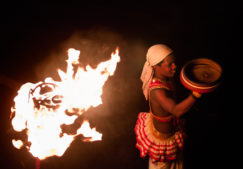
Poson Poya / Poson Festival in Sri Lanka
Poson Poya is the second most important Buddhist festival in Sri Lanka after Vesak Poya. It commemorates the advent of Buddhism in Sri Lanka, in the third century. Vesak Poya centres around Anuradhapura, which is one of the first cities to convert to Buddhism. There is a mass pilgrimage to Anuradhapura as thousands of worshippers journey to the religious centre of Sri Lanka. Most climb the mountain of Mihintale. A place where Mahinda preached Buddhism to one of the Sri Lankan kings and assisted its popularity to grow.
Once again, this features on Poya, during the full moon in June. Lanterns are put on show and Pandals are extravagantly decorated. People sit around to listen to each other’s stories, engage in dancing and also play music. Dansals are erected, and the offering of free food displays how community transcends the differences between people. If you’re travelling to Sri Lanka during this festival, be sure to participate in the celebrations. Climb the mountain with other pilgrims and experience an overpowering sense of spirituality and kinship.
When: This year the festival is on the 5th of June. In 2021, Poson Poya falls on 24th June.
Where: The main celebration takes place in Mihintale. Take a train to Anuradhapura followed by a car to the mountain.
Kataragama Esala Festival in Sri Lanka
The Kataragama Esala Festival is one of the prominent Hindu festivals in Sri Lanka dedicated to the Hindu God of Wisdom, Skanda. Otherwise known to Sri Lankans as Kataragama Deviyo. Devotees travel far and wide, taking a long pilgrimage to Kataragama in south Sri Lanka. Once again you will see decorated elephants, regional dancers using a Kaavadi (a pole decorated with vibrant peacock feathers), acrobats and jugglers, all performing to the beat of thunderous drums.
However, this one is not for the faint hearted. One of the prominent features of this festival is that many commit acts of penitence to atone for their sins. People indulge in acts of ritual self-mutilation and pierce their skin with hooks and skewers, usually in their faces or backs. They then attach themselves to carts and pull them through the street. Others walk across burning firewood believing that their devotion will protect them from burning the soles of their feet. While offering a fascinating cultural insight into religious devotion, we caution that it may not be for everybody.
When: The festival usually takes place in July or August. This year it falls on 26th & 27th July, 2020.
Where: Kataragama.
Navam Perahera
For two days in February, around 50 to 100 elephants and 5,000 performers parade through the streets of Colombo. The performers dress up conventionally and entertain a large number of eager audience. They start from the most important temple in Colombo, The Gangaramaya Temple. They then tour around Viharamahadevi Park and South Beira Lake before returning. Dancers come from all over the country and perform traditional Kandyan, Sabaragamu and regional dances for the crowds to enjoy. Like all Peraheras, you will witness whip crackers, jugglers, fire eaters, drummers and all types of artists and entertainers Sri Lanka has to offer.
One million people celebrate this event. It isn’t like other Buddhist festivals in Sri Lanka. Regardless of caste, Muslims, Buddhists, Christians and Hindus, all come together for this grand celebration. They all preach harmony between every community. They reflect how the temple itself is a place of worship for all, regardless of race, religion or caste. At the end of the procession, the ‘chief tusker’ elephant bears the sacred relics of Buddha, enshrined within a majestic casket, and brings them to the temple. Celebrations of Navam Perahera are definitely worth witnessing if you’re travelling to Sri Lanka around the same dates.
When: In 2020, the procession will take place on the 8 th February and on 26th February in 2021.
Where : Gangaramaya Temple in Colombo.
PLAN YOUR TRIP WITH INDIA SOMEDAY
Most travelers associate Sri Lanka with its rich, diverse culture, fascinating history, gorgeous coastline, tea plantations and abundant wildlife population. While exploring the places that best cater to your interests, be it beaches or adventure amidst nature , don’t leave out the cultural experiences. This exotic island country, is also home to a number of cultural and religious festival celebrations. Multiple festivals in Sri Lanka are celebrated with sheer grandeur and zeal throughout the year.
Celebrating a local festival is an experience by itself, giving you an insight into the origin of existing customs and beautiful traditions. Especially the various Hindu and Buddhist festivals in Sri Lanka. These are some of the best from a long list of festivals. Looking for the ideal getaway and intend on travelling to Sri Lanka ? Get in touch with us and we’ll help plan the perfect trip. A trip that accounts for the best time to visit Sri Lanka . And also allows you to explore this vibrant, glorious aspect of Sri Lankan culture while experiencing all that the island has to offer.
helping you travel your way
We provide a helping hand to independent travellers who need assistance with planning and booking their trip. The primary goal is to turn your dream holiday into reality.
find out how
Let our clients tell you why us

YOU MIGHT ALSO LIKE
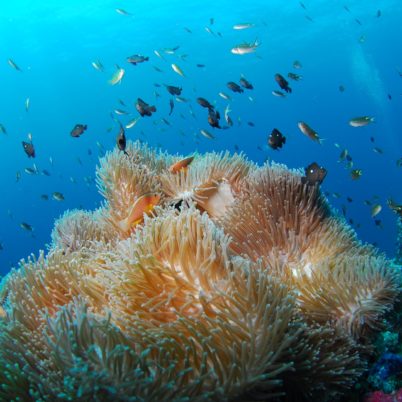
Scuba diving in Sri Lanka
Scuba diving in Sri Lanka is an adventure you definitely must not miss.....

Culture in Sri Lanka
The rich, diverse culture in Sri Lanka, is something you ought to expe.....
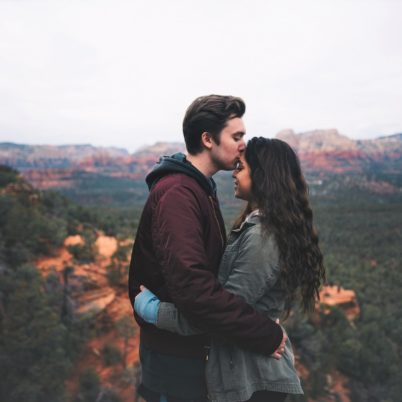
Honeymoon in Sri Lanka
If your idea of being romantic is anything but cliched, a honeymoon in.....
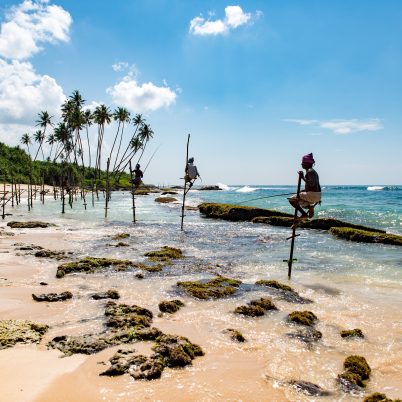
Best Beaches in Sri Lanka
Travelling to Sri Lanka? The gorgeous beaches along the palm fringes c.....
LEAVE A REPLY
Your email address will not be published. Required fields are marked *
You will be redirected to your dashboard shortly. We will also call you back in 24 hrs .
- Be A Part Of These 16 Festivals In Sri Lanka In 2024 That Showcase Its Culturally Vibrant Side
23 Mar 2023
Sri Lanka, the tiny teardrop shaped isle, offers myriad experiences ranging from world-class cultural and historical sites to palm-fringed beaches, verdant tea plantations and spectacular national parks teeming with wildlife. Home to the four main religions of the world, ‘the pearl of Indian Ocean’ is also a land of never-ending festivals and events celebrating all facets of life. Celebrated with great fervor and fanfare, festivals in Sri Lanka offer the perfect chance to witness & be a part of this beautiful country’s culture and traditions. With over 25 public holidays marking national Sri Lanka festivals 2022 , here’s a list of the best ones you must not miss on your vacation to have a blast on it!
16 Festivals In Sri Lanka
Here’s a list of 16 Sri Lanka festivals in 2022 that you must witness at least once in your life. The festivals of Sri Lanka are very popular because of its versatility and variety of performances by the people of Sri Lanka. They not only showcase the culture of the country, but also its beautiful traditions and history.
- Duruthu Perahera: 17 January, 2022
- Thai Pongal: 14 Jan – 17 Jan, 2022
- Independence Day: 4 Feb, 2022
- Navam Perahera: 16 Feb, 2022
- Mahashivratri: 1 Mar, 2022
- Love Sri Lanka Festival: 14-20 Feb, 2022
- Sinhala & Tamil New Year: 13 – 14 Apr, 2022
- CMB Street Aurudu Shopping & Food Festival: TBA
- Vesak Poya: TBA
- Poson Festival: Jun 14, 2022
- Kandy Esala Poya Perahera: 02 Aug – 12 Aug, 2022
- Vel Festival: July | August
- Kataragama Esala Festival: 21 Jul, 2022
- Nallur Festival: August-September
- Diwali: 24 Oct, 2022
- Galle Literary Festival: 1 Feb, 2022
1. Duruthu Perahera
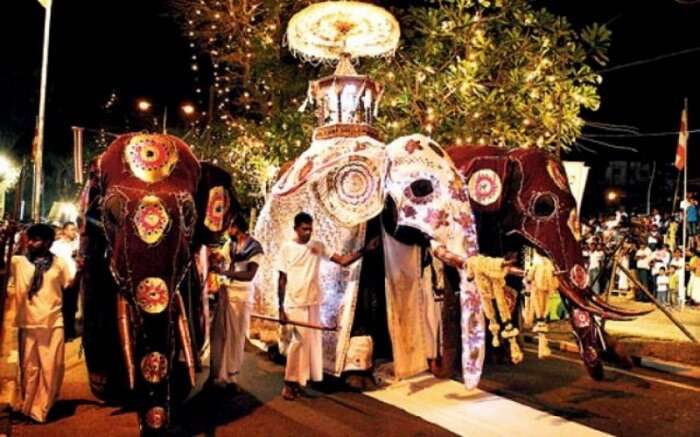
Image Source
Marking the beginning of the Buddhist calendar in Sri Lanka, this grand procession in the month of January (Duruthu) is one of the greatest & most glorious cultural traditional festivals in Sri Lanka , attended with great enthusiasm by devotees and tourists alike. If you are planning to visit Sri Lanka in January then you ought to attend this festival. Duruthu Perahera is celebrated to commemorate Gautam Buddhas first visit the country 2500 years ago, with 3-day long festivities at Kelaniya Raja Maha Viharaya. You can witness a magnificent spectacle on the final day with decked up and bejeweled elephants, acrobats, singers, drummers & torch-bearers conjuring up a grand procession.
When: 17 January, 2022 Where: Kelaniya Raja Maha Viharaya, Colombo (8 kms away) Highlight Of The Festival: Performances by Acrobats, singers, drummers & torch-bearers
Must Read: Galle Nightlife: Here Is All You Need To Know About The Sri Lankan Party Hub
2. Thai Pongal
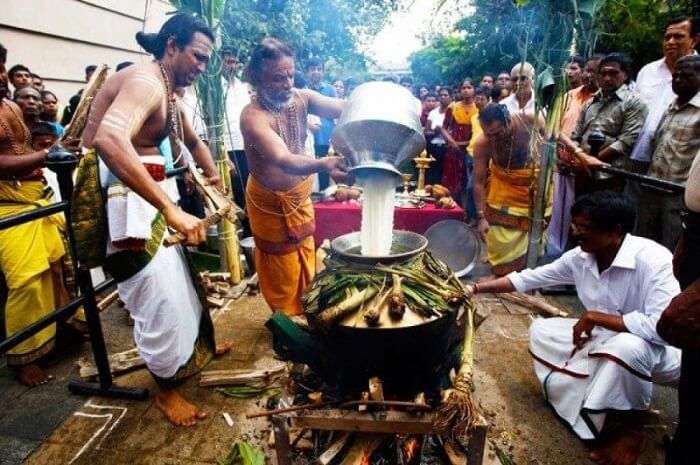
Celebrated for 3 days starting from the first day of Thai (the 10th month in Tamil calendar), this is one of the important harvest festivals in Sri Lanka 2022 where families pay tribute to the sun god for a bountiful harvest. The festivities begin by drawing kolams (rangoli) with rice paste in the front yard of houses and boiling milk mixed with rice, jaggery, and spices. The entire family participates in the festivities to pay gratitude to Surya as well as the cattle which play an important role in bringing a good harvest. There are a plethora of temples in Sri Lanka and you can easily become a part of celebrations at any one of them.
When: 14 Jan - 17 Jan, 2022 Where: All across the country Highlight Of The Festival: Rangoli are made and houses are decorated
Suggested Read: 6 Adventure Places In Sri Lanka To Quench The Thirst Of Your Inner Daredevil!
3. Independence Day
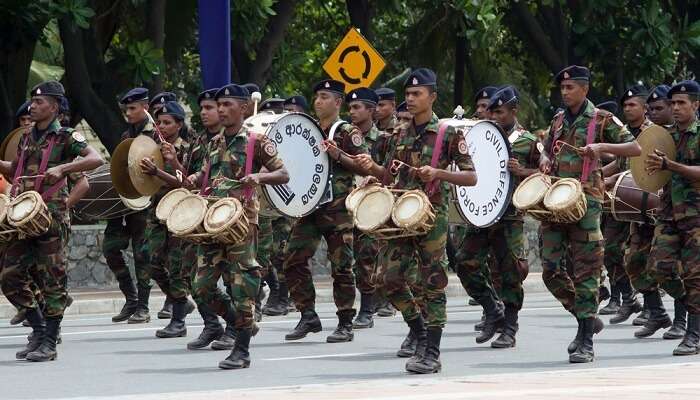
Independence day of any country is important to its citizens and so it is one of the most important festivals of Sri Lanka . On 4th February 1948, Sri Lanka got its independence from colonial rule. Every year to celebrate this auspicious day, the whole country participates in ceremonies and parades. While you are exploring the country you can attend the military parades, flag-hoisting ceremonies, firework displays, cannon fire shows, and cultural performances. It is also one of the most popular religious festivals in Sri Lanka .
When: 4 Feb, 2022 Where: All across the country Highlight Of The Festival: Military parades, Flag-hoisting ceremonies
Suggested Read: 25 Best Places To Visit In Kandy In 2022 – Sri Lanka’s Spiritual Capital
4. Navam Perahera
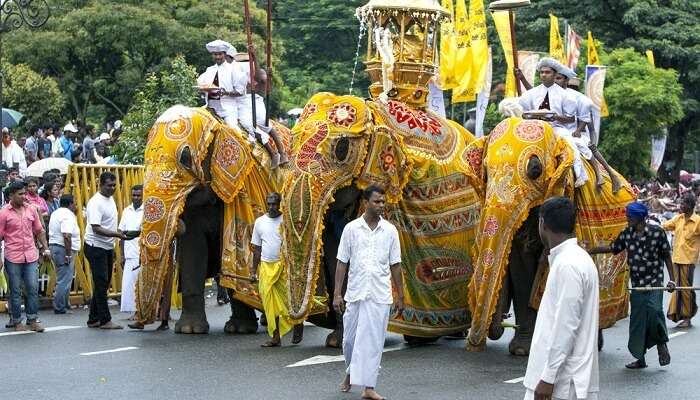
Navam Perahera is the main festival in Sri Lanka which is a mix of colours, parades, and traditions. In 1979, Navam Perahera was celebrated for the first time in the Gangaramaya temple in Colombo. This festival is celebrated grandly and the festivities include fire dancers, whip crackers, flag bearers and hundreds of elephants, You can also witness the best temples in Sri Lanka and marvellous traditional dance like Uda Rata, Pahatha Rata, and Sabaragamuwa. If you are a fan of music you can see the performance of drummers and flautists. Navam Perahera is one of the most fascinating Sri Lankan festivals 2022 and you must attend it.
When: 16 Feb, 2022 Where: Colombo Highlight Of The Festival: Performance of drummers and flautists
Suggested Read: 10 Places To Visit In Badulla For A Fulfilling Vacation In Sri Lanka In 2022
5. Mahashivratri
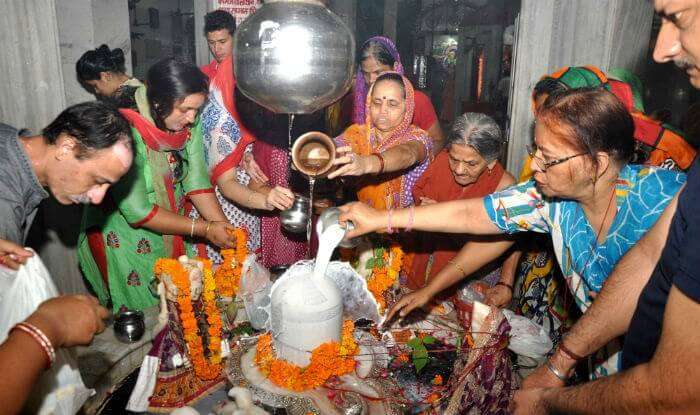
Devotees of Lord Shiva across the country celebrate padmarajarathri (the great night of Shiva) in March with prayers and festivities. Worshippers begin their day with a purification bath, carrying water pots to the temple to bathe the Shiva Linga and then spend the day fasting and meditating at various temples. Some temples like the Sri Kaileshwarar also celebrate with dance and music performances to celebrate this important festival in Sri Lanka. This year the festival will be celebrated on 1 Mar, 2022.
When: 1 Mar, 2022 Where: All across the country Highlight Of The Festival: Day fasting and meditating
Suggested Read: Ramayana Tour In Sri Lanka 2022: Exploring The Religious Trail In The Island Nation
6. Sinhala & Tamil New Year

Usually around mid-April every year the entire country is enveloped in a festive atmosphere to mark the Lunar New Year. Amongst all festivals in Sri Lanka , the Sinhala & Tamil New Year is especially celebrated with great pomp and show to mark the end of the harvest season and spring. People get busy cleaning and decorating their homes, preparing traditional sweets, enjoying meals with the family and showing off their new clothes. The celebrations also involve anointing children with herbal oils, bursting firecrackers and organizing competitive games to add to the fun quotient.
When: 13 - 14 Apr, 2022 Where: All across the country Highlight Of The Festival: Competitive games, bursting of firecrackers
Suggested Read: Trekking In Kandy Is An Ultimate Date With Untouched Nature Of Sri Lanka
Sri Lanka Holiday Packages On TravelTriangle

Sri Lanka Tour Package 4D/3N Hills & Beaches @ Rs 16,500
Plan your trip today!

Sri Lanka Family Holiday 5D/4N Package @ Rs 22,999
Get quotes from multiple travel experts.

Scenic Sri Lanka Honeymoon 6D/5N Package @ Rs 25,670
Compare & customize quotes before booking.
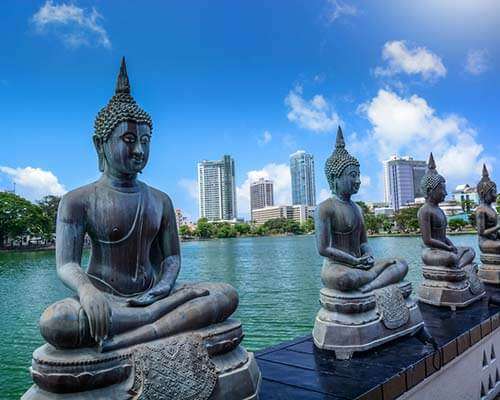
Best Selling Sri Lanka Family 6D/5N Package @ Rs 30,934
Have Questions? Talk to our travel experts today.

Adventurous Sri Lanka Tour 7D/6N Package @ Rs 34,500
Best prices guaranteed. EMI option available.

See more at TRAVELTRIANGLE.COM
7. Vesak Poya
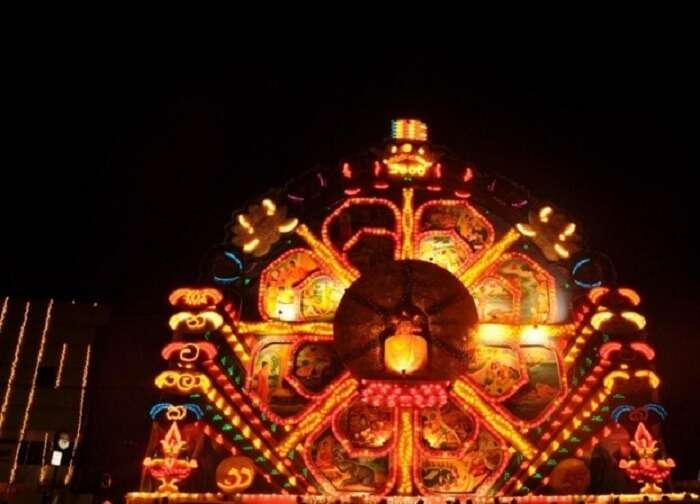
Commemorating the three important milestones in Buddha's life- his birth, enlightenment, and nirvana – Vesak Poya is one of the most prominent Buddhist festivals in Sri Lanka . Celebrations begin on a full moon day and continue up to a week, filling every home, street and shop with the magical light of colorful lanterns called Vesak kudu, depicting the light of Buddha. Cities like Colombo and Kandy sparkle with lit-up pandals displaying elaborate panels from the Jataka stories, while tiny clay lamps brighten up villages throughout the festivities of the Vesak festival 2022 in Sri Lanka.
When: TBA Where: All across the country, but celebrations in Colombo are on a grand scale. Highlight Of The Festival: Colorful lanterns and tiny clay lamps
Suggested Read: 10 Best Villas In Mirissa To Soak In A Mesmerizing Sri Lankan Holiday Like Never Before!
8. Poson Festival
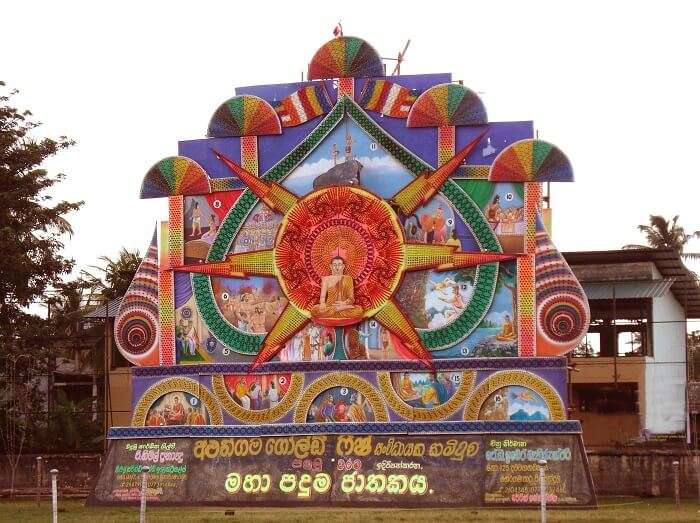
Also known as Poson Paya, this is the second most important one amongst festivals celebrated in Sri Lanka by the Buddhists. Since it commemorates the advent of Buddhism in the island in the 3rd century, Poson Festival holds great historical significance too. Just as in Vesak, the celebrations include lanterns, pandals, and alms-stalls across the island in the true spirit of the Buddhist traditions and teachings. The grandest festivities are in and around Mihintale rock outcrop where Buddha's disciple Mahinda first preached Buddhist doctrines to King Devanampiyatissa. Do attend Poson as it is the most important festival of Sri Lanka .
When: Jun 14, 2022 Where: Mihintale and Anuradhapura Highlight Of The Festival: Celebration of Buddhist traditions and teaching
Suggested Read: Best Things To Do On A 4D/3N Family Trip To Sri Lanka!
9. Kandy Esala Poya Perahera
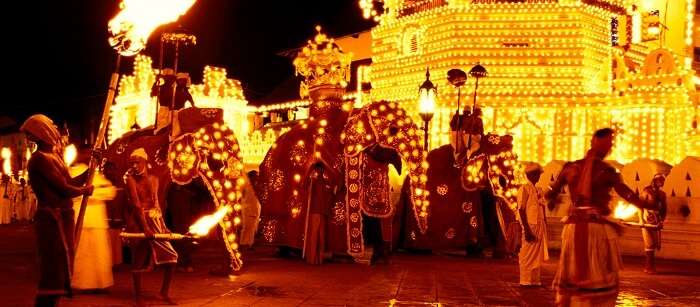
Another important one amongst religious festivals in Sri Lanka , The Festival of The Tooth pays homage to the sacred tooth relic of Buddha enshrined at the famous temple in Kandy. The grand celebrations include a spectacular procession of traditional dancers, drummers, and elephants dressed up in rich finery through the streets of the city every day for a week. The excitement, fervour and festivities on the last night must be seen to be believed. It is recommended to book a seat in advance through some local agencies to enjoy the spectacle in its full glory.
When: 02 Aug - 12 Aug, 2022 Where: Kandy Highlight Of The Festival: Traditional dancers, drummers, and elephants
Suggested Read: 19 Reasons Why I Would Rather Be From Sri Lanka Than Anywhere Else
10. Vel Festival
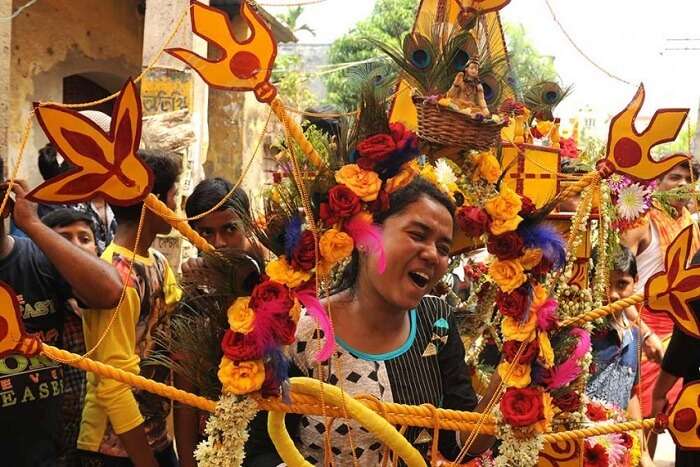
Amongst the most important Hindu religious and cultural festivals in Sri Lanka , Vel Festival commemorates the victory of war-god Skandha over evil forces and venerates his trident (vel). The vel is placed in a huge dazzling golden chariot pulled by devotees in white with their faces smeared in holy ash. Accompanied by dancers, musicians and elephants the procession moves across the city to the sound of chants, drums, bells and divine sons reverberating through the streets. The gorgeous procession, the sacred vibes and the celebrations in Sri Lanka are sure to leave you awestruck & mesmerized.
When: usually in July or August Where: Colombo Highlight Of The Festival: Sound of chants, drums, bells, and divine sons
Suggested Read: Sri Lankan Cuisine: 12 Dishes That’ll Make You Want To Visit Sri Lanka
11. Kataragama Esala Festival
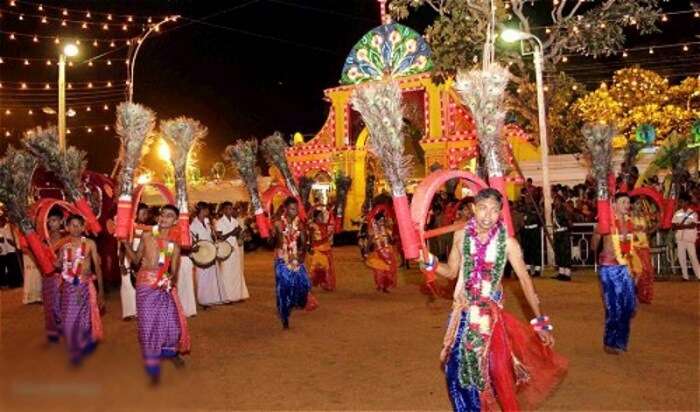
One of the most significant Hindu festivals in Sri Lanka , it attracts thousands of devotees from across the island to the holy town of Kataragama in southern Sri Lanka over a two-week period. People from all major faiths seek divine guidance and penance from the deity by indulging in rituals like skin-piercing and acts of self-mutilation. Just like the Esala Perahera, this festival is also marked by processions of dancers, musicians, elephants, fire-eaters and acrobats, all adding up to the religious fervor and festivities.
When: 21 Jul, 2022 Where: Kataragama town in Southern Sri Lanka Highlight Of The Festival: Performance by fire-eaters and acrobats
Suggested Read: 10 Best Places To Visit In Gampola For Exploring This Hidden Gem In Sri Lanka In 2022!

12. Nallur Festival

Rivaling the celebrations at the Kandy Esala Perahera, this 25-day long Nallur Festival held in honor of Lord Murugan is a grand and glorious affair worth witnessing. Various festivities and processions mark the celebrations on different days, with devotees from the entire island thronging the Nallur Kandaswamy Kovil. On the day of Chariot Festival, ardent devotees carry the glittering deity on a magnificent silver throne around the town. While on other days, there are fantastic processions with spectacular chariots.
When: August-September Where: Jaffna Highlight Of The Festival: The devotees carry the main diety on silver thrones all around the cities.
Suggested Read: 30 Best Beaches In Sri Lanka To Visit In 2022 That Will Make You Go ‘Wow’!

Another traditional festival wonderfully celebrated in Sri Lanka is Diwali. An eminent Hindu festival, Diwali is celebrated throughout the country and the festivities are worth witnessing. New clothes, lights everywhere, sweets and guests, Diwali is simply the biggest celebration of the victory of good over evil. Diwali is one of the most famous festivals of Sri Lanka and if you are in this country then you must attend the festivities and celebrate with the locals. It is also one of the most popular religious festivals in Sri Lanka .
When: 24 Oct, 2022 Where: All across the country Highlight Of The Festival: Visiting relatives, distributing sweets
Suggested Read: 18 Amazing And Most-Visited Sri Lanka Tourist Places For Your 2022 Trip
14. Galle Literary Festival
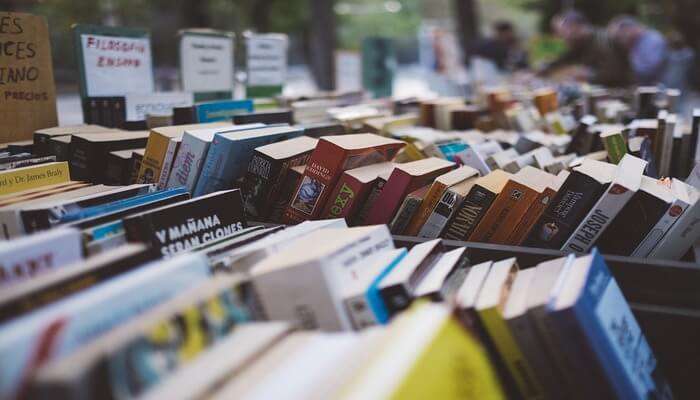
For all the book worms, Galle Literary Festival is the best one on this list of Sri Lanka festivals . Being one of the most popular festivals in Sri Lanka, this festival attracts a lot of tourists as well as locals. It provides a platform for all those who love to read to connect with those international authors who are famous for their great works. This festival was first held in 2007 and since then it is one of the highlights of the city of Galle.
When: 1 Feb, 2022 Where: Galle Highlight Of The Festival: Many prominent writers attend this festival
Suggested Read: Hikkaduwa In April 2022: A Guide To Plan A Perfect Summer Vacation
15. CMB Street Aurudu Shopping & Food Festival

CMB Street Aurudu Shopping is a festival where tourists will experience a stunning shopping extravaganza along with a food tour comprising some lip-smacking dishes. The festival is a one-stop shopping platform for all fashion freak people. Tourists will also get the chance to taste a lot of local street food which are very popular in the community and street fashion is another attraction that visitors must experience. The CMB Street is also of the best places to visit in Sri Lanka that you just can’t miss.
When- TBA Where- Green Path, Colombo- Sri Lanka Highlight Of The Festival: Tourists will love the street food
Suggested Read: 20 Honeymoon Places In Sri Lanka In 2022 That Will Sweep You Off Your Feet
16. Love Sri Lanka Festival
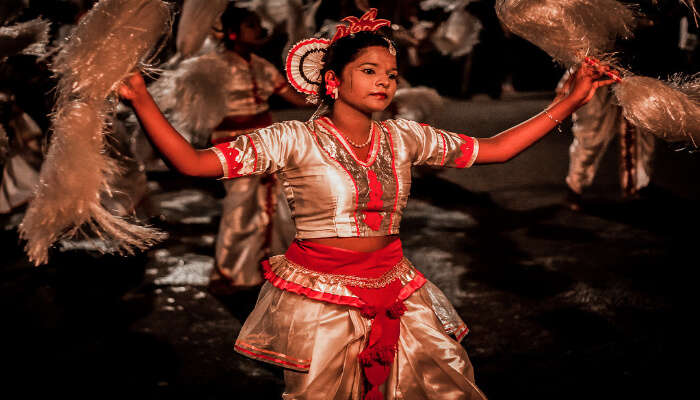
This is a festival, celebrated by the Sri Lankan people, for the spirit of being “Soo Sri Lankan” shopping, food, games and entertainment, music and dance and cultural activities. Vacationers from all around the world will get to explore the real colours of Sri Lanka. This festival is being celebrated by the people of Sri Lanka for three consecutive years.
When- 14-20 Feb, 2022 Where- Viharamahadevi Park, Colombo, Sri Lanka Highlight Of The Festival: hopping, food, games and entertainment, music and dance
Further Read: Our Enchanting Trip To Sri Lanka Was The Perfect First Time International Vacation
These festivals in Sri Lanka that you mustn’t miss out on your trip. Enticed to witness them already? Well, don’t wait much and plan your Sri Lanka trip with TravelTriangle right away! Do attend these festivals to have an encounter with the traditions and culture of Sri Lanka.
Disclaimer: TravelTriangle claims no credit for images featured on our blog site unless otherwise noted. All visual content is copyrighted to its respectful owners. We try to link back to original sources whenever possible. If you own the rights to any of the images, and do not wish them to appear on TravelTriangle, please contact us and they will be promptly removed. We believe in providing proper attribution to the original author, artist or photographer.
Please Note: Any information published by TravelTriangle in any form of content is not intended to be a substitute for any kind of medical advice, and one must not take any action before consulting a professional medical expert of their own choice.
Frequently Asked Questions About Festivals In Sri Lanka
Are there any cases of coronavirus in sri lanka.
Sri Lanka did receive one case of Coronavirus which was immediately quarantined. Since then, the country’s government has taken strict measures like visa-on-arrival for travellers from China has been suspended. A strict screening process is being taken at international airports.
How is Diwali celebrated in Sri Lanka?
Diwali is celebrated the same way in Sri Lanka, as it is celebrated in India by illuminating the house with earthen lamps, preparing traditional sweets, and burning firecrackers.
What is the religion of Sri Lanka?
The locals of Sri Lanka belong to different religions like Theravada Buddhists, Hindus, Muslims and Roman Catholics.
How is Dussehra celebrated in Sri Lanka?
The people of Sri Lanka celebrate Dussehra in the same way it is celebrated in India. People burn crackers, decorate their houses and celebrate the victory of good over evil.
What is the major food delicacy of Sri Lanka?
If you are visiting Sri Lanka then food delicacies like Asmi, Gotu Kola Mallum Sambola, Polos, Parippu, Fish Ambul Thiyal, Kottu, Lamprais, Sri Lankan egg hoppers, wood apple are some of the must-try food items which will stay with you forever. The staple food of Sri Lanka is rice though.
Is Sri Lanka safe for tourists?
Sri Lanka is a country that is largely safe for tourists to travel. Though few precautions can be kept in mind while travelling to this country but those precautions are in general and should be kept in mind by every traveller travelling anywhere in the world.
Looking To Book An International Holiday?

Trip to Sri Lanka at Rs 13,500/-
Plan Your Vacation Today!

Trip to Singapore at Rs 20,499/-
Get Quotes From Local Experts

Mauritius Holiday Starting at Rs 65,000/-
Talk to Our Experts Today

Maldives Honeymoon Trip at Rs 39,800/-
Pay with easy EMI Option

Europe Trip at Rs 89,999/-
All Inclusive Deals

Vacation in Dubai at Rs 27,499/-

Hong Kong Holiday at Rs 24,999/-
Money Safe Guarantee

Thailand Holiday at Rs 7,999/-
Flights Excluded
People Also Read:
Festivals Of India Festivals In Europe Festivals In Bhutan
Recent Posts
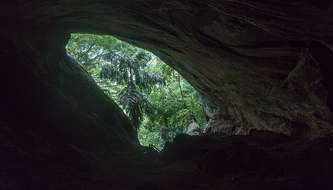
Ravana’s Cave In Sri Lanka: A Place Of Historical And Mythological Significance
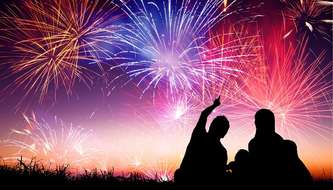
8 Festivals Of Andaman And Nicobar Islands For A Cultural Retreat
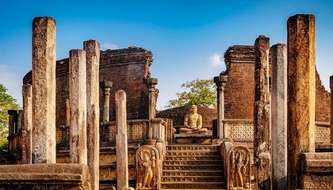
Marvellous UNESCO World Heritage Sites In Sri Lanka
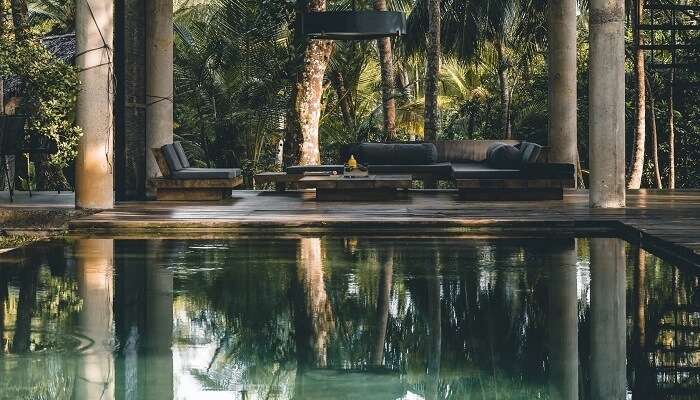
5 Fabulous Hotels in Unawatuna to Plan Your Stay
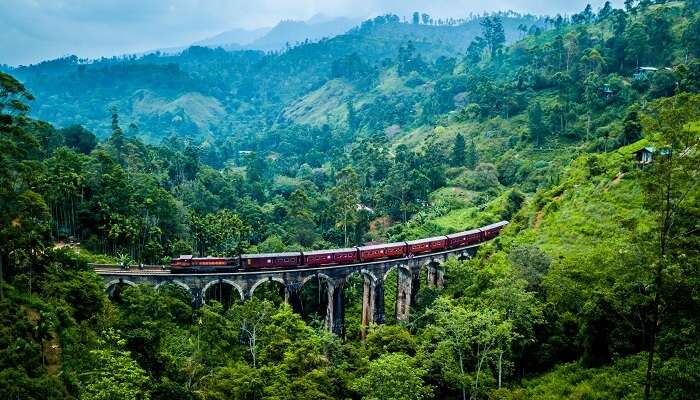
6 Places To Visit In Sri Lanka In 2 Days For A Quick Getaway

6 Best Picnic Places In Sri Lanka To Spend Quality Time With Your Loved Ones
Trending Blogs

20 Mysterious Places In India To Visit In 2023 More Bizarre Than The Bermuda Triangle

10 Scariest Roads In India That Are A Driver’s Nightmare

101 Places To Visit In India Before You Turn 30 in 2024

35 Exotic Places To Visit In December In India 2024 To Enjoy A Surreal Vacation

60 Best Honeymoon Destinations In India In 2024

95 Best Honeymoon Destinations In The World In 2023 For A Romantic Escape!
Best Places To Visit In India By Month
Best places to visit outside india by month.
- TravelTriangle
- International
- Sri Lanka »
- Tour Packages
- Honeymoon Packages
- Family Packages
- Budget Tour Packages
- Luxury Tour Packages
- Adventure Tour Packages
- Group Tour Packages
- Maldives Tour Packages
- Bali Tour Packages
- Dubai Tour Packages
- Singapore Tour Packages
- Thailand Tour Packages
- Europe Tour Packages
- Sri Lanka Tour Packages
- Tour Packages From Delhi
- Tour Packages From Mumbai
- Tour Packages From Bangalore
- Tour Packages From Chennai
- Tour Packages From Kolkata
- Tour Packages From Hyderabad
- Tour Packages From Ahmedabad
- Thailand Tourism
- Bali Tourism
- Singapore Tourism
- Maldives Tourism
- Mauritius Tourism
- Dubai Tourism
- Europe Tourism
- Hotels in Thailand
- Hotels in Maldives
- Hotels in Mauritius
- Hotels in Bali
- Hotels in Dubai
- Hotels in Singapore
- Hotels in Sri Lanka

Sri Lankan Culture: A Rich and Diverse Heritage
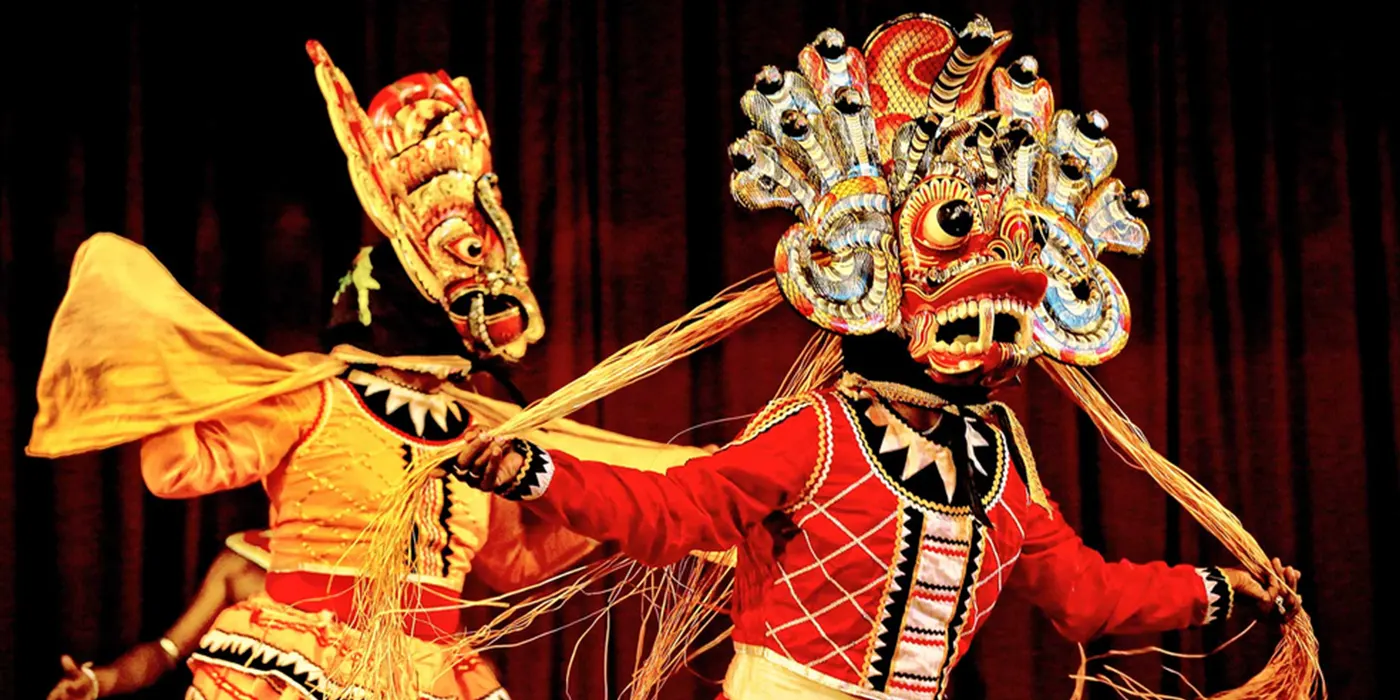
Culture of Sri Lanka
Sri Lankan Culture is one of the most diverse and unique cultures in the world. It has been shaped by centuries of history and religion, and it is reflected in the country’s art, architecture, food, and festivals.
One of the most prominent features of Sri Lankan Culture is its colorful festivals. These festivals are often religious in nature, and they celebrate the important events in the Buddhist, Hindu, and Islamic calendars. Some of the most popular festivals include the Sinhala and Tamil New Year, the Esala Perahera , and the Vesak Festival.
Religion plays an important role in Sri Lankan Culture. The majority of Sri Lankans are Buddhist, and Buddhism has had a profound influence on the country’s culture. Other important religions in Sri Lanka include Hinduism, Islam, and Christianity.
Sri Lankan Culture is also reflected in the country’s art, architecture, and sculptures. The ancient city of Anuradhapura is a UNESCO World Heritage Site, and it is home to some of the most impressive examples of Sri Lankan art and architecture.
Quick Links To Explore
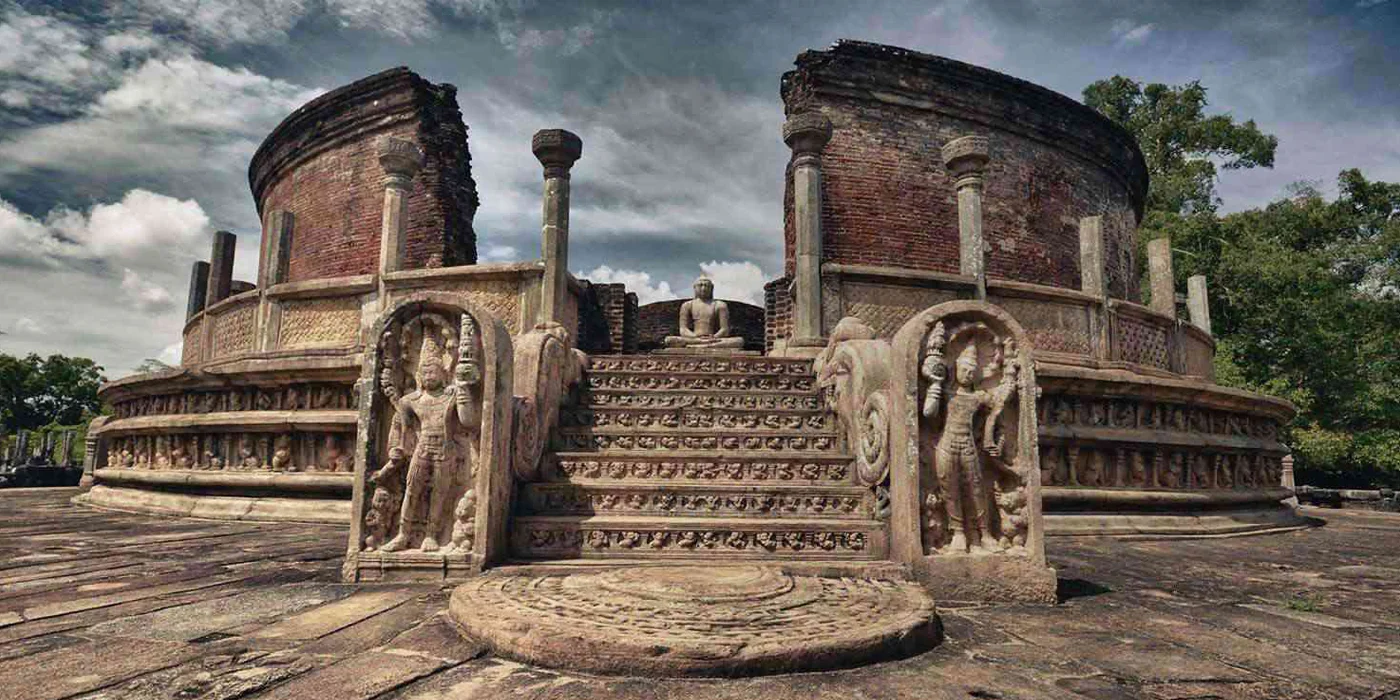
Sri Lankan Culture is also known for its delicious food. The country’s cuisine is a blend of Indian, Chinese, and European influences, and it features a wide variety of flavors and ingredients.
Sri Lankan Culture is a vibrant and dynamic culture that is constantly evolving. It is a culture that is rich in history, religion, and art, and it is a culture that is sure to continue to fascinate visitors for generations to come.
One of the main features of Sri Lankan Culture is its Indian and European influences. The Indian influence is evident in the country’s language, religion, and art. The Sinhalese language is closely related to the Indian language of Pali, and Buddhism is the majority religion in Sri Lanka. Indian culture has also influenced Sri Lankan art, architecture, and dance.
The European influence in Sri Lanka is a result of centuries of colonization. The Portuguese arrived in Sri Lanka in the 16th century, followed by the Dutch and the British. These European powers brought their own cultures to Sri Lanka, which have had a lasting impact on the country’s culture.
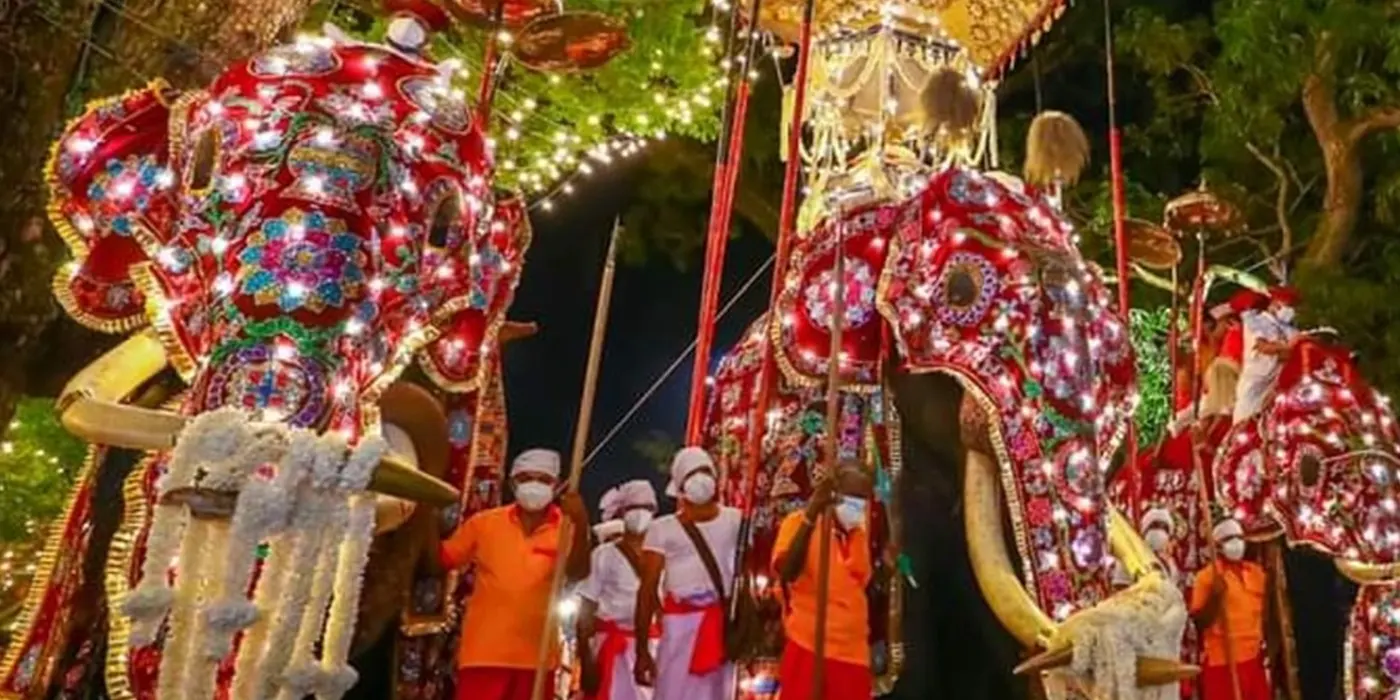
Hospitality is also one of the prominent characteristics of Sri Lankan Culture. Sri Lankans are known for their warm hospitality, and they are always happy to welcome visitors to their country. This hospitality is a reflection of the country’s rich culture, which is a blend of Indian, European, and Sinhalese influences.
Related reading: 8 Reasons to Visit Sri Lanka
Indigenous medicine (Ayurveda)
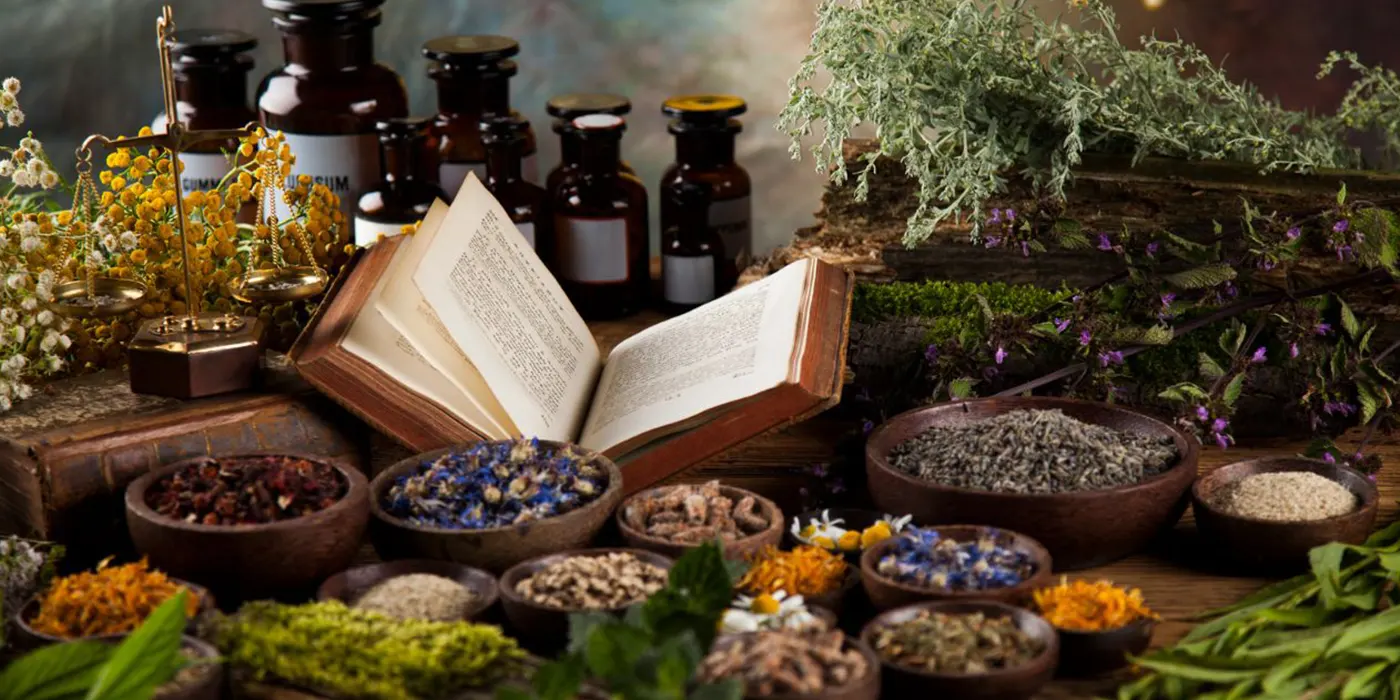
Ayurveda is a traditional system of medicine that originated in India. It is based on the belief that health is a balance of the body’s three doshas: vata, pitta, and kapha. Ayurveda uses a variety of treatments, including herbs, massage, and yoga, to restore balance and promote health.
Ayurveda is a major part of Sri Lankan culture, and it is said to be able to cure even terminal diseases such as cancer. In recent years, there has been a growing interest in Ayurveda among tourists, and there are now many Ayurveda spas and clinics in Sri Lanka that cater to tourists.
Ayurvedic tourism
Ayurvedic tourism is a growing trend, and sri lanka is one of the most popular destinations for ayurvedic tourism. visitors to sri lanka can experience a variety of ayurvedic treatments, including massages, yoga, and herbal baths. they can also learn about the principles of ayurveda and how it can be used to promote health and well-being., sri lankan cuisine.
One of the most important aspects of Sri Lankan Culture is its cuisine. Sri Lankan cuisine is one of the most diverse and delicious cuisines in the world. It is a fusion of Indian, Chinese, and European influences, and it features a wide variety of flavors and ingredients.
The most popular Sri Lankan dishes include rice and curry, kottu roti, and string hoppers. Rice and curry is a staple food in Sri Lanka, and it consists of rice served with a variety of curries. Kottu roti is a stir-fried dish that is made with roti, vegetables, and meat or fish. String hoppers are a type of noodle that is made from rice flour.
Sri Lankan cuisine is also known for its use of spices. The most common spices used in Sri Lankan cuisine include chili peppers, curry leaves, turmeric, and cinnamon. These spices give Sri Lankan food its unique flavor and aroma.
Suggested Reading: Top 22 Most Popular Sri Lankan Foods You Should Try
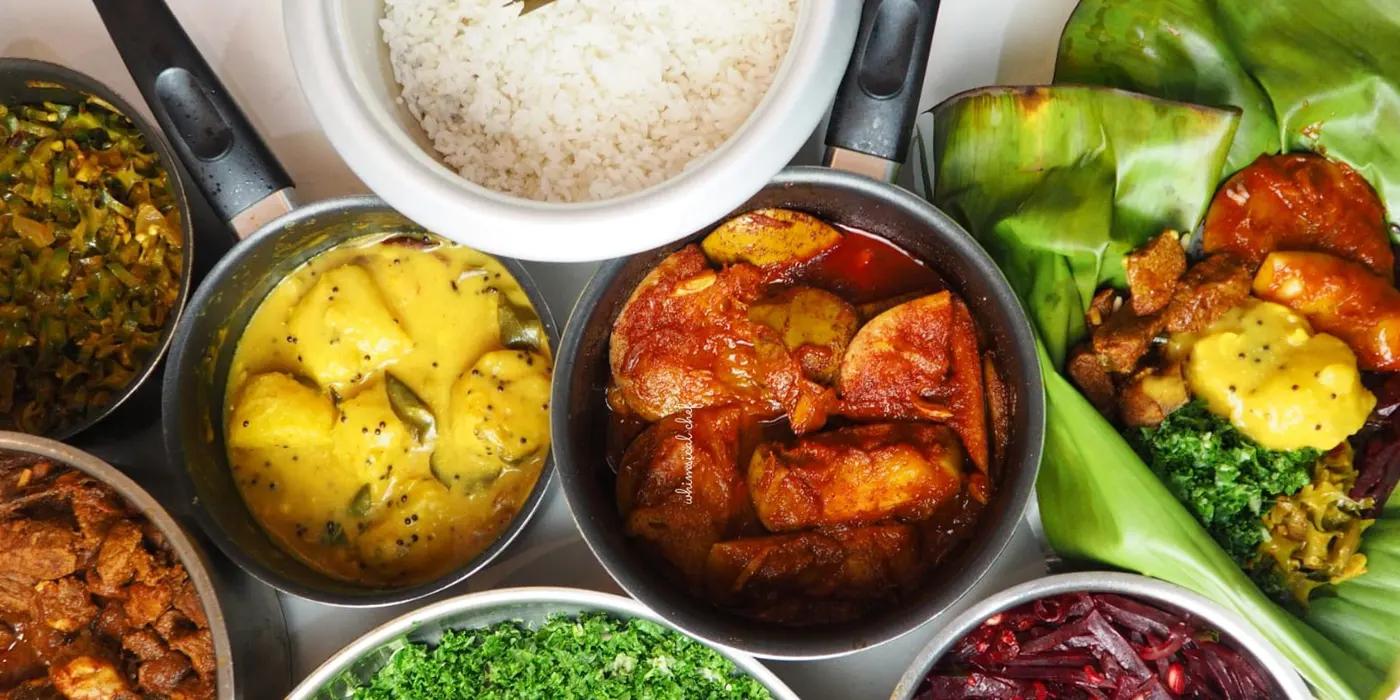
In addition to being delicious, Sri Lankan cuisine is also very healthy. Many Sri Lankan dishes are made with fresh vegetables and fruits, and they are often cooked in a healthy way. For example, rice and curry is often cooked in a clay pot, which helps to retain the nutrients in the food.
Another great thing about Sri Lankan cuisine is that it is very versatile. There are many different ways to cook the same dish, which means that you can always find a way to make it to your liking. For example, there are many different ways to cook kottu roti, so you can experiment with different ingredients and flavors until you find the perfect combination for you.
Whether you are looking for a delicious and healthy meal or a new culinary experience, Sri Lankan cuisine is sure to please. With its wide variety of flavors and ingredients, there is something for everyone to enjoy.
Sri Lankan Culture and Cuisine
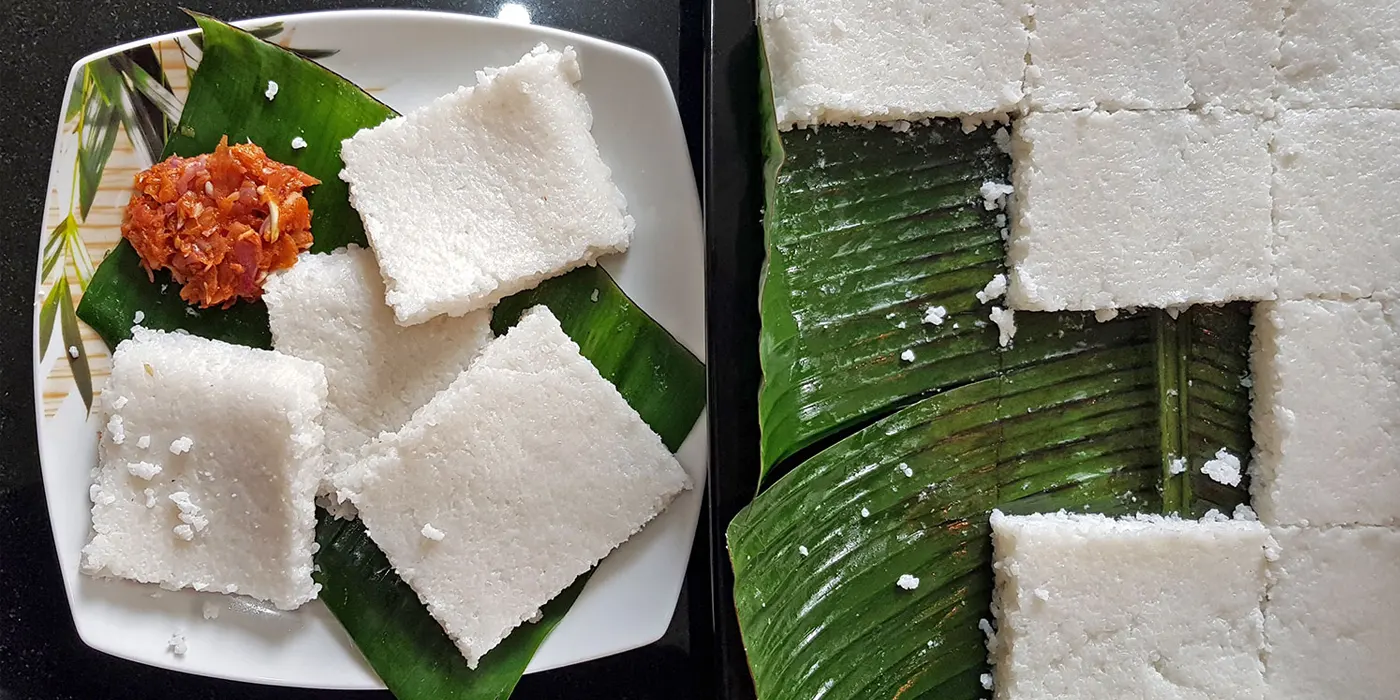
Sri Lankan Culture is a rich and diverse culture that is reflected in the country’s cuisine. The use of spices, the variety of flavors, and the versatility of the dishes all contribute to the unique and delicious cuisine of Sri Lanka.
If you are looking for a delicious and healthy meal, or a new culinary experience, then Sri Lanka is the perfect place for you. With its wide variety of flavors and ingredients, there is something for everyone to enjoy in Sri Lankan cuisine.
Related reading: Herbs and Spices of Sri Lanka
Visual and Performing Arts in Sri Lankan Culture
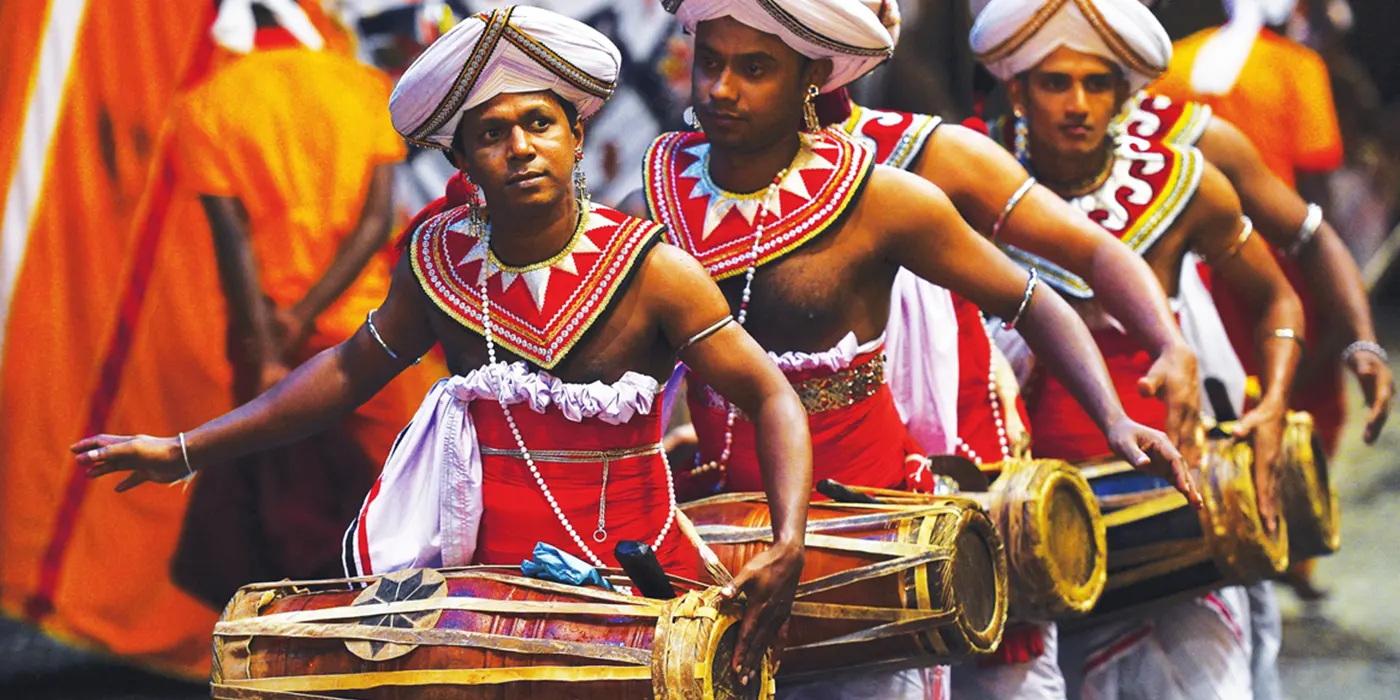
Art, music, drama, and architecture are all important aspects of Sri Lankan Culture. Art has played an integral part in the history of Sri Lanka, providing a figurative gold mine for archaeologists and anthropologists. Art speaks volumes about the Sri Lankan way of life, from castles to frescoes. Art chronicles the country’s history and culture, leaving people filled with wonder, reverence, and respect.
Visual Arts
The visual arts in Sri Lankan Culture are a rich and diverse tradition. The country’s art has been influenced by a variety of cultures, including Indian, Chinese, and European. Some of the most famous examples of Sri Lankan art include the Sigiriya frescoes, the Polonnaruwa sculptures, and the Kandyan dance.
Performing Arts
The performing arts in Sri Lankan Culture are also a vibrant and diverse tradition. The country’s performing arts include a variety of forms, such as music, dance, and theater. Some of the most popular forms of performing art in Sri Lanka include the traditional Kandyan dance , the folk music of the hill country, and the Sinhala and Tamil cinema.
Architecture
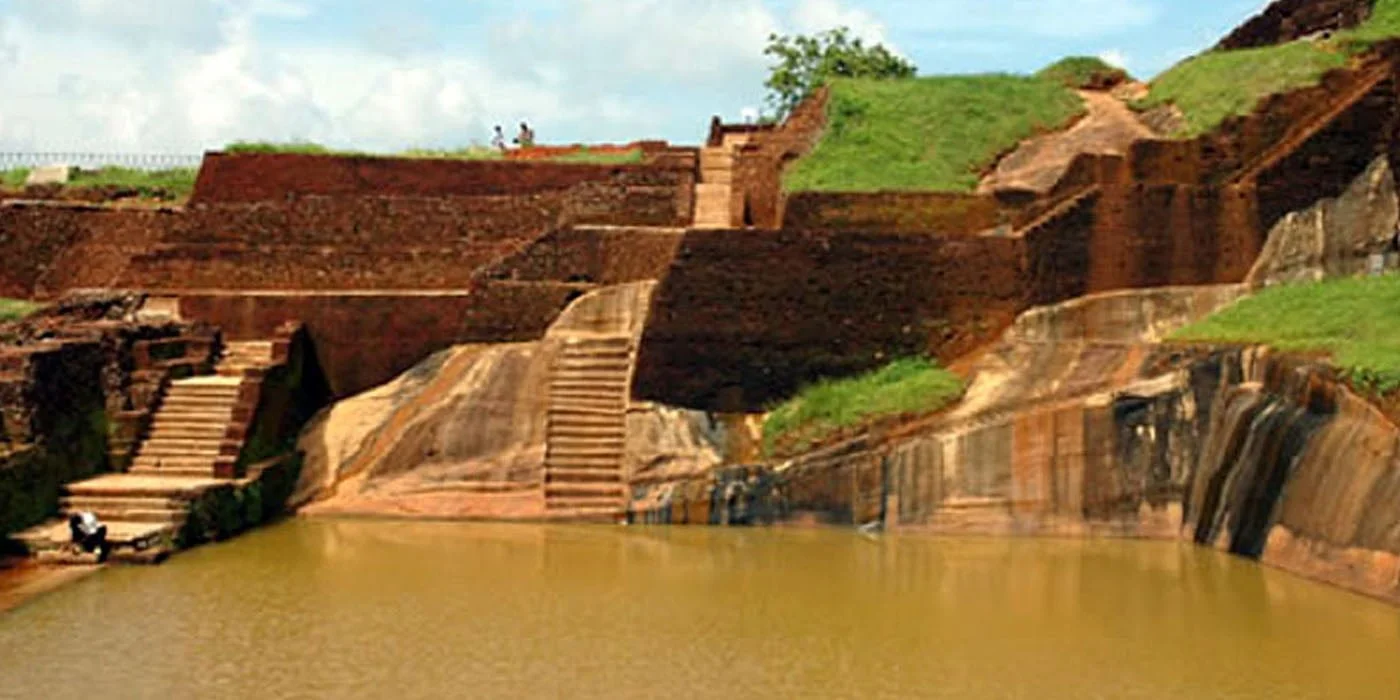
The architecture in Sri Lankan Culture is a blend of Indian, European, and Sinhalese influences. Some of the most impressive examples of Sri Lankan architecture include the ancient city of Anuradhapura, the rock fortress of Sigiriya , and the colonial city of Galle .
Tea in Sri Lankan Culture
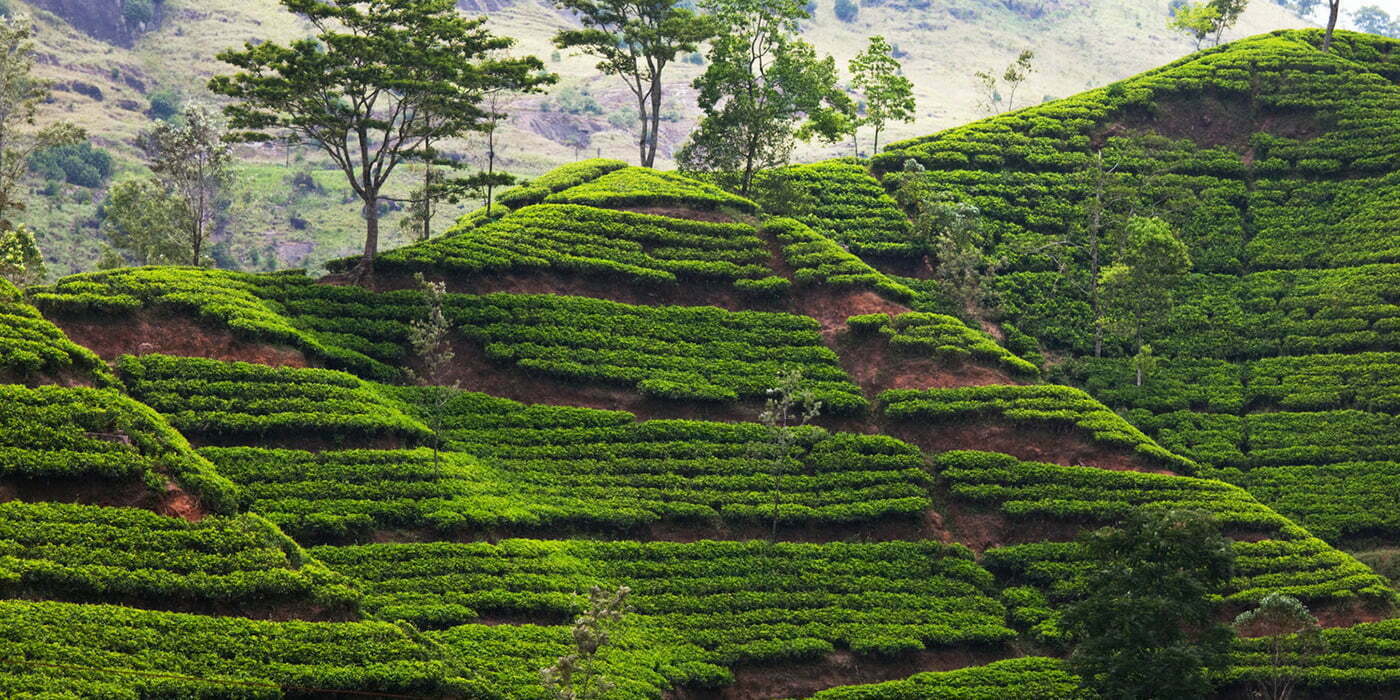
Tea is an integral part of Sri Lankan Culture. It is one of the biggest and best tea producers in the world, and tea is often offered to guests as a sign of hospitality. In fact, it is said that the British Royal Family drinks Ceylon Tea (Sri Lankan Tea).
Tea is believed to have been introduced to Sri Lanka by the Portuguese in the 16th century. However, it was not until the 19th century that tea production really took off in Sri Lanka. The British, who ruled Sri Lanka at the time, saw the potential of the tea industry and invested heavily in it.
Today, Sri Lanka is one of the world’s leading tea producers. The country produces a variety of teas, including black tea, green tea, and white tea. Sri Lankan tea is known for its high quality and its unique flavor.
Tea is an important part of Sri Lankan Culture in many ways. It is a symbol of hospitality, it is a source of income for many people, and it is a part of the country’s rich history.
Education in Sri Lanka Culture
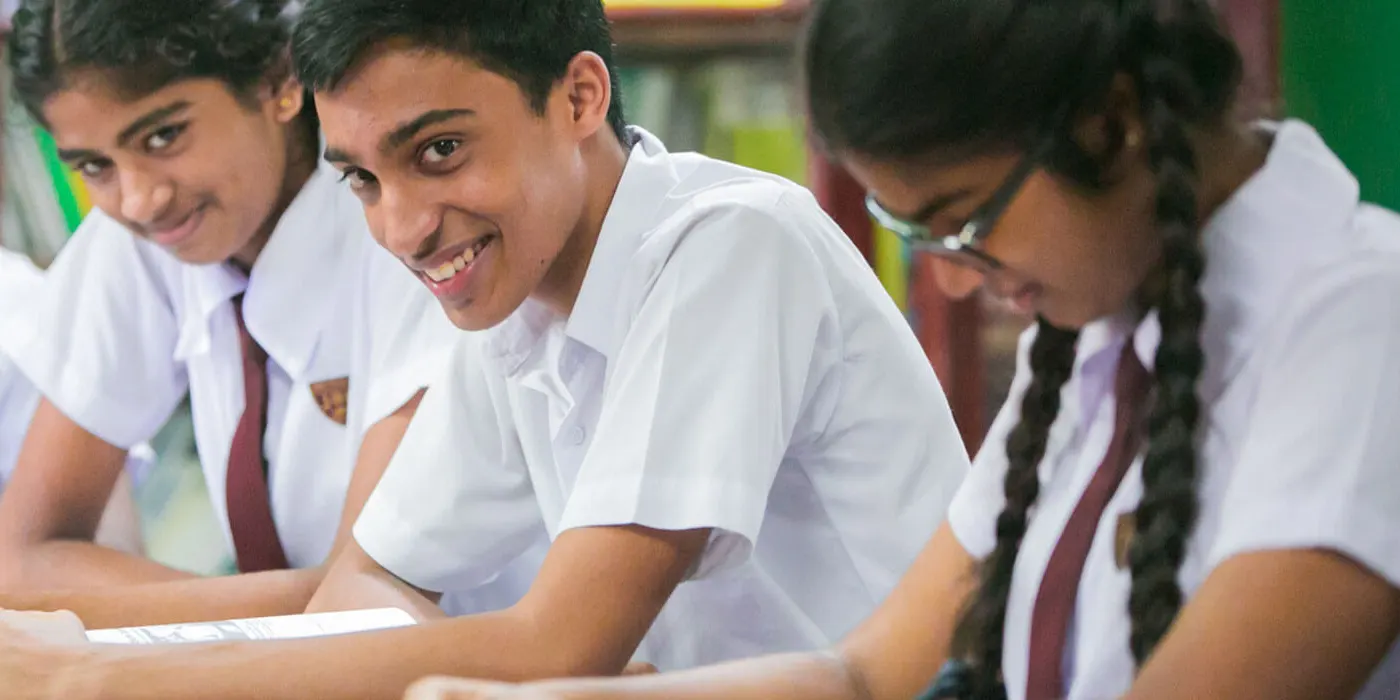
Sri Lanka is one of the few countries in the world that offers free education to all citizens, from primary school to doctorate level. This commitment to education has helped to make Sri Lanka one of the most literate countries in South Asia, with a literacy rate of 97%.
The Sri Lankan education system is based on the British model, and it is divided into three levels: primary, secondary, and tertiary. Primary school lasts for five years, secondary school lasts for seven years, and tertiary education can last for up to six years.
The Sri Lankan government provides free textbooks, uniforms, and transportation to all students enrolled in public schools. The government also provides scholarships to students who want to pursue higher education.
The high literacy rate in Sri Lanka is a testament to the country’s commitment to education. Education is seen as a valuable asset in Sri Lanka, and it is believed that education can help to improve people’s lives.
Sports in Sri Lankan Culture

Sri Lanka is a country with a rich sporting culture. The most popular sport in Sri Lanka is cricket, followed by volleyball, rugby, aquatic sports, and motor sports.
Cricket: Cricket is the most popular sport of Sri Lanka, and the national team has achieved great success in recent years. The team won the Cricket World Cup in 1996, and they have also won the ICC Champions Trophy twice.
Volleyball: Volleyball is also a popular sport in Sri Lanka, and the national team has qualified for the FIVB Volleyball World Championship several times.
Rugby: Rugby is a growing sport in Sri Lanka, and the national team has qualified for the Rugby World Cup once.
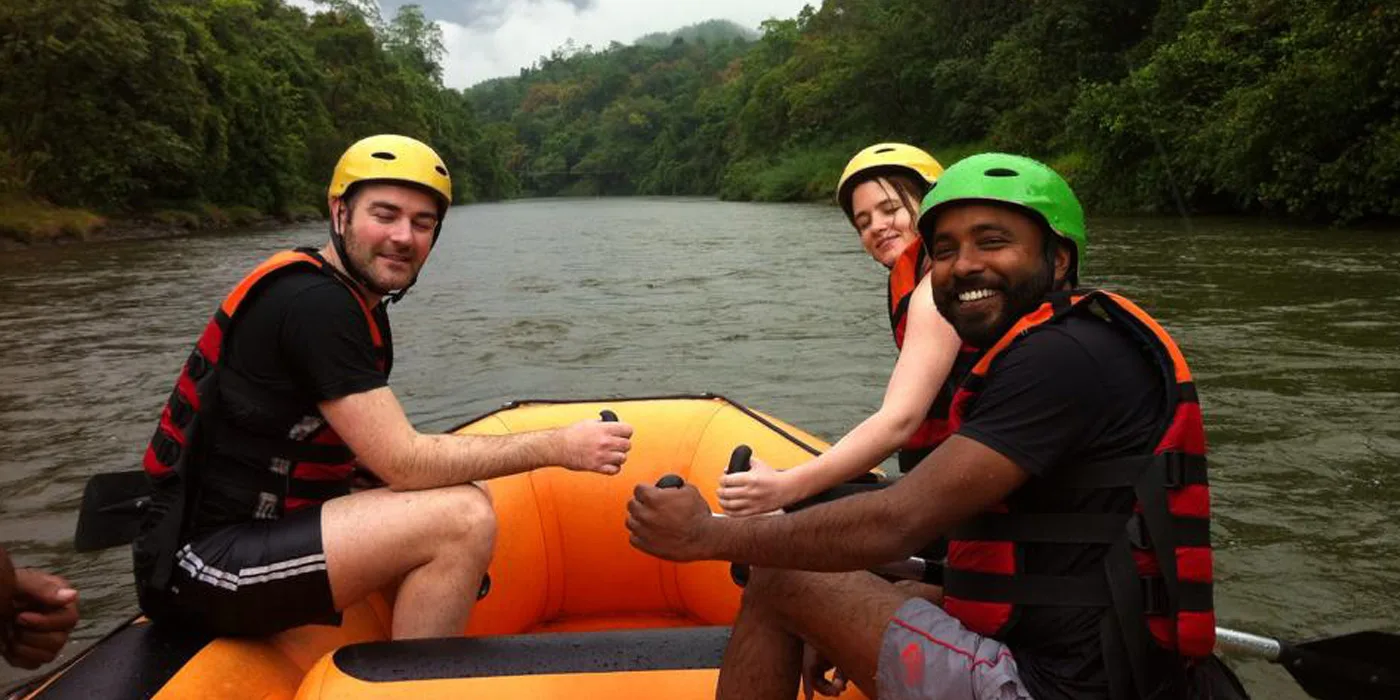
Aquatic sports: Aquatic sports such as swimming, diving, and water polo are also popular in Sri Lanka. The country has produced some world-class swimmers, including Duncan White and Julian Paul.
Motor sports: Motor sports such as Formula racing, motorcycle racing, and car racing are also gaining popularity in Sri Lanka. The country has hosted several international motor racing events, and there are a number of talented Sri Lankan drivers competing on the world stage.
In addition to these popular sports, there are a number of other sports that are played in Sri Lanka, such as football, basketball, and tennis. The country has a strong sporting tradition, and it is likely to continue to produce world-class athletes in the years to come.
Suggested reading: A Fun Guide to Water Sports in Sri Lanka During the Summer
Sri Lankan Martial Arts
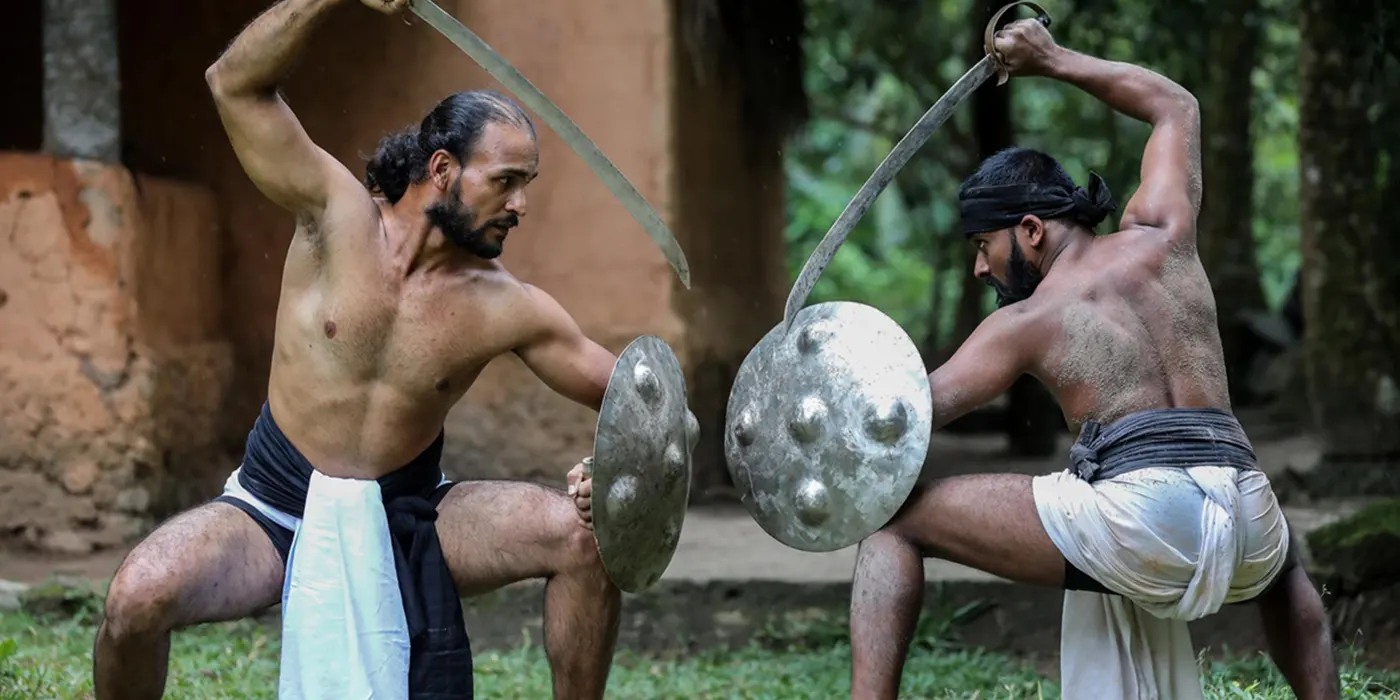
Sri Lanka has a rich tradition of martial arts, with two main styles: Chenna Di and Angampora. Chenna Di is a more modern style, while Angampora is a traditional style that has been practiced for centuries.
Chenna Di is a stick fighting style that is similar to Filipino martial arts such as Kali and Escrima. It is characterized by its use of long sticks and its emphasis on speed and agility. Chenna Di is a popular sport in Sri Lanka, and there are many competitions held each year.
Angampora is a more traditional martial art that is based on the use of unarmed strikes, grappling, and weapons. It is a highly effective fighting style, but it is also very demanding. Angampora practitioners must undergo many years of training before they can master the art.
In recent years, there has been a decline in the number of Angampora practitioners. This is due in part to the fact that the art is very difficult to learn, and it also takes a long time to master. However, there are still a number of dedicated Angampora practitioners who are committed to preserving the art.

Both Chenna Di and Angampora are important parts of Sri Lankan culture. They are a reflection of the country’s rich history and martial tradition, and they continue to be practiced by people of all ages.
Here is some more information about Sri Lankan culture:
Sri Lankan Language
The official languages of Sri Lanka are Sinhala and Tamil. Sinhala is the language of the majority Sinhalese people, while Tamil is the language of the majority Tamil people. There are also a number of other minority languages spoken in Sri Lanka, including English, Hindi, and Malay.
Sri Lankan Etiquette
Sri Lankan culture is very polite and respectful. When meeting someone for the first time, it is customary to shake hands and exchange greetings. It is also considered polite to remove your shoes before entering a temple or other religious building.
Sri Lankan Dress
The traditional dress of Sri Lanka varies depending on the ethnic group. The Sinhalese people typically wear sarongs and saris, while the Tamil people typically wear dhotis and lungis. Western clothing is also commonly worn in Sri Lanka.
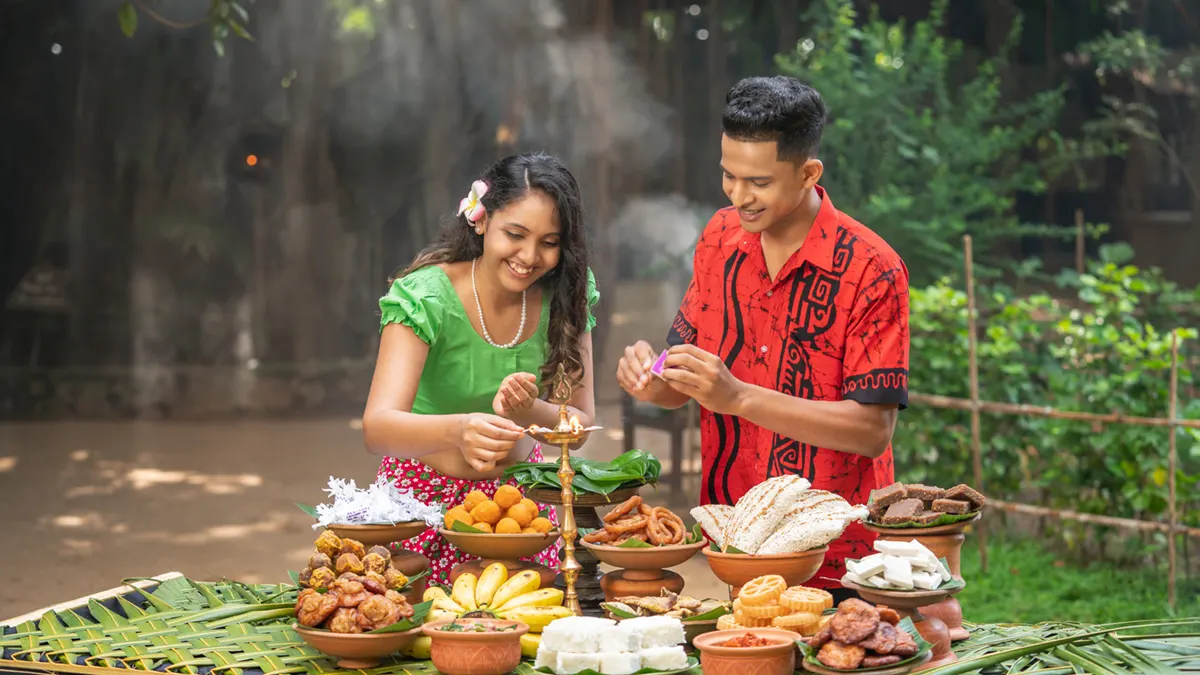
FAQs about Sri Lankan Culture
What are the main religions in sri lanka.
The main religions in Sri Lanka are Buddhism, Hinduism, Islam, and Christianity. Buddhism is the majority religion, followed by Hinduism. Islam is the third largest religion, and Christianity is the fourth largest religion.
What are some of the most popular festivals in Sri Lanka?
Some of the most popular festivals in Sri Lanka include:
- The Sinhala and Tamil New Year (April)
- The Esala Perahera (July/August)
- The Vesak Festival (May)
- The Navratri Festival (September/October)
- The Christmas and New Year’s Eve (December)
What are some of the most popular foods in Sri Lanka?
Some of the most popular foods in Sri Lanka include:
- Rice and curry
- String hoppers
- Eggplant curry
What are some of the most popular tourist destinations in Sri Lanka?
Some of the most popular tourist destinations in Sri Lanka include:
- The Cultural Triangle (Anuradhapura, Polonnaruwa, and Sigiriya)
- The Hill Country (Nuwara Eliya, Kandy, and Ella)
- The East Coast ( Trincomalee , Batticaloa, and Arugam Bay )
- The West Coast (Galle, Hikkaduwa , and Mirissa)
- The South Coast (Weligama, Unawatuna , and Mirissa)
Start Planning Your Trip to Sri Lanka Today!
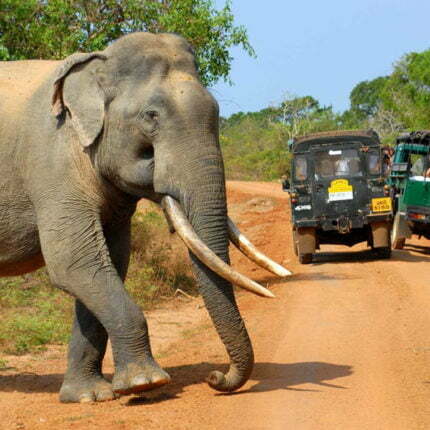
Sri Lanka Day Tour Packages
We will arrange the following Sri Lanka day tour packages according to your requests. In addition to the followings, we also can prepare many
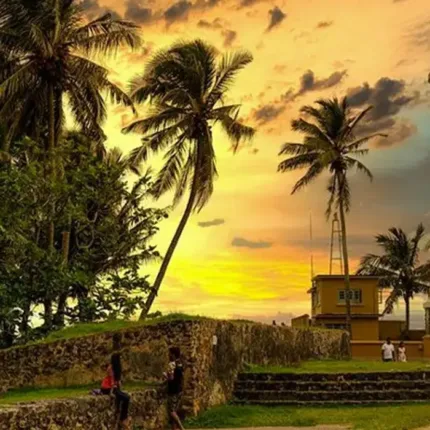
3 Days in Sri Lanka – Exclusive Year-End Offer(25%Off)
Immerse yourself in the wonders of Sri Lanka with a specially crafted 3-day tour for solo travelers
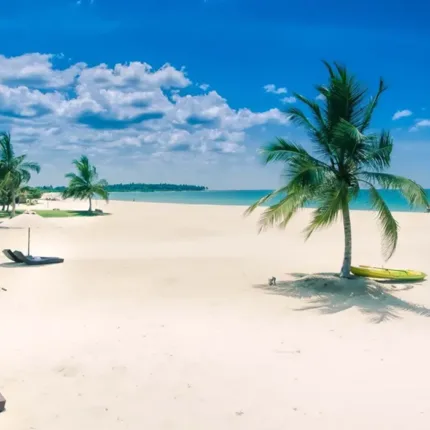
Sri Lanka East Coast Itinerary: 9-Night 10-Day Adventure
Embark on a captivating 10-day adventure along Sri Lanka East Coast Itinerary, uncovering hidden
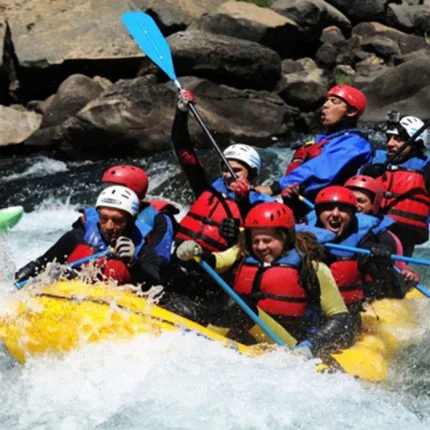
Sri Lanka 6 Day Itinerary (Gardenia) – 5 Nights 6 Days
Start your Sri Lanka 6 day itinerary with a pick-up from the airport or your hotel in Colombo. This 6-day tour

3 Days Sri Lanka Tour Package [Zinnia]
The 3 days Sri Lanka tour package “Zinnia” is one of our best budget tour packages. It starts in
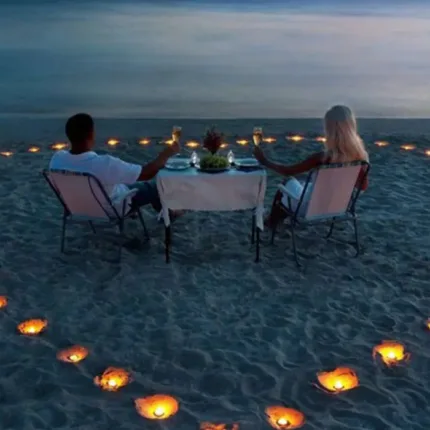
7 Day Sri Lanka Honeymoon Tour (CPL)
7-Day Sri Lanka honeymoon tour package is perfect for couples who want to experience the best
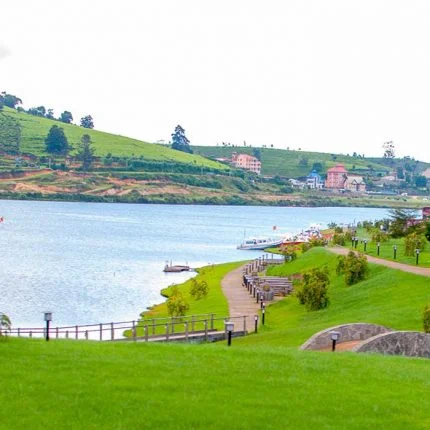
The Ultimate Sri Lanka Itinerary for 2 Weeks!
Sri Lanka itinerary 2 weeks If you’re ready to discover the most authentic destinations of Sri Lanka

Sri Lanka Honeymoon Package (6 Days)
Sri Lanka honeymoon package (6 days) starts from Colombo and ends in Colombo. Furthermore our
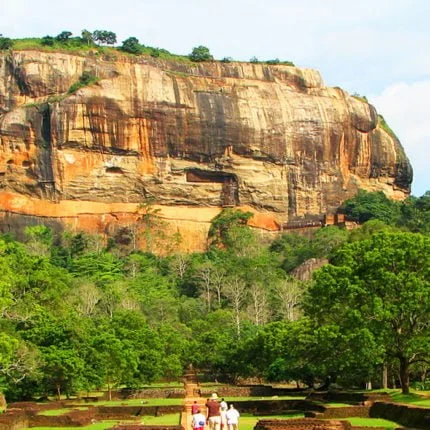
Sri Lanka 3 Days Tour Package (Rose)
The Rose Sri Lanka 3 daya tour package begins at Bandaranaike International Airport or a nearby
Copyright © 2024 Lanka Tour Experts. All Rights Reserved.

- Destinations
Top Things to Do in Sri Lanka
- Best Tourist Attractions
- Religious Places
- National Parks
- Tea Factory
- Village Experiences
- Railway Stations

Top Things to Do
- Top 5 things to do in Ella
- Top 5 things to do in Mirissa
- Top 5 things to do in Nuwara Eliya
- Top 5 things to do in Colombo
- Top 5 things to do in Kandy
- Top 5 things to do in Galle
- Top 5 things to do Around Yala
- Top 5 things to do in Bentota
- Top 5 things to do in Jaffna
- Top 5 Things to do in Matara
- Top 5 things to do in Hambantota
Ultimate Travel Guides
- Ella Travel Guide
- Mirissa Travel Guide
- Nuwara Eliya Travel Guide
- Colombo Travel Guide
- Kandy Travel Guide
Hiking Trails
- 50 Mountains to Climb in Sri lanka
- Knuckles 05 peak hike via Bambarella
- Paths to the Holy mountain (Sri Padaya)
- 5 scenic hiking trails in hill country Sri Lanka
- A Scenic Hike to Ohiya via Devil’s staircase
- Bible Rock [ Bathalegala ] Hiking guid
Featured Articles
- 10 Reasons why Sri Lanka topped Lonely Planet’s Best in Travel 2019 list
- 5 Unique East Coast Beaches in Sri Lanka
- 5 Unique Waterfalls in Sri Lanka
- 5 well-known Buddhist temples in Sri Lanka
- 5 Colonial Attractions to Visit Within Galle Fort
- 5 Bird Watching Hotspots in Sri Lanka
- 5 Types of Animals to See in Yala
- 5 Kid Friendly Attractions in Sri Lanka
- Ritigala Strict Nature Reserve (Herbal Garden)
- The Ultimate Guide to Whale Watching in Sri Lanka
- Kandy Esala Perahera is one of the greatest shows on earth
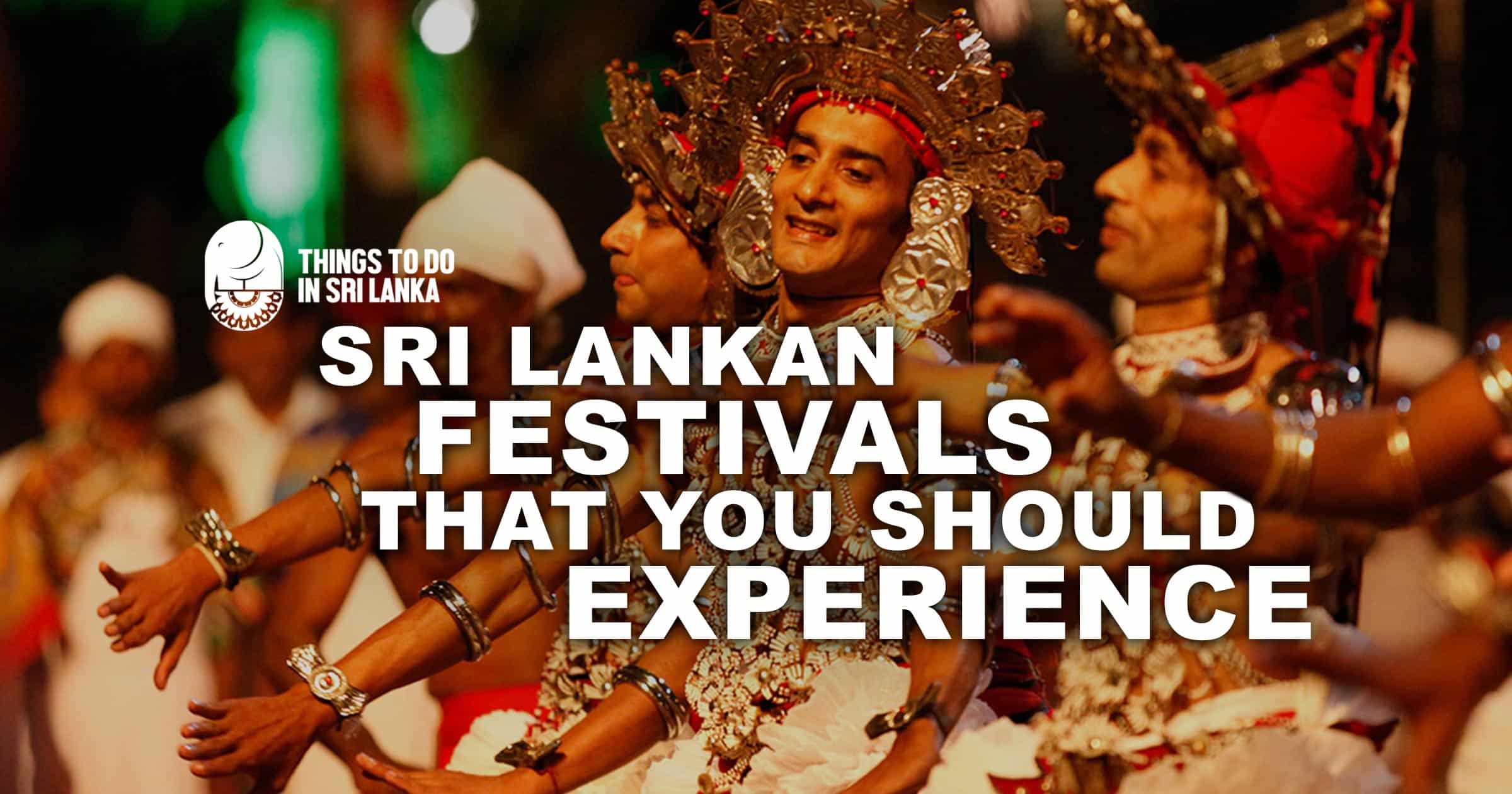
Sri Lankan Festivals that you should Experience
Sri Lanka never fails to fascinate its visitors with the most colourful and vibrant festivals. Not only that, each festival in Sri Lanka is of cultural and traditional importance and thus, offers its thousands of visitors a glimpse of the country’s culture and heritage. Sri Lanka, being the home of four main religions, celebrates festivals that equally showcase the culture and tradition of each religion. Significantly, the festival days are the times when all the Sri Lankans celebrate together in peace and harmony. Considered one of the best ways to experience the true Sri Lankan spirit, the following 12 festivals are some of the most appealing ones to experience.
1. Duruthu Perahera 2. Thai Pongal Festival 3. Independence Day 4. Maha Shivarathri Festival 5. Sinhala and Tamil New Year Festival 6. Vesak Festival 7. Vel Festival 8. Dalada Perahera 9. Madhu Festival 10. Nallur Temple Festival 11. Deepavali Festival 12. Christmas
1. Duruthu Perahera
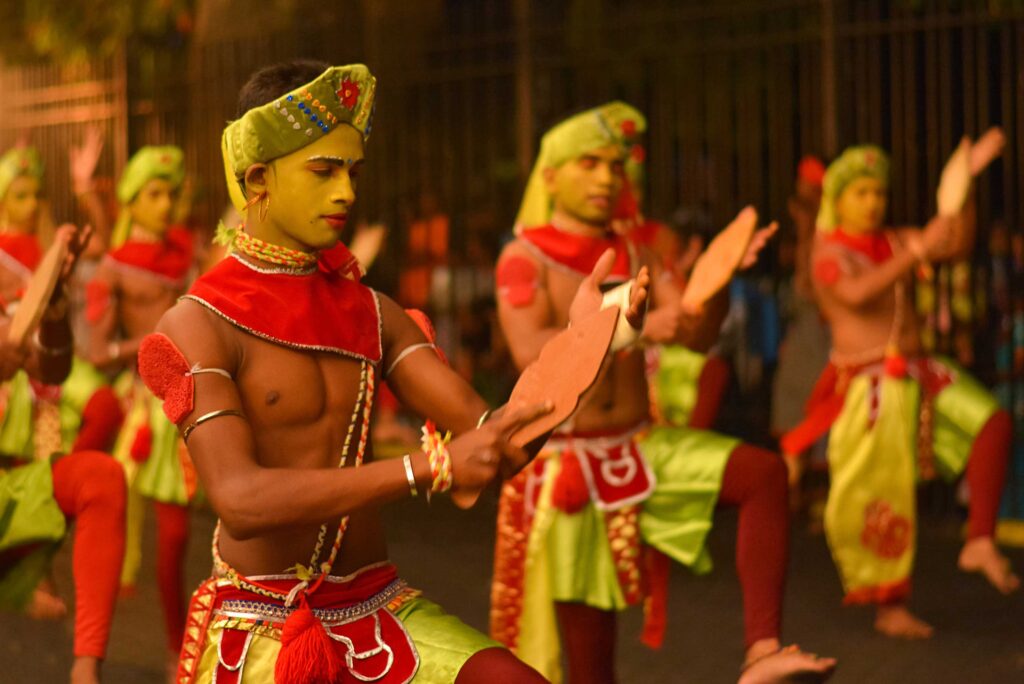
2. Thai Pongal Festival
3. independence day, 4. maha shivarathri festival, 5. sinhala and tamil new year festival, 6. vesak festival, 7. vel festival, 8. dalada perahera.
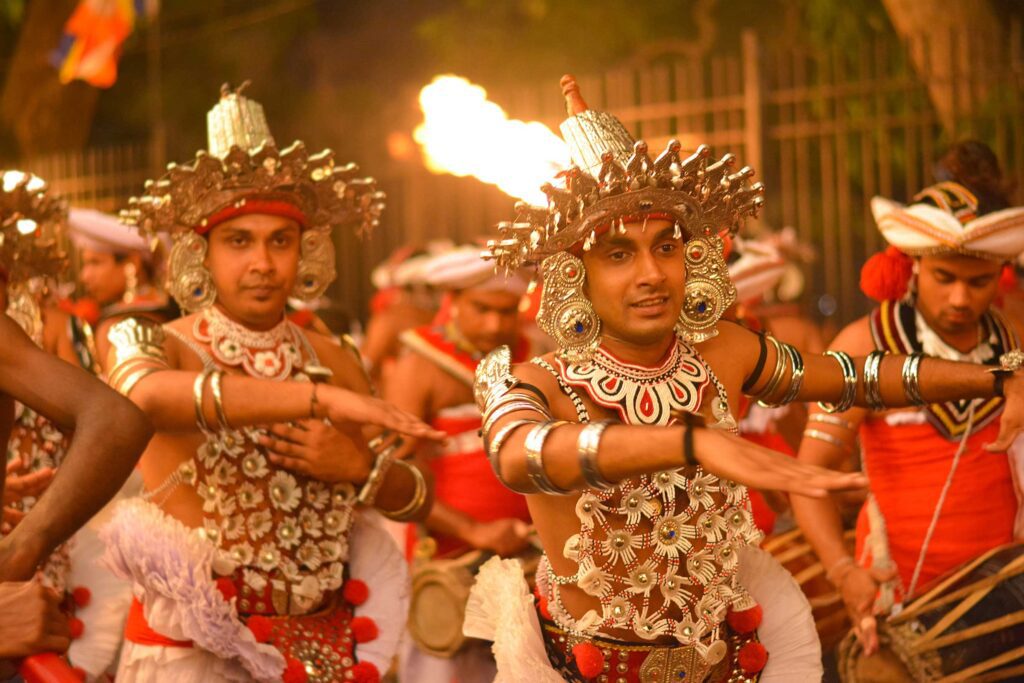
9. Madhu Festival
10. nallur temple festival.
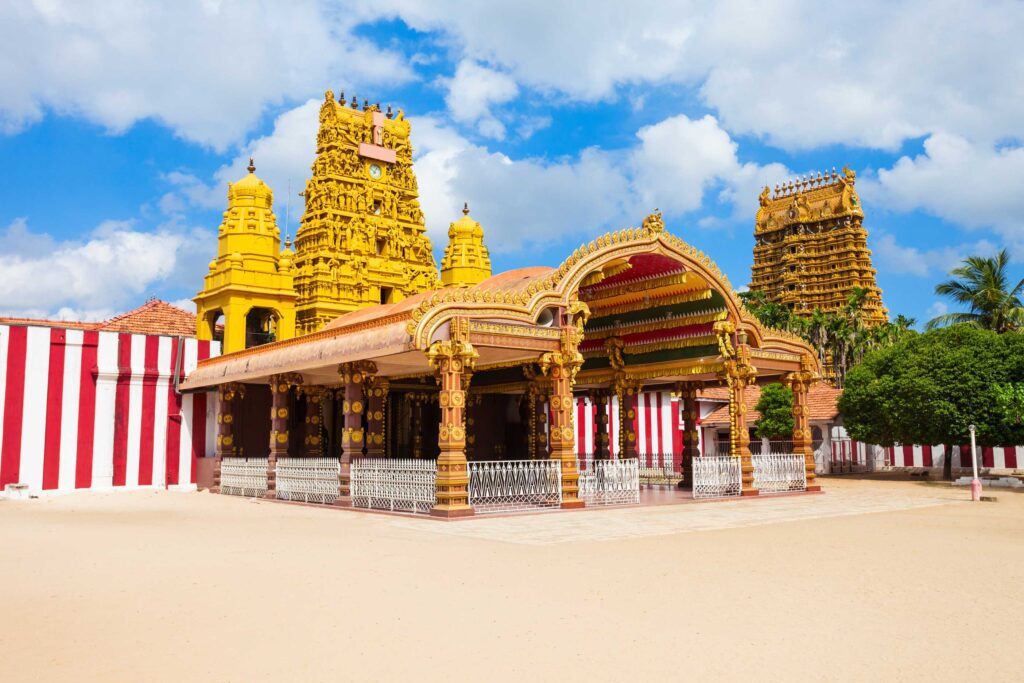
11. Deepavali Festival
12. christmas.
To sum up, Sri Lanka is a country with not less than twenty-five public holidays. There is always a reason to celebrate each month. Anybody who visits Sri Lanka during any time of the year is able to witness a memorable festival that showcases the true essence of Sri Lanka. Thus, everybody gets an opportunity to be a part of the country’s traditions and culture. Last but not the least, Sri Lanka is indeed a land filled with celebrations and this country will never disappoint you.
Subscribe to Newsletter
Singup to our Newsletter and recieve amazing information about the attractions, Things to Do, Travel Deals, Hotels, Dining options and many more
Links For Business Owners
Quick Links

© 2018 All rights Reserved. Design by W3Media.lk

Home » Travel & Tourism » Sri Lanka » Cultural Festivals in Sri Lanka
Cultural Festivals in Sri Lanka
Sri Lanka is a country with a very rich culture , especially because there is a wide variety among the people that reside in the country who belong to different ethnic groups. As a result of this diversity in the population, there are a number of cultural festivals in Sri Lanka. These festivals have both cultural as well as religious significance for the people and are deeply intertwined with the lives of the people. As we speak of culture, there are a number of factors that contribute to the culture of a country. This includes traditions , values, customs, religious beliefs, myth, folklore etc. In this article let us pay attention to some of the well known and widely celebrated cultural festivals.
Sinhala and Tamil New Year
Sinhala and Tamil New Year (13 th and 14 th of April) is celebrated by both the Sinhalese people as well as Tamils who live in Sri Lanka. This is considered as one of the most significant events or festivals for the entire country as it embraces the dawn of the traditional New Year. People of all walks of life celebrate the new year as it allows them to turn to a new page in life.
Before the new year dawns, there is an auspicious time during which people engage in religious activities. Buddhists go to the temple and offer flowers to Lord Buddha while Hindus go to Kovil. Once the auspicious time comes to an end, the entire country celebrates the new year at the same time by following traditional practices such as lighting the hearth, eating with one’s family, engaging in work etc.
During the Sinhala and Tamil New Year, people make special traditional cuisine such as kavum, kokis, aluwa, asmi etc. Also, they engage in traditional games, play drums known as the rabana, visit relatives, and spend the day in harmony with others.

Deepavali Festival
Deepavali also known as the festival of lights is celebrated by Hindus. Deepavali or else Diwali is celebrated to commemorate the victory of light over darkness. This festival is quite famous because of the rangoli decorations. You may have heard of rangoli decorations or seen them. These are created with colored powder.
Deepavali consists of special customs and practices and extends for about five days although there is a main festival. Before the special festival, Hindus usually prepare their houses and clad themselves in beautiful new clothes for the event. During the event, they light lamps inside and outside their homes. This is followed by fireworks and also a grand family meal.

Ramazan Festival (Ramadan, Ramzan Festival)
Ramazan is a festival celebrated by Muslims. During the month of Ramazan, people engage in fasting as well as religious activities. Muslims believe in extending their wealth to the poor as a part of the festival. Also during the month of Ramazan Muslims only consume one meal for the entire day.
For this meal relatives and friends are usually invited. This meal is quite similar to a grand feast where a wide variety of food is served. At the end of the Ramazan month, a special feast is organized. This is known as the Eid al Fitr.
Vesak Festival
Vesak Festival is another festival that has both cultural and religious significance for the Sri Lankan people. Mainly this is celebrated by Buddhists to commemorate the birth, enlightenment and passing away of Lord Buddha. On this day, most people observe sil. Children make Vesak lanterns and decorate the houses. The streets are also decorated with lamps, lanterns and also pandols.
During the days of Vesak, people usually go sightseeing to enjoy the beauty of Vesak. Some organize dansals (small places which provide people with food for free) for those who go sightseeing. This is one of the most colourful festivals of Sri Lanka.

Image Courtesy:
1. “ Kokis ” by Chamal N – Own work. [CC BY-SA 3.0] via Commons
2. “ The Rangoli of Lights ” by Subharnab Majumdar – originally posted to Flickr as The Rangoli of Lights. [CC BY 2.0] via Commons
3. Traditional Ramadan Meal By Subcommandante (Own work) [ GFDL or CC-BY-SA-3.0 ], via Wikimedia Commons
4. Vesak Festival Adornment By Adam Jones [ CC BY-SA 2.0 ], via Wikimedia Commons
About the Author: admin
you may also like these.
- Places To See
- Things To Do
- Plan Your Trip
- List with Us
- Holiday Types
- Travel Guide
- About Sri lanka
© Discover Sri Lanka 2024

- Top 10 Events and Festivals
Yves Alarie - Unsplash
- You are in…
- Destinations
Experience Sri Lanka's thrilling events and festivals that will get your pulse-racing. From religious festivals that highlight the beautiful culture and traditions of Sri Lanka, to exciting sport events, the diverse variety of events and festivals in Sri Lanka are an endless list.

Provide details on what you need help with along with a budget and time limit. Questions are posted anonymously and can be made 100% private.

Studypool matches you to the best tutor to help you with your question. Our tutors are highly qualified and vetted.

Your matched tutor provides personalized help according to your question details. Payment is made only after you have completed your 1-on-1 session and are satisfied with your session.

- Homework Q&A
- Become a Tutor
All Subjects
Mathematics
Programming
Health & Medical
Engineering
Computer Science
Foreign Languages
Access over 20 million homework & study documents
A religious festival in sri lanka essay.

Sign up to view the full document!

24/7 Homework Help
Stuck on a homework question? Our verified tutors can answer all questions, from basic math to advanced rocket science !

Similar Documents
working on a homework question?
Studypool is powered by Microtutoring TM
Copyright © 2024. Studypool Inc.
Studypool is not sponsored or endorsed by any college or university.
Ongoing Conversations

Access over 20 million homework documents through the notebank
Get on-demand Q&A homework help from verified tutors
Read 1000s of rich book guides covering popular titles

Sign up with Google
Sign up with Facebook
Already have an account? Login
Login with Google
Login with Facebook
Don't have an account? Sign Up

Inspiring • Authentic • Tailor-Made

- South Africa
Collections
- Opera Holidays
- Rail Holidays
- River Cruises
- Self-Drive Holidays
- Wildlife Holidays
- Verona Opera Holidays
- Venice Opera Holidays
- Vienna Opera Holidays
- Rome Opera Holidays
- Milan Opera Holidays
- Berlin Opera Holidays
- Venice Simplon-Orient-Express, Italy
- Eastern & Oriental Express, Malaysia
- Royal Scotsman, Scotland
- Rocky Mountaineer, Canada
- Blue Train, South Africa
- Palace on Wheels, India
- Cambodia River Cruises
- India River Cruises
- Laos River Cruises
- Vietnam River Cruises
- USA Self-Drive Holidays
- Canada Self-Drive Holidays
- South Africa Self-Drive Holidays

European opera house

International rail holidays

Asian river cruises

Bixby Creek Bridge in California, USA

Asian elephants
Young monks in Anuradhapura, Sri Lanka
- You are here:

11 Festivals Not to Miss in Sri Lanka

With four major religions, diverse culture and no less than 25 public holidays, the teardrop island of Sri Lanka is a land of vibrant festivals and colourful celebrations. Sri Lankan festivities don’t only showcase the culture and religions of the country, but also its intriguing history and beautiful traditions. Here is our list of Sri Lanka’s most exciting and intriguing festivals.
1 Vel Festival

Vel is Sri Lanka’s most important Hindu festival which reflects the religious and cultural heritage of Hinduism. The main celebrations take part in Colombo which attracts thousands of pilgrims from all over the island. Dedicated to the war god Skandha, the festivities commemorate the victory over evil forces and worships his trident, the vel. During the main procession in Colombo which starts in Pettah and ends in Bambalapitiya, Skandha’s vel is placed in a dazzling gold chariot which is pulled by hundreds of devotees dressed simply in white with their faces smeared in holy ash. Accompanying the main event is hundreds of musicians, dancers, acrobats and elephants who snake through the various parts of the city. Together with the aroma of burning incense and jasmine flowers, the sound of drums, bells and chants and colourful performers parading the streets, the Vel festival is a spectacular and mesmerising sight.
When: July or August Where: Colombo
2 Nallur Festival

Running for 25 days, the enormous and spectacular Nallur Festival held in Jaffna rivals the grand celebrations of those at the Kandy Esala Perahera. The remarkable Kandaswamy Temple becomes the focus of the festival where thousands of followers congregate. Men dress in white sarongs, and women wear their best saris which transforms the temple complex into a sea of vibrant colours. Throughout Nallur there are many parades featuring juggernaut floats, performers and glistening thrones being carried around town. The 24th day of Nallur marks the Ther festivities whereby a huge chariot is pulled by hundreds of sarong-clad men and becomes the biggest night of the holiday. The following day, entranced devotees display self-mutilation by driving skewers through their bodies and make their way to the temple to the beat of drums and stopping periodically to dance. The enthusiasts who perform these self-mortifications believe that god will protect them from any pain.
When: August to September Where: Jaffna
3 Sinhala and Tamil New Year

The Sinhala and Tamil New Year takes place at the beginning of the Lunar year, typically April, where the whole island comes alive with colourful festivities and a vibrant spirit. In the run up to the New Year celebrations, Sri Lankans will prepare by cleaning and decorating their houses, making traditional sweets and desserts and spending time with loved ones. During the actual day, locals will adorn their best outfits and take part in numerous activities such as blessing their children with herbal oils, sharing the first home-cooked feast of the year with family, setting off fireworks and playing games in the street. Sri Lankan New Year is an exciting time to be visiting the teardrop island, however, like many other holidays, many businesses close so families are able to celebrate together.
When: April Where: Across The Island

Speaking to one of our experienced sales consultants is the best way to begin your Sri Lanka holiday enquiry.
It allows us to answer any questions you may have as well as make suggestions and recommendations for your planned trip.
We are available on evenings and weekends by prior appointment so please do not hesitate to book a call in with us at a time convenient to you.
4 Vesak Poya

Observed and celebrated by Buddhists, this important religious and cultural festival begins on the full moon of the lunar month of Vesak, which is May on the Gregorian calendar. This week-long celebration, known as the Festival of Light, commemorates the Buddha’s birth, attainment of enlightenment and his passing into nirvana. During Vesak, the whole island and especially Colombo, becomes a kaleidoscope of coloured lights and lanterns, whilst devotees hand out food and drinks to passers-by and spend the days in their local temple practising religious activities such as praying and fasting. Amid the festivities, the highlight is the colourful lanterns and lights outside ever Buddhist home, temple and shop, it truly is a mesmerising sight. If in Sri Lanka in May, Vesak Poya is a wonderful and vibrant festival for visitors to experience, however the sale of alcohol and fresh meat is usually prohibited during the week period.
When: May Where: Across the island, but Colombo’s celebrations are on a grand scale
5 Maha Shivarathri

Commemorating the marriage of Shiva to Parvati, Maha Shivarathri is the most important celebration for Shaivites, who make up the majority of Sri Lanka’s Hindus. The make up of the festival includes prayers, all-night vigils and parties around homes and temples all over the island. At the beginning of each day, worshipers take a purification bath and after, carry water pots to their local temple in order to bathe Shiva statues in milk and honey and cover them in red vermillion to symbolise purifying the soul. Devotees will also fast all day during Maha Shivarathri. Meditation rituals are also an important part of the festival and some temples such as the Sri Kailshwarar in Colombo celebrate with music and dance performances, creating a vibrant and mesmerising commemoration.
When: March Where: Across the island
6 Kandy Esala Perahera

The Kandy Esala Perahera is a week-long festival which is considered one of the oldest and most extravagant of Sri Lanka’s Buddhist celebrations. This grand holiday observed in the month of Esala (July or August), is also known as the Festival of the Tooth and pays homage to the sacred tooth relic of the Buddha, which is enshrined in the city’s revered temple. During this period, thousands of Sri Lankan’s flock to the central city of Kandy to watch and take part in the extravaganza. Throughout the festival, some 5,000 dancers, drummers, fire jugglers, musicians perform during various celebrations and processions who are all lavishly dressed wearing elaborate traditional costumes. Even elephants take part in the parade and are adorned with flamboyant garments and gems.With spectacular goings-on every day during the festival, the experience is unmissable if you are in Sri Lanka during this time.
When: July or August Where: Kandy

Sri Lanka - A Tropical Jewel
Discover Sri Lanka's cultural triangle, exploring the world heritage sites of Polonnaruwa and Anuradhapura, the rock fortress of Sigiriya and the cave monastery complex at Dambulla.
7 Kataragama Festival

Held in the remote southern town of Kataragama, one of the holiest places on the island, this festival is of significant religious importance in Sri Lanka. Celebrated as the same time as Kandy’s Esala Perahera, Kataragama’s version may not be as famous, but it is still on the same grandeur and vibrant scale. Although the festivities at Kataragama during July or August are predominantly celebrated by Hindus, other groups from major Sri Lankan faiths such as Muslims and Veddas also attend. The pilgrims are there to fulfil their vows and seek divine guidance from Lord Kataragama and often indulge in rituals such as acts of self-mutilation such as skin piercing. As the festivities begin, locals and visitors can enjoy the energy and excitement of elephant parades, musicians, dancers, fire eaters and jugglers and acrobats who all perform to the rhythm of the chants and drums.
When: July & August Where: Kataragama
8 Pada Yatra Pilgrimage

Prior to the Kataragama Festival, thousands of devotees take part in the two-month Pada Yatra pilgrimage, otherwise known as The Long Walk to Kataragama. This traditional and challenging foot-pilgrim begins at the Jaffna Peninsula in the north, and the journey follows south down the beautiful east coast of Sri Lanka, through the spectacular Yala National Park and on to the holy Kataragama shrine in the jungle. The oldest annual pilgrimage in Sri Lanka, traditionally was made up of village worshipers, however now those taking part represent a fuller spectrum of society and religious groups. Sri Lankans from all different backgrounds join together to complete the incredible spiritual journey along diverse and beautiful landscapes in order to reach he sanctified Kataragama.
When: June to July Where: Kataragama
9 Thai Pongal

Thai Pongal has been celebrated for over 1,000 years and is one of the most cherished of Tamil holidays. It starts on the first day of Thai on the traditional Tamil calendar, which usually falls in mid-January, and marks the start of the sun’s six-month journey northbound. This important harvest festival focuses on honouring the sun god ‘Surya’ as well as cattle, both which play an integral role in bringing a good harvest. Traditionally in India the festival runs over four days, however Sri Lankan’s tend to keep the festivities limited to two days. During the first day of Thai Pongal, families decorate their homes with banana leaves and colourful kolam patterns made with rice flour and boil rice in milk along with spices, nuts and raisins to share with locals. On the second day, the cattle that help farmers in their rice fields are honoured by being bathed, painted with coloured dyes and given beautiful garlands that hang around their neck and horns.
When: January Where: Across the country
10 Poson Poya

Holding both historic and religious significance, Poson Poya is an annual Buddhist festival which is celebrated island-wide in order to commemorate the arrival of Buddhism to Sri Lanka in the 3rd century BC. Although festivities happen all over Sri Lanka, Mihintale provides the grandest affair. The Mihintale rock outcrop is believed to be the place where Buddhism was first introduced in Sri Lanka after a meeting between the Buddhist monk Mahinda and King Devanampiyatissa took place. During the holiday, thousands of white-clothed pilgrims ascend the 1843 steps to the mountain peak temple to pray. Other activities during Poson Poya include lighting lanterns, cooking feasts and sharing with others and Buddhism teachings. There are also exciting celebrations in nearby Anuradhapura where the famous temples come alive with traditions festivities.
When: June Where: Anuradhapura & Mihintale
11 Deepavali

The festival of lights is one of the most significant celebrations in the Hindu calendar and is observed by the Tamil community in Sri Lanka. The name Deepavali is the name given in southern India and is known more commonly in the north and other areas of the world as Diwali. The festival celebrates Lord Rama’s defeat of Ravana which signifies the defeat of light over darkness, good over evil and hope over despair. During the festivities, thousands of flickering oil lamps outside houses and temples symbolise the victory and invite the blessings of Lakshmi, the goddess of wealth. Traditionally families come together wearing new clothes whilst sharing a meal and exchanging gifts and other celebrations include spectacular firework displays, making homemade sweets and visiting local shrines and temples.
When: October Where: Across the island
Holiday Suggestions
14 days from £2970 to £3560 per person
Hidden Treasures of Sri Lanka
16 days from £4790 to £5750 per person
Wild Sri Lanka
15 days from £3800 to £4560 per person
Keep In Touch With Pettitts Travel
Sign up for our weekly travel ideas by email, keeping you up to date and inspiring you with ideas, information and suggestions for your next holiday.

01892 515 966
Speak to one of our Travel Consultants (* fields are required)
Mihintale, the Wonderful Cultural Attraction in Splendid Sri Lanka!

The splendid island of Sri Lanka is blessed with a number of religious and cultural attractions , owing to the rich heritage that it owns. Among them, Mihintale is one of the significant attractions, as a cultural attraction, as well as a hiking spot. Thus, Mihintale happens to be a place that many tourists visit if they visit the ancient city of Anuradhapura . Hence, we thought of enlightening you about this wonderful place, through this read. Continue reading, and you will surely visit Mihintale, the next time you visit Sri Lanka!
History Related to Mihintale
Mihintale or Missaka pawwa is a small town. Still, whenever someone hears this name, it is the Mihintale rock that comes into their mind for sure. In fact, it is this rock that gives this town its significance. Thus, we cannot explore the history of Mihintale, without getting to know about this wonderful rock. So, let us get to know about the history of this most visited town, by getting to know about the Mihintale rock.
Mihintale Rock
The Mihintale rock also called Aradhana gala is a significant place with an appreciable historic value to Sri Lankans, especially for Buddhists. It is the place where Arhat Mahinda Thero met King Devanampiya Tissa , the ruler of Sri Lanka for the very first time. This historical incident which changed Sri Lanka in every aspect took place in 306 – 307 B.C.
Arhat Mahinda Thero was the son of Emperor Dharmashoka of India. The emperor and King Devanampiyatissa were best friends. Thus, as the greatest gift, the emperor sent his son Arhat Mahinda Thero with the message of Lord Buddha, to implement Buddhism in Sri Lanka. However, Arhat Mahinda Thero arrived in Sri Lanka with a faction of the following six people along with him on a Poson Fullmoon Poya day.
- Iththiya Thero
- Uththiya Thero
- Sambala Thero
- Bhaddasala Thero
- Sumana Samanera
- Bhanduka Upasaka
When Arhat Mahinda Thero landed at the top of Aradhana Gala in Mihintale, King Devanampiyatissa was busy chasing a deer. Later, Thero preached “Chullahaththi Padopama Sutta” to the King and then he embraced Buddhism at Mihintale. Until then Sri Lankans used to worship rocks, trees, sun, moon, and natural elements as such.
The King built monasteries for Arhat Mahinda Thero and the monks arrived along with him to stay and preach dhamma. When the King patronized Buddhism, naturally the subjects of him embraced Buddhism after listening to the Dhamma Suttas preached by Arhat Mahinda Thero. Thus, the establishment of Bhikku and Bhikkuni Sasana in Sri Lanka happened afterward with the help of Arahat Sanghamitta Theri.
Since all the four parties, Bhikku, Bhikkuni, Upasaka, and Upasika had established, along with the powerful patronizing, Buddhism had a great start as a religion on the Island. Since then Buddhism has woven around society and its people in an inseparable way.
Location of Mihintale
Mihintale is located in the North Central province of Sri Lanka in the Anuradhapura district. It is near the sacred historical city of Anuradhapura . Besides, Anuradhapura was the very first capital of ancient Sri Lanka. Thus, it stood as the main hub of Buddhist heritage, culture , and religion on this charming island. The distance between Anuradhapura city and Mihintale town is 10.17 km. There is a walking distance from Mihintale town to the Mihintale rock. The rock is nearly 311 meters (1019 feet) above sea level. Thus, Mihintale is of enormous religious and historical importance as a town in the cultural triangle.
Mihintale is in the dry zone of the Island and contains several mountains. Out of them, the following are the leading.
- Rajagiri Lena
The temperature of Mihintale ranges from warm to hot. In addition, it is an agricultural area that has inland water bodies such as the Mihintale tank and Maha Kanadara Tank that are useful for cultivation purposes. The monsoon rainfalls occur here and the wind is common too. Besides, there is a forest reserve located near Mihintale town which consists of a better diversity of flora and fauna.
Further, Mihintale city consists of many historical and religious monuments. Moreover, the ruins and the remaining historical constructions have made this town an archaeological significance . Thus, it has become one of the cities with higher tourist attractions that supports the tourism industry in Sri Lanka . However, the town bears a great ethnic diversity. The people who belong to different religions, ethnic groups who speak various languages live harmoniously here for more than centuries.
How to Get to Mihintale
There are different modes of travel to Mihintale. It can be by bus, by train or even by taxi according to the travelers’ preference.
Traveling to Mihintale by Train
There are express trains, intercity trains, and special trains to reach Mihintale. If using a train, the visitors have to get off at the Anuradhapura railway station or Anuradhapura New Town train station. Then they can take a taxi or bus to reach Mihintale town. An intercity train from Colombo Fort railway station usually takes 3 to 4 hours to reach Anuradhapura city. Then you will have to spend another 30 to 40 minutes to reach Mihintale town, if by bus and if by taxi, it may take 20 to 30 minutes. If you take the train from Colombo Fort, there are many intercity trains starting from there and going all the way to Jaffna . Yaal Devi, Uththara Devi, Sri Devi, Rajarata Rajina are a few of them. Usually, the trains go via Kurunegala city.
Traveling to Mihintale by Bus
If a visitor hopes to take the bus from Colombo , it will take 5 to 6 hours traveling time and get off at Mihintale town directly. There are basically two bus routes to reach Mihintale. One is via Kurunegala and the other is via Negombo , Chilaw and Puttalam. In both trains and buses, seat reservation is available with either air-conditioned or non-air-conditioned options.
Traveling to Mihintale by Taxi
If a visitor hopes to take a taxi to visit Mihintale, the route can be changed as per the passengers’ wish. Similarly, the speed whereas the time taken to complete the journey mainly depend on the travelers. Also, the cost for a taxi ride to Mihintale would depend on the service provider you choose. So, it is up to you to contact a few service providers, in order to choose the most convenient and cost-effective taxi service to travel to Mihintale.
Poson at Mihintale
Sri Lanka, as a country with Theravada Buddhism, celebrates the Poson festival with the government’s patronage all over the country. Similarly, people who live around the Mihintale area celebrate the Poson Poya day with much festivity because it stands as the center of this festival. In addition, it has a great religious and historical value which pilgrims from all over the country come to visit Mihintale during the Poson season.
Anyone who visits Mihintale during the Poson festival has the chance to witness large lanterns with beautiful colors and shapes and pandals. These pandals exhibit the important incidents related to Mahindagamanaya (The arrival of Arahat Mahinda Thero). Moreover, all the temples, aranyas, and other religious institutes organize a number of religious activities including preaching dhamma, meditating sessions, observing Sil, and almsgiving. In addition, “Poson Bathi Gee” (songs devoted to the Poson festival) takes a prominent place during this festival season.
On this festival day, Mihintale town becomes totally crowded with pilgrims and can barely see the temple premises due to the higher pilgrim density. In addition to the religious rituals, the Poson festival brings Poson fairs, which sell fancy items near the Mihintale town. Pilgrims and the villagers go and buy whatever they like from them. Furthermore, Poson dansal are other significant events that enhance the good quality of the almsgiving habit. Dansals provide different types of food to pilgrims free of charge. The types of dansals vary according to the type of food and things they give out. They range from bread, manioc, milk rice, ice cream, rice and curry, green porridge to some kinds of medicinal drinks.
Places to Visit at Mihintale
Being a great part of Sri Lanka’s fascinating history , there are many places to visit in Mihintale which can be either of religious value or historical value or both. Almost all of them are related to Buddhism and the monks. These places and institutes are dedicated and built by the ancient kings and rulers of Sri Lanka. Once pilgrims come to Mihintale, they have the chance to walk from one place to another, because these places are located close to each other. However, whether you come in small groups or large groups it is better to visit all these places on foot while enjoying nature.
Furthermore, you can find below some of the interesting places in Mihintale which reveal to you the glory of Sri Lanka’s history .
- Aradhana Gala
- The Ancient Hospital
- Kantaka Chetiya
- The Refectory
- The Cave of Arahat Mahinda (Mihindu Guhawa)
- Ambastala Dagaba (Mihintale Maha Seya) and the Vatadage
- Assembly Hall of Mihintale
- Ata Seta Len (Sixty Eight Caves of Mihintale)
- Eth Vehera Stupa in Mihintale Monastery
- Giribhanda Seya Stupa
- Idikatu Seya Monastery Complex
- Kaludiya Pokuna (Black-water Pond)
- Kantaka Chethiya
- Katu Seya Stupa
- Mihindu Seya
- Naga Pokuna
- Sinha Pokuna (Lion Pond) of Mihintale
- Pothgula Ruins near Singha Pokuna
- Rajagiri Kanda and Rajagiri Cave
- Relic House and the Inscription of King Mahinda IV
Knowing what they are, let us now have a glimpse of the historical as well as the archeological importance of each of these sites.
1. Aradhana Gala of Mihintale
The Sinhala meaning of Aradhana Gala is the “Rock of Invitation”. It stands facing Ruwanweli Maha Seya in Anuradhapura . According to the Mahavamsa, Arahath Mahinda Thero landed on the Aradhana Gala. Buddhists around the world visit Aradhana Gala especially on Poson Poya day to celebrate the birth of Buddhism in Sri Lanka. At present, pilgrims can climb this rock even during the windy weather because there are iron railings on the way up to the top of the rock. When climbing the top, anyone has the chance to enjoy the enchanting beauty of the surroundings. So, this not only remains a significant religious and cultural attraction but also a hiking spot for small hikes.
2. The Ancient Hospital
The hospital complex that belongs to the ancient monastery of Mihintale is in between the old Jaffna road and the archaeology museum of Mihintale. You can find the remains at the entrance of the Mihintale site.
King Sena the Second built this hospital complex according to the inscription that belonged to the tenth century found at the site. A Chinese Mahayana Buddhist monk named Fahien discovered that more than 2000 Buddhist monks lived in Mihintale in the fifth century. The ancient king of Anuradhapura Kingdom built this hospital complex in order to provide basic health facilities to the monks. However, the medicine bathtubs used in this hospital have become ruins at present. Furthermore, the hospital contained four rooms to consult the patients, prepare patients, store medicine, and give hot baths to the patients.
In addition, the excavations found blue color jars and clay wares that prove the trade connections between Iran and Sri Lanka at that time. However, the amazing fact about the ruins of the hospital located in Mihintale is that the archeologists believe it is the oldest hospital that ever existed in the world.
3. Kantaka Chetiya
Only the ruins of this ancient attraction are available at present. The archaeological facts reveal that its height was nearly 40 feet and the circumference of the pagoda was about 425 feet. Besides, this stupa has a frontispiece in Sinhala “Wahalkada” joining the four main directions. However, two of the four of them are in good condition even for today. The southern Wahalkada is in the best condition in relation to the others. These Wahalkada had carvings of dwarfs, animals, humans, divine and mythical creatures, flower patterns, and geese to themselves. The caves close to the pagoda were the places prepared for the monks to stay at the very early times.
The one who built this stupa is not known but King Lajjatissa (ruled 119 to 109 B.C.) constructed a stone mantelpiece, which can assume that the building of the stupa happened before that period. The paintings on the southern Wahalkada are of huge importance because, in addition to the frescos from Sigiriya , Mihintale is another place where frescos belonging to the earliest period are visible.
4. The Refectory
The refectory is the place where monks had the meals. It has several names in Sinhala such as Danhala, Bath Ge , etc. The building is rectangular in shape containing a central quadrangle that has no roof. Thus, you can see the sky when looking up from the granite slab floor.
Moreover, there are two big dugouts of different sizes. They are named Bath Oruwa and Kenda Oruwa in Sinhala while Rice boat and Porridge boa in English respectively. These ditches used to have an inlaid metal layer as per archaeologists. In addition, the refectory contained water vats and covered sewers to manage the need for water. An amusing fact is that the tablets found in Mihintale have information about the servants who worked here and about the wages paid to them. These servants are as follows.
- Bath Ge Ledi – The warden of the refectory
- Sala Jetak – The head of the servants
- Pisana Salayin Dolos Janak – Twelve servants for cooking
- Dar Nanga Bath Pack Salayak – Servants for procuring firewood and cooking food
- Ni Pise Dar Nengu Salayak – Servants for only bringing firewood but not for cooking
- Negu Dare Bath Pack Salayak – Servant for only cooking using the firewood fetched by others
5. The Cave of Arahat Mahinda (Mihindu Guhawa)
After the arrival of Arahat Mahinda Thero in Sri Lanka, the Kings started to build monastery complexes with almost all the facilities including hospitals for the bhikkhus to stay. Accordingly, Mihindu Guhawa happens to be the place where Arahath Mihindu Thero meditated after preaching dhamma to King Devanampiya Tissa . It has a great view and is the place with the most scenic beauty in the whole monastery. The seat was a sculpture of a rock. Moreover, the rectangular area in this cave is assumed to be the sleeping area of Arahat Mahinda Thero. In addition, three hundred yards down from the upper terrace and to the eastern side, there is a cave sheltered with a stone slab where the cave of Arahath Mihindu Thero can be seen.
6. Ambastala Dagaba (Mihintale Maha Seya) and the Vatadage
This is on the upper terrace of the Mihintale complex. Once climbing up the 1840 steps the Ambasthala Dagaba comes into sight. According to history, King Mahadhatika Mahanama who ruled the country from 9 to 21 A.C constructed the stupa on the exact location where King Devanampiya Tissa met Arahath Mihindu Thero. It is the largest and the most perceptive pagoda on the way to the top of Mihintale rock. The diameter of the base of the pagoda at present is 136 feet and the height is approximately 40 feet. Pujavaliya and the slab inscriptions of King Mahinda IV referred to the Mihintale Maha Seya as Ambulu Seya. As per chronicles, King Mahadhatika Mahanama enshrined the Urna Roma Dhatu (the spiral on the forehead of Lord Buddha) inside this Ambasthala stupa.
Later, during the second and third centuries added a Watadageya made with a wooden roof and stone pillars to protect the pagoda from sunlight and rain. Ruwanweli Maha Seya and Jethawanaramaya in Anuradhapura are clearly visible at this place. Mihintale Maha Seya is the symbol of Mihintale as it looks indescribably beautiful at sunset and on full moon nights.
7. Assembly Hall of Mihintale
The assembly hall or the Sannipatha Salawa in Sinhala is an essential component of a Buddhist monastery to make it whole. In fact, the assembly hall was the place where bhikkhus gathered to talk through the commonly interesting matters concerning the administration of discipline. The most senior bhikkhu of the monastery was to chair those meetings. According to the inscription that in the neighborhood of Mihintale Assembly hall, the most senior monk of the monastery was called the “Naka Balana Himi” in Sinhala with the meaning the chief monk of fraternity. The highest stone seat in the middle of the hall was reserved for him because then only everybody in the hall could see and hear him clearly and with respect as well.
In addition, they have built the assembly hall at the center of the huge monastery complex. Thus, the monks could gather there quickly even at a short notice. Furthermore, monks used this hall to preach dhamma too. However, it is square in shape with 62 feet of length on each side. Archeologists assume that there were about 64 stone pillars to support the symmetrical roof of the hall. At present, anyone who visits this place has the chance to witness the ruins of these stone pillars at the premises.
8. Ata Seta Len (Sixty Eight Caves of Mihintale)
A few meters away on the old road by the Lion pond or Singha Pokuna, there is a huge rocky overhang on the right. It is where a bunch of 68 caves was built using these rocks for the shelter of monks. In Sinhala “Ata Seta” gives the meaning of sixty-eight. King Devanapiya Tissa constructed the caves under the guidance and advice of Arahath Mihindu Thero 250 years before the birth of Jesus Christ. Early Brahmin inscriptions found on the drip ledges of the caves confirmed that King Devanampiya Tissa prepared these caves for the monks to conduct meditating and learning activities.
9. Eth Vehera Stupa in Mihintale Monastery
Eth Vehera, meaning the Pagoda of the elephant, is one of the three mountains in the Mihintale mountain range. The path towards the Eth Vehera has the best view of the surrounding area. It is the highest of the three main hills in the Mihintale mountain range. The ruins of the Eth Vehera at the top of the mountain are relatively small. Moreover, the Eth Vehera is about 27 meters in diameter.
However, there is no recorded history regarding the person who built the pagoda or the origin of the pagoda. The name Eth Vehera is a subject of speculation. According to Professor J. B. Dissanayake, this was an essential part of an established monastery. Moreover, the tablets of King Mahinda IV mention that the Eth Vehera and the inscriptions of King Kassapa V differentiate this from the Chetiya monastery. Furthermore, there are steps on the path to the top of this mountain that make it easy to climb.
10. Giribhanda Seya of Mihintale
The significant fact about the Girinhanda Seya is that even though treasure thieves plundered it, the relic chamber of the pagoda was kept unharmed. However, the relics went missing. Since all the walls of the relic chamber are intact, archaeologists and historians could take a glance at the interior of the pagoda’s relic chamber and have an idea about the way it was built by the ancestors of Sri Lanka.
There are deities painted on the walls of the relic chamber with red back lines and they are in a worshipping position. Some have lotus flowers on their hands. In the middle of the chamber is a cuboid-shaped rock that represents the Mahameru rock. The cuboid-shaped rock is on three small rocks and they represent the Thrikootakaya. The cuboid shape contains 7 layers which represent the following seven peaks that surround the Mahameru rock.
- Yugandhara peak
- Eshadhara peak
- Karawika peak
- Sudarshana peak
- Nemindhara peak
- Vinthaka peak
- Ashwakarna peak
Furthermore, the four other shorter cuboid-shaped rocks represent the following four islands in the major four directions of the Mahameru rock.
- Jambudweep – South
- Aparagoyana – North
- Purwa Videha – West
- Uthuru Kuru Divaina – East
11. Idikatu Seya Monastery Complex at Mihintale
This is a sub monastery complex of Mihintale main monastery complex. Only the ruins of the stone parapet that enclosed the monastery complex remain today. Moreover, this monastery complex contains two pagodas. The larger pagoda is the Indikatu Seya with the meaning of the Pagoda of Needles. Besides, the basal terrace of the pagodas here is different from the other pagodas in Mihintale. The circumference of the Indikatu Seya is about 20 feet. However, the constructors built this pagoda on a 6 feet high platform that depicts the Mahayana characteristics during the 8 to 9 centuries.
In addition to the pagoda, other structures found in this complex are the Panchavasa, image house, hot bathhouse, and a pond made of blocks of rocks. As per folklore, the Indikatu Seya enshrines the needles that were used to stitch the robes by Arahat bhikkhus in Mihintale hence it got the name as well. In addition, the archeologists found guard stones of unique beauty and pots solely made of granite at the top of the pillars at either side of the entrances.
12. Kaludiya Pokuna of Mihintale (The Black Water Pond)
It is the largest pond and is situated at the bottom of the western slope of Mihintale. Most of the experts in the field believe that it is the same pond in the tablet inscriptions of King Mahinda V under the name Porodini Pokuna. The meaning of this pond is literally the black water pond. As per its name, the water in the pond is black in color, thus the bottom of the pond is not visible. The architectural structure of the pond depicts the great hydraulic irrigation techniques and knowledge owned by the ancient architects who lived in Sri Lanka. In addition to enhancing the beauty of the area, the pond fulfills the interior water requirements of the monastery such as bathhouses, and toilets within the building.
There had been a monastery centering the Kaludiya Pokuna. However, the ruins of it are even visible today. As per the archeologists, the monastery consisted of the following sections.
- Uposatha Gara or Poya Ge (the place where monks gathered to perform certain disciplinary rituals)
- Chankamana Patha (esplanade to walk)
- Pirivena (school for monks)
- Pasada / Jatha Gara (residential cells)
- Vachcha Kuti (lavatory)
13. Kantaka Chethiya at Mihintale
In 1930, the renovation of the Kantaka pagoda happened up to the present status. At the discovery of this pagoda, it was only a mound of earth filled with chaff. Before discovering the nearby stone inscription which had the original name of the pagoda, it had several names such as Kiribadapavu Dagaba, Kiribath Vehera, or Giribhanda. Even though there are no sources to find the constructor of this pagoda, historians assume that this has to be built before 119 B.C. The reason is that King Lajjatissa made a stone mantel for the pagoda who ruled the country from 119 B.C. to 109 B.C. However, the pagoda visible today is nearly 425 feet in diameter and 40 feet in height. In addition, anyone can see the ruins of the Vahalkada too at the premises.
14. Katu Seya Stupa at Mihintale
Another sub monastery complex that belongs to Mihintale’s main monastery complex is Katu Seya Stupa. As per the legends, the smithy tools and instruments that were used to build Mihintale were used in the enshrinement of the pagoda. The stone inscriptions of King Mihindu IV helped to identify the name of the pagoda as Katu Seya. The bottom part of the pagoda was made of finely cut slabs of granite and the top part was constructed of bricks. Moreover, the inscription states that the same officers who handled the land authority of Eth Vehera did the land authority of Katu Seya too.
An excavation done in the premises of the pagoda during the 19 th century has discovered a few copper plates with Mahayana sutra verses both in Sinhala and Sanskrit written during the 8 th and 9 th centuries. According to archaeological excavations, the monastery complex belongs to the period of the Anuradhapura Kingdom and practiced Mahayana traditional architectural features.
15. Mihindu Seya of Mihintale Monastery
Mihindu Seya is located to the west of the Maha Seya of Mihintale. The successor of King Devanampiya Tissa , King Uttiya built the pagoda by enshrining the relics of Arahath Mihindu Thero. The legendary archaeologist, Dr. Senarath Paranavithana himself found the pagoda and at that time it was a heap of debris, a ruined pagoda. However, he discovered the base of the pagoda after clearing the debris entirely. A casket of relics was there amongst the fragmented bricks in the core of the pagoda. It was a polished earthenware that was black in color. Dr. Paranavithana assumed that it belonged to either India or Sri Lanka. Moreover, the shape of the casket was a cylinder with a 2 7/8 inch diameter and 5 3/8 inch height.
As per Dr. Paranavithana, the ceramics found here are the oldest and the most vital specimens of ceramics arts as yet discovered on the Island. Mihindu Seya exemplified the Sanchi stupa in India. Furthermore, the excavations revealed a relic chamber in the midst of the mound. It was a 6 by 6 feet square at the bottom with 3 feet and 6 inches in height.
16. Naga Pokuna of Mihintale
The literal meaning of Naga Pokuna is “Cobra Pond”. The name comes from the five-headed cobra carved at the low relief of the surface of the rock. It brags about one of the natural water resources of Mihintale. Naga Pokuna is on a high plateau that is on the side of a hill just below the Maha Seya and Mihindu seya. The pond connects with the refectory and Sinha Pokuna. Naga Pokuna fulfilled the water requirements of the alms hall of the refectory and the Sinha Pokuna.
The scholars found that the Naga Pokuna referred to as Nagasondi in the ancient inscriptions. Moreover, the Mahavamsa stated that Arahath Mihindu Thero bathed in the Naga Pokuna before visiting the Chetiya Pabbatha mountain.
17. Sinha Pokuna (Lion Pond)
It is more of a water rail and less of a pond though it is called the Singha Pokuna. The monks who resided at the neighborhood caves used Singha Pokuna to bathe and fulfill other water requirements. However, it is an open area. The water comes out of the mouth of a standing lion from the tank above. Hence the name Lion Pond arrived. Half of the square of this pond is cut of natural rock and the other half is of monolithic blocks. Moreover, the lion in this pond is one of the finest animal carvings of ancient Ceylon. The water into this pond comes from the Naga Pokuna through an underground tunnel system. Thus, it shows off the advanced hydraulic techniques used by the ancestors of Sri Lanka.
18. Pothgula Ruins near Singha Pokuna of Mihintale
The greatest animal carvings that come from the Anuradhapura period appear on the Singha Pokuna. Similarly, another set of ruins appears at a 50 meters higher terrace from Singha Pokuna ruins, which is commonly known as Pothgula ruins. However, these ruins are not exposed to travelers and stay unknown most of the time.
In the past, the Mihintale temple provided the necessary education for both monks and laymen, hence the Pothgula or the library was at the temple. In addition, the temple was the only place that kept the knowledge written down on the Ola leaves. Explorers can find the huge rock door frame entrance to the main building of the Pothgula. Rarely do people know about this site with historical values.
19. Rajagiri Kanda and Rajagiri Lena
Rajagiri Kanda, with the meaning of Mountain of the King, stands prominently amongst the surrounding plains. The road to reach the mountain is almost directly in front of the entrance of the Black Water pond. The monks of great wisdom and virtue stayed from time to time at the rock caves in the area. In addition, a large number of stone inscriptions are still there on the brows of the caves that belong to the earliest era of Buddhism.
After climbing a few stone steps up the mountain, the Rajagiri Lena is visible. The Rajagiri Lena contained several compartments including a shrine. Mr. H. C. P. Bell examined these caves.
20. Relic House and the Inscription of King Mahinda IV
The ruins of the relic house are still visible on higher ground to the right side of the alms hall. The name of this was “Daage” in Sinhala, meaning the relic house. This building is of square shape and the inscriptions of King Mihindu IV are on either side of the entrance of the building. However, these inscriptions belong to the tenth century.
The evidence found leads to the assumption of an upper storey to the relic building, most probably built using wood and decayed with the passage of time. Moreover, the belief is that the ground floor acted as an image house where the upper floor was reserved for the safe depositing of the relics of Lord Buddha.
There are four small pagodas in the four corners of the relic house. Thus, these pagodas added glamour to the premises. In addition, there are two parts of inscriptions on either side of the relic building. History reveals that King Siri Sangabodhi Abhaya, who ruled the country from 956 to 972 A.D. built them.
The Bottom Line
All these facts prove to us again and again, the value of this important cultural attraction, Mihintale rock, as well as the ancient places that surround it. Considering their rich cultural heritage, the Archeological Department of Sri Lanka overlooks and preserves these wonderful attractions. However, it is a must note that exploring these interesting places located at the heart of Mihintale would offer you a one-of-a-kind experience that you would cherish for a lifetime. Thus, we would like to invite you to explore the grandeur of this historical heritage, if you ever visit this charming island. Happy and Safe Travelling!
You may be excited for a tranquil beach vacation along a gorgeous stretch of golden sand. If not, you might be thrilled to experience the exhilaration and thrill of the incredible wildlife among the breathtaking scenery. Going further, you can even be anticipating learning about the splendor of the historical tales entwined with the island's customs. Similarly, your dream could be anywhere in these boundaries or outside of them. Nevertheless, we cherish your dream and pledge to turn it into a reality. Indeed, the Customized Tour Packages we provide serve as evidence that we honor our commitments.
Lead Traveler
- Pingback: Best Places for Family Outings | Travel Destination Sri Lanka
- Pingback: Special Days in Sri Lanka | Travel Destination Sri Lanka
Leave a Reply Cancel reply
Your email address will not be published. Required fields are marked *
Save my name, email, and website in this browser for the next time I comment.
This site uses Akismet to reduce spam. Learn how your comment data is processed .
Continue reading...
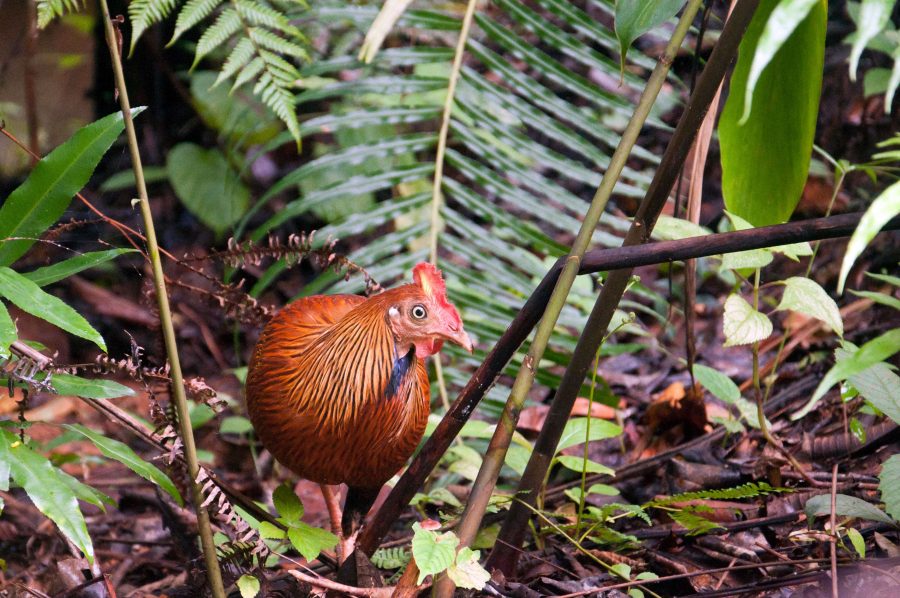
The Wonderful Endemic Bird Species in Sri Lanka!
Are you looking for a holiday destination that would pamper you with all the comforts and fascinations? If so, the island of Sri Lanka happens…
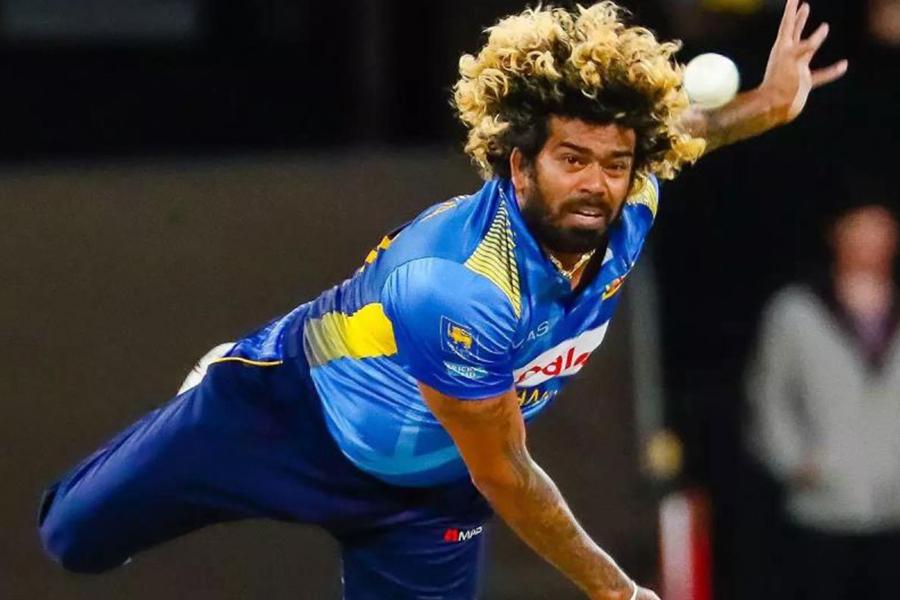
Lasith Malinga, the Wonderful Cricketer with true passion!
The bond that Sri Lanka has with cricket is simply inseparable. It undoubtedly happens to be a reason that took the name of this splendid…
Privacy Overview

IMAGES
VIDEO
COMMENTS
Esala Perahera (A-suh-luh peh-ruh-ha-ruh) is a grand festival in the month of Esala held in Sri Lanka. [1] Happening in July or August in Kandy, it has become a unique symbol of Sri Lanka. It is a Buddhist festival consisting of dances and richly decorated elephants. There are fire-dances, whip-dances, Kandyan dances and various other cultural ...
Sri Lanka's regional festivals showcase a harmonious blend of religious piety, vibrant rituals, and communal unity. Each festival, unique to its specific locale, weaves a compelling narrative of Sri Lanka's cultural mosaic, inviting travellers and enthusiasts alike to immerse themselves in the enchanting tapestry of the island's traditions.
Date: October or November. Where: Throughout the island. 8. Duruthu Perahera. This festival in Sri Lanka marks the beginning of the Buddhist New Year and is known for one of the country's largest and most beautiful processions. Duruthu Perahera commemorates Buddha's first visit to Sri Lanka 2500 years ago.
Vesak Poya - Festival of lights. Vesak is a cultural and religious festival in Sri Lanka, and also the most sacred festival for Buddhists. The event celebrates the birth, enlightenment, and death of Gautama Buddha (Sakyamuni) who is the great founder of Buddhism. Vesak is the Poya festival falling on the full moon day in the lunar month of ...
Key Takeaways. The Esala Perahera Festival is a vibrant celebration in Sri Lanka that showcases the country's rich cultural heritage.; It has a long history dating back centuries and has evolved over time, blending ancient traditions with modern influences.; The festival is deeply rooted in Buddhism and includes religious rituals and ceremonies to honor the Sacred Tooth Relic of Buddha.
The Sanskrit term 'Nava-rathri' stands for nine-nights and is a celebration devoting three days each for the Hindu deities Durga, Lakshmi and Saraswathi. Devotees venerate the goddesses for ...
The May full moon poya day or Vesak is the most important religious celebration in Sri Lanka, where Buddhists celebrate the nativity, enlightenment and passing away of Lord Buddha with many celebrations. In August are the Esala festivals in Kandy and Kataragama. The Kataragama Esala Festival is a multi-religious festival where devotes use fire ...
Poson, also known as Poson Poya, is an annual festival held by Sri Lankan Buddhists celebrating the arrival of Buddhism in Sri Lanka in the 3rd century BC. [1] [2] The festival is the most important Poya (full moon) holiday of the year and the second most important Buddhist holiday of the year, being surpassed in importance by Vesak. [3]
The aim of this research is to understand ideological setting caused to the heritagization of newly emerged set of Buddhist festivals in 21st century A.D Sri Lanka with special reference to ...
Vesak Poya. The Vesak Poya festival in Sri Lanka is the most important holiday for Buddhists in the country as it marks three important milestones in Buddha's life. These milestones include his birth, enlightenment, and reaching nirvana when he had died. Celebrations for Vesak Poya take place across the island, with Colombo and Kandy flaunting the most impressive displays.
4. Maha Siva Rathri. Maha Siva Ratri, or the 'Great Night of Shiva', is indeed another fascinating festival of Hindus. Of course, there is a Shivaratri in every luni-solar month of the Hindu Calendar. Still, the festival of 'Maha Siva Rathri' is celebrated once a year, specifically on a day in February or March.
The festivals in Sri Lanka are rich in religious culture and local historical customs. So, if you want to get an immersive experience of Sri Lanka's culture, come to join their festivals. ... Since 2018, the Love Sri Lanka Festival has drawn many tourists as one of the most acclaimed cultural events commemorating the 70th anniversary of Sri ...
Deepavali is the third day out of the five. Hindus celebrate this day on the New Moon. This is the festival's most significant day for most Tamils and is the last day of the year. As per history, King Rama rescued his wife, Sita, from the evil Ravana and returned home on this day, after a long exile.
The aim of this research is to understand ideological setting caused to the heritagization of newly emerged set of Buddhist festivals in 21st century A.D Sri Lanka with special reference to Kanchuka puja festival. In depth interviews and netnography was applied as methods for data collection of the study.
Suggested Read: 25 Best Places To Visit In Kandy In 2022 - Sri Lanka's Spiritual Capital. 4. Navam Perahera. Navam Perahera is the main festival in Sri Lanka which is a mix of colours, parades, and traditions. In 1979, Navam Perahera was celebrated for the first time in the Gangaramaya temple in Colombo.
Religion plays an important role in Sri Lankan Culture. The majority of Sri Lankans are Buddhist, and Buddhism has had a profound influence on the country's culture. Other important religions in Sri Lanka include Hinduism, Islam, and Christianity. Sri Lankan Culture is also reflected in the country's art, architecture, and sculptures.
Considered one of the best ways to experience the true Sri Lankan spirit, the following 12 festivals are some of the most appealing ones to experience. 1. Duruthu Perahera. 2. Thai Pongal Festival. 3. Independence Day. 4. Maha Shivarathri Festival.
Vesak Festival is another festival that has both cultural and religious significance for the Sri Lankan people. Mainly this is celebrated by Buddhists to commemorate the birth, enlightenment and passing away of Lord Buddha. On this day, most people observe sil. Children make Vesak lanterns and decorate the houses.
From religious festivals that highlight the beautiful culture and traditions of Sri Lanka, to exciting sport events, the diverse variety of events and festivals in Sri Lanka are an endless list. Vesak Poya Read more ». Kandy Esala Perehara Read more ». Thai Pongal Read more ». Deepawali Festival Read more ».
A Religious Festival in Sri Lanka Among the various religious festivals celebrated by Sri Lankans, Vesak is the most widely celebrated one. Vesak is celebrated by Buddhists. Buddhist people celebrate Vesak to mark the birth , enlightenment and passing away of Lord Buddha. Vesak is the most reverenti ... Purchase document to see full attachment.
UK 01892 515966. Destinations. Holiday Collections. Inspiration. About Us. Meet The Team. Reviews. Contact. With four major religions, diverse culture and no less than 25 public holidays, the teardrop island of Sri Lanka is a land of vibrant festivals and colourful celebrations.
Vesak Poya. Poson Poya. Vel Festival. Deepavali. Maha Shivarathri. Thai Pongal. Nallur Festival. National Day. Sri Lanka is an ideal holiday destination, not only because of the natural wonders spread across the island, but also the mix of cultures and religions.
The distance between Anuradhapura city and Mihintale town is 10.17 km. There is a walking distance from Mihintale town to the Mihintale rock. The rock is nearly 311 meters (1019 feet) above sea level. Thus, Mihintale is of enormous religious and historical importance as a town in the cultural triangle.